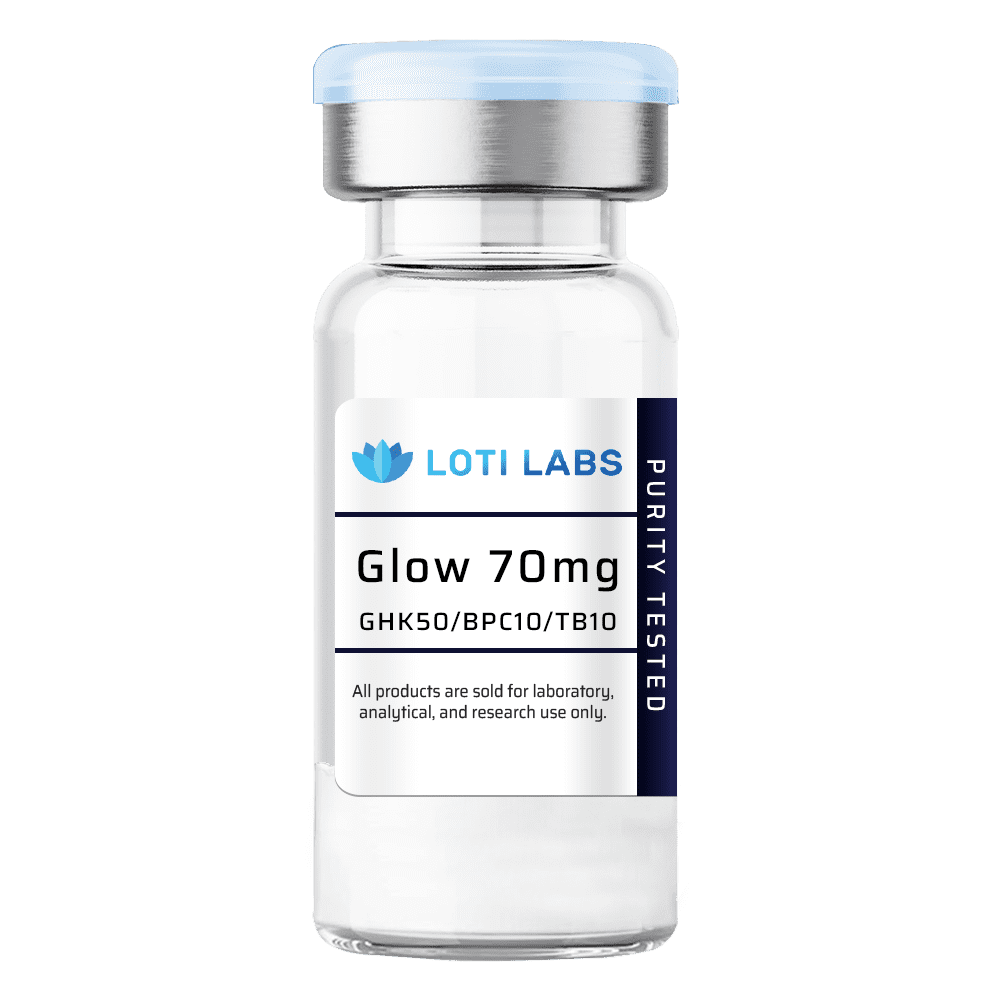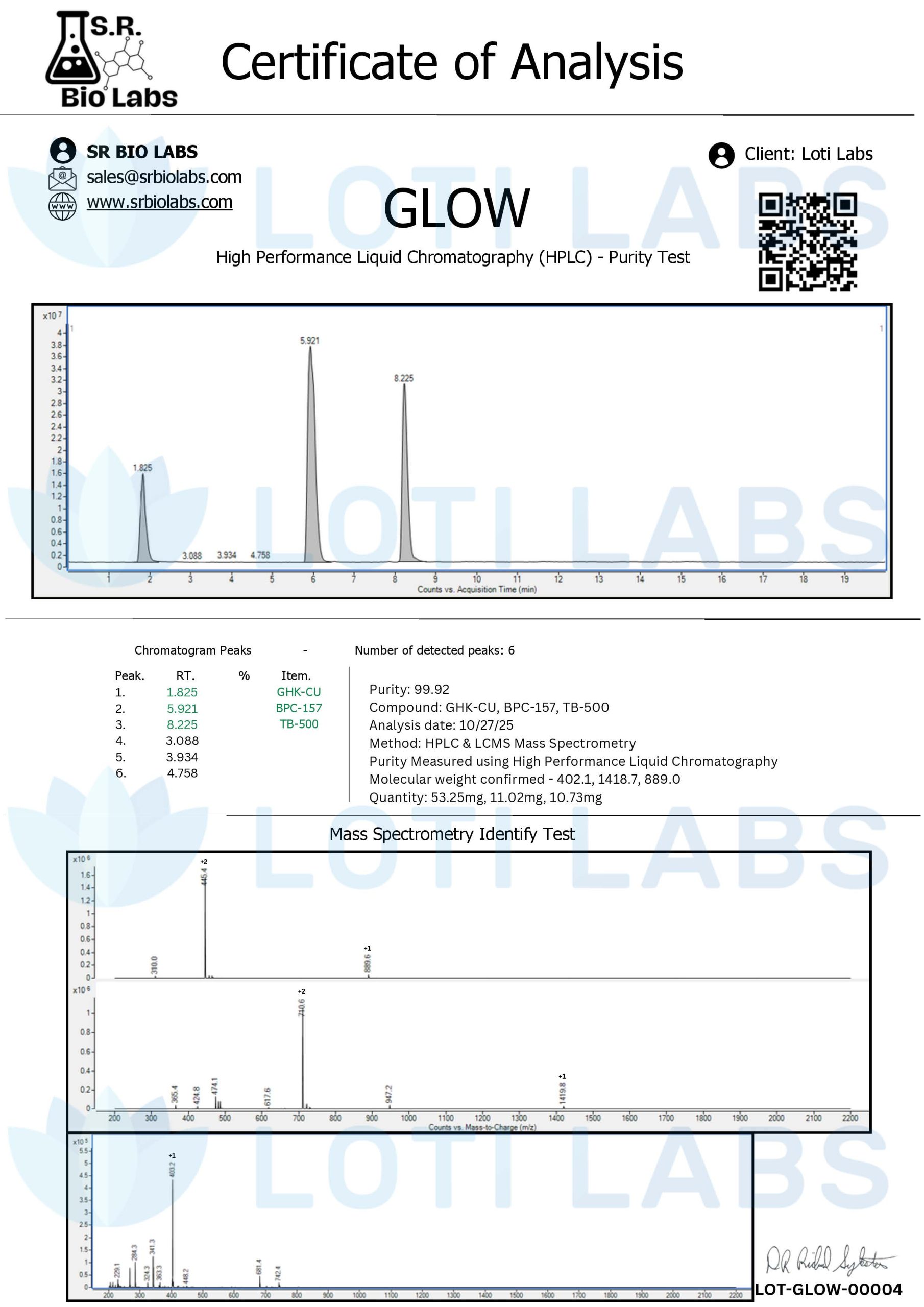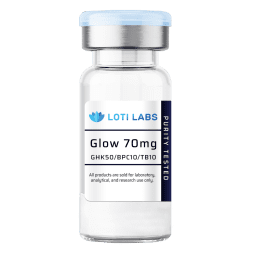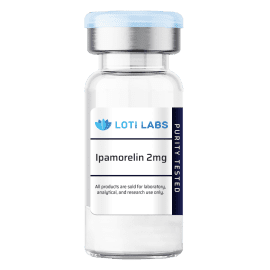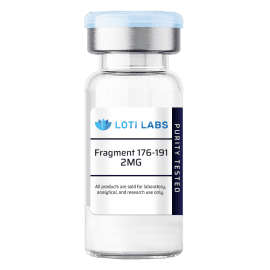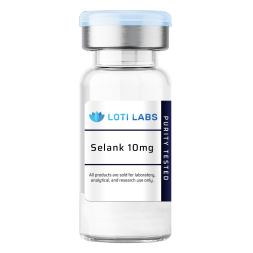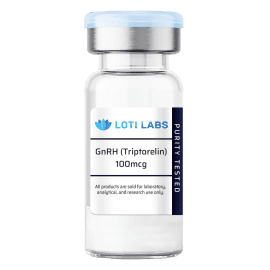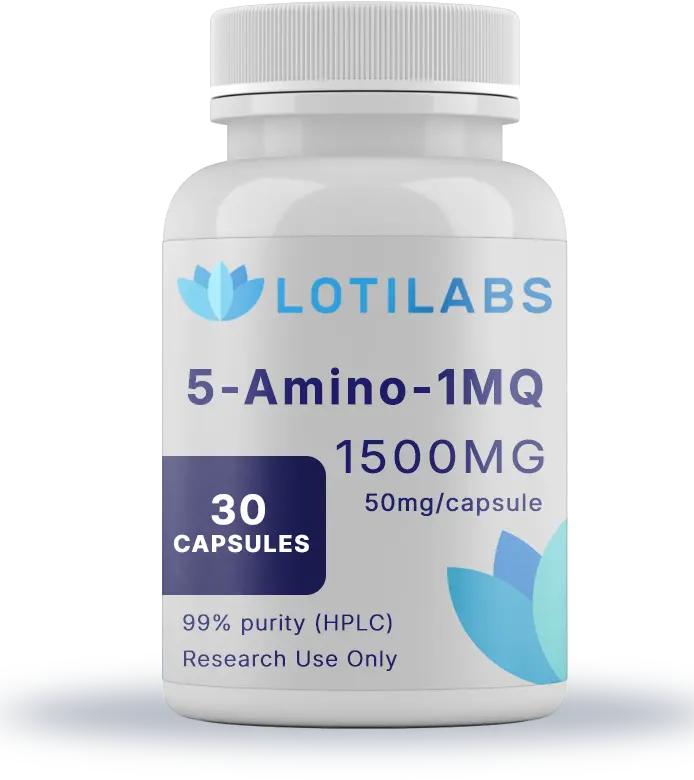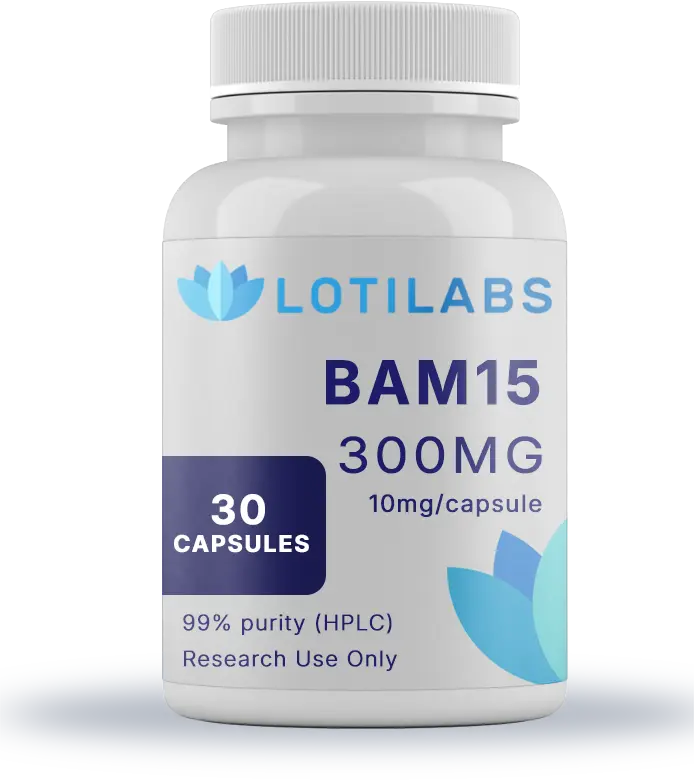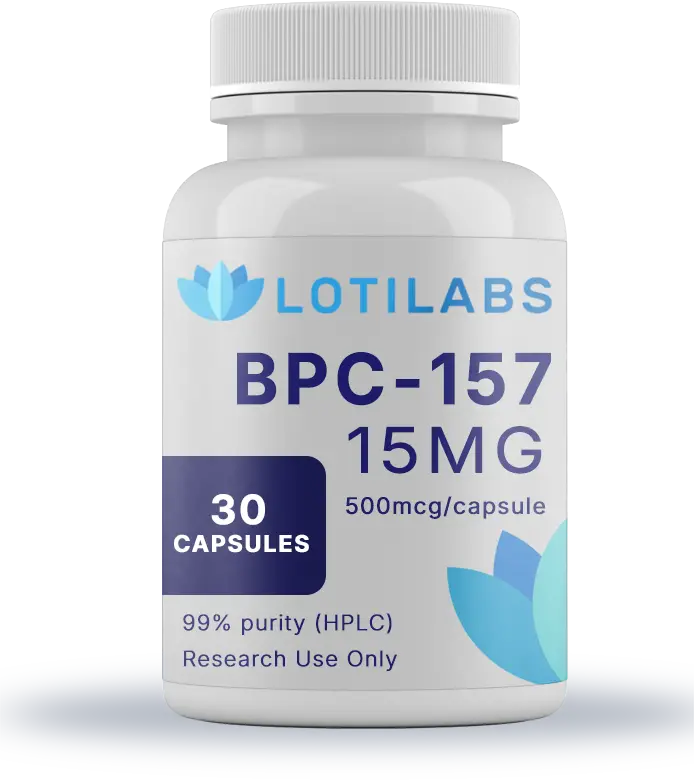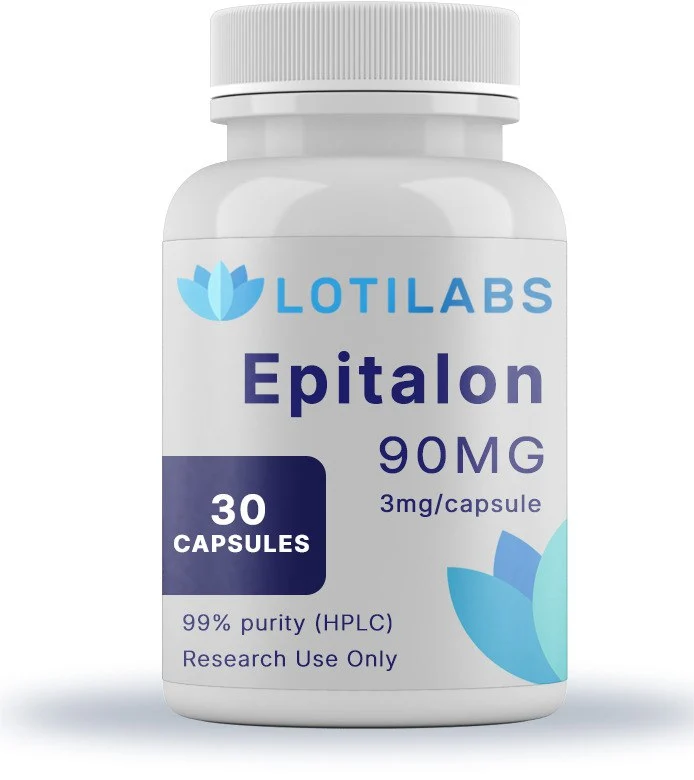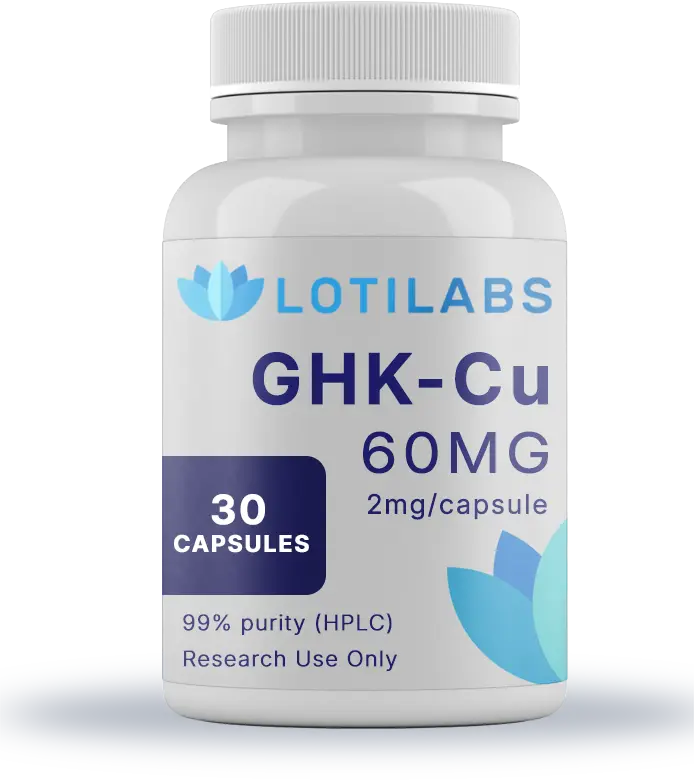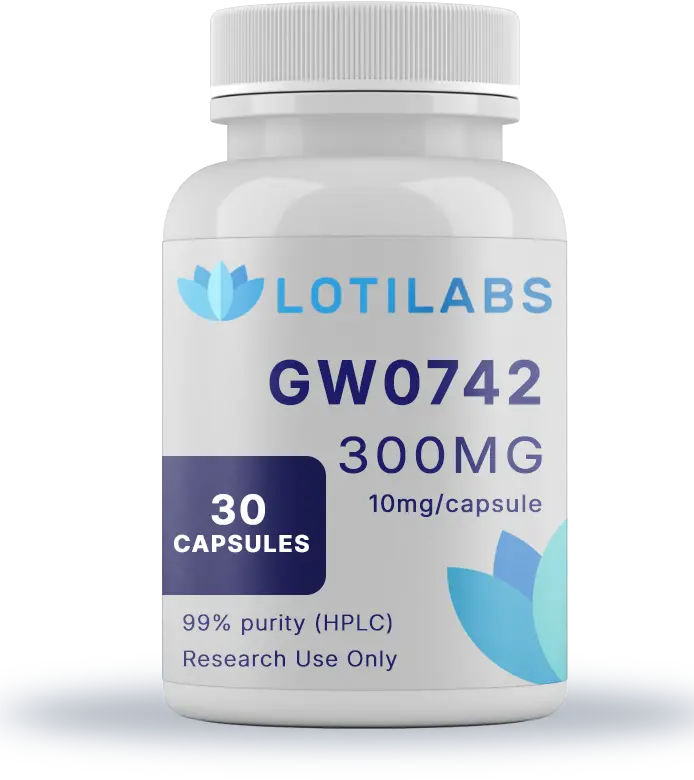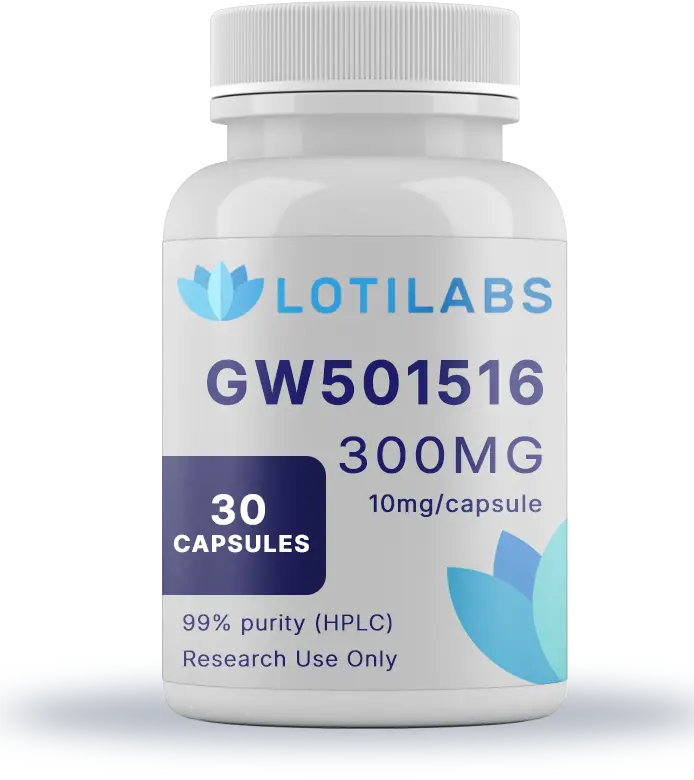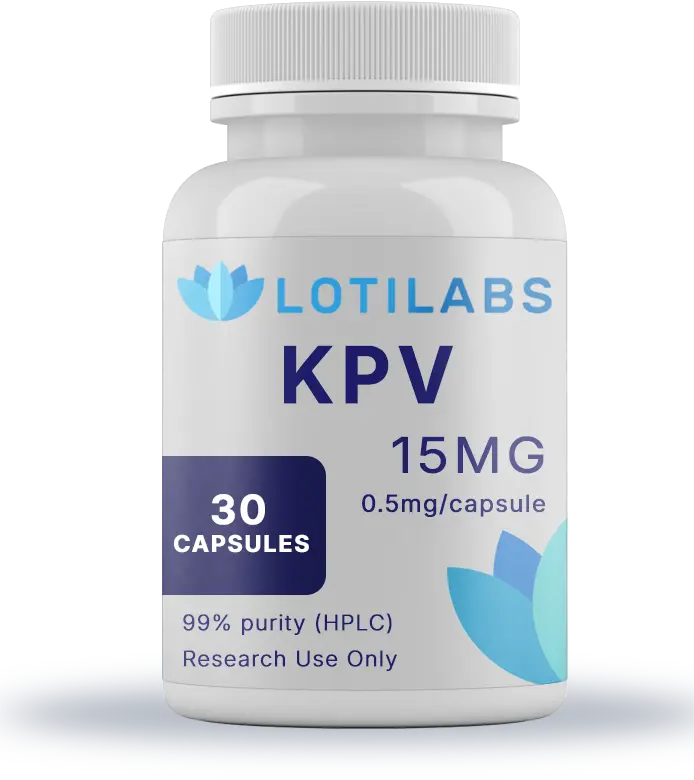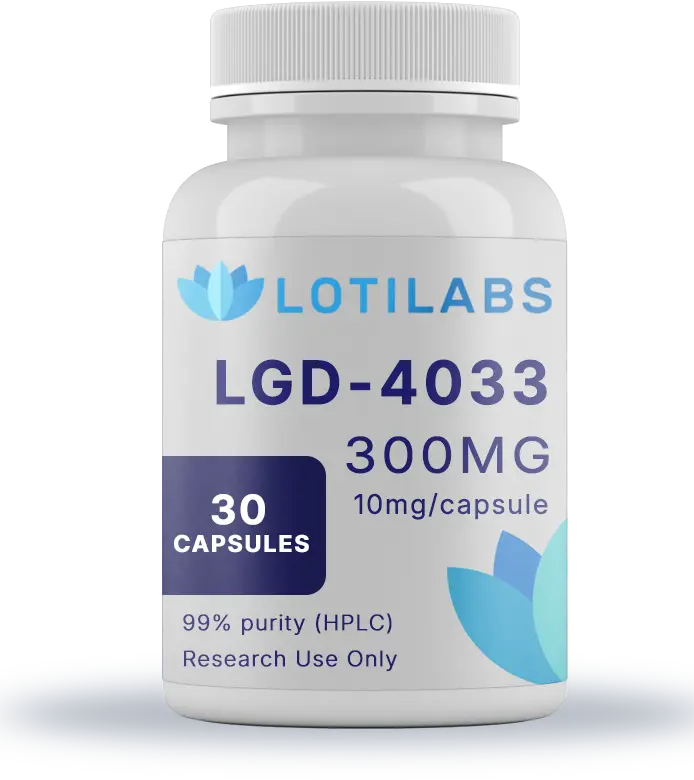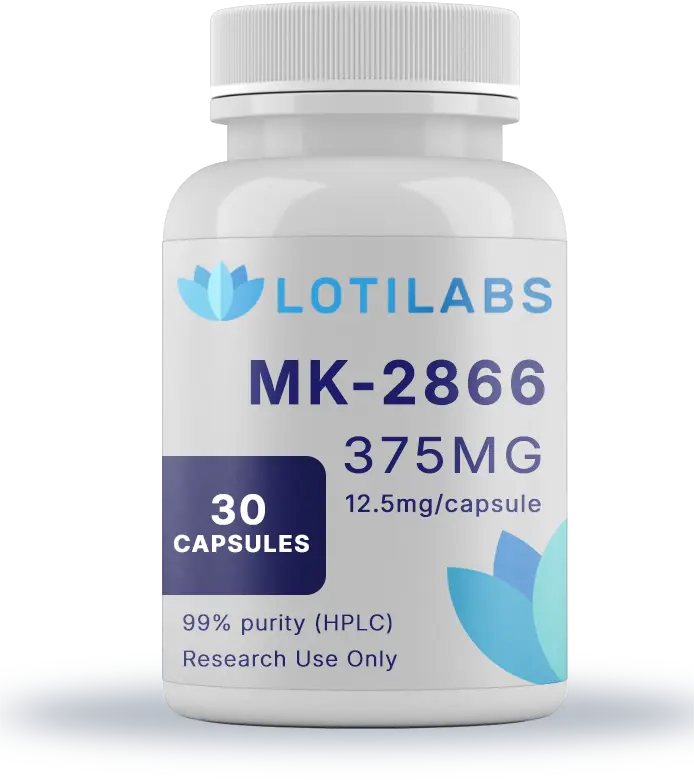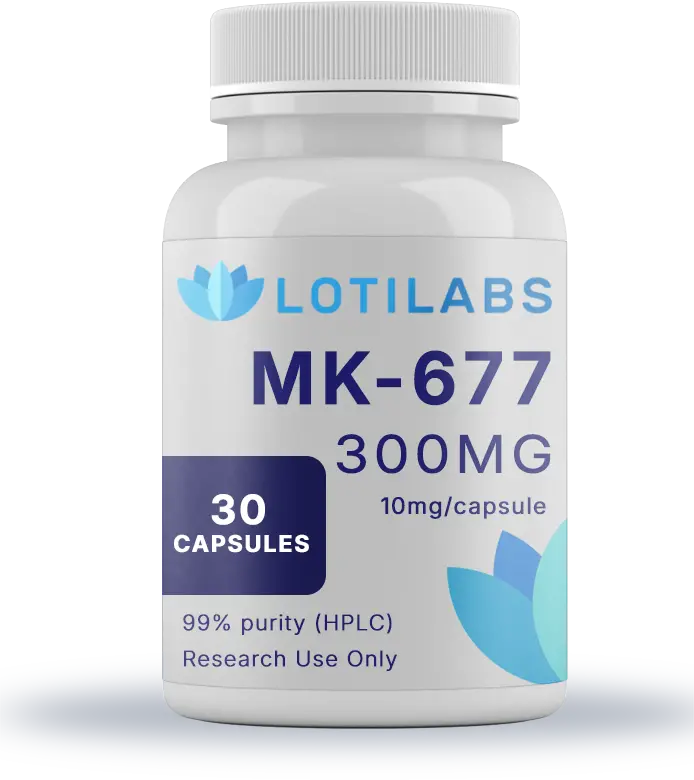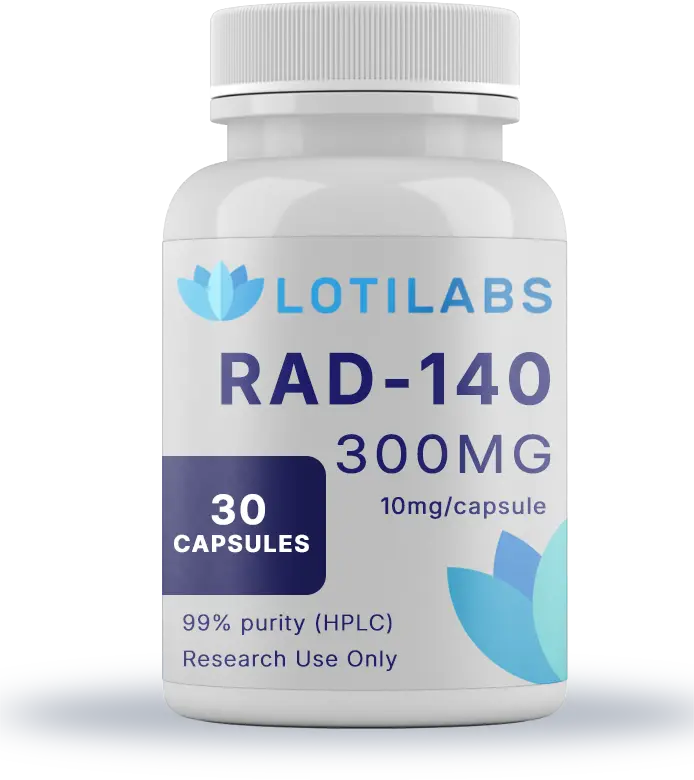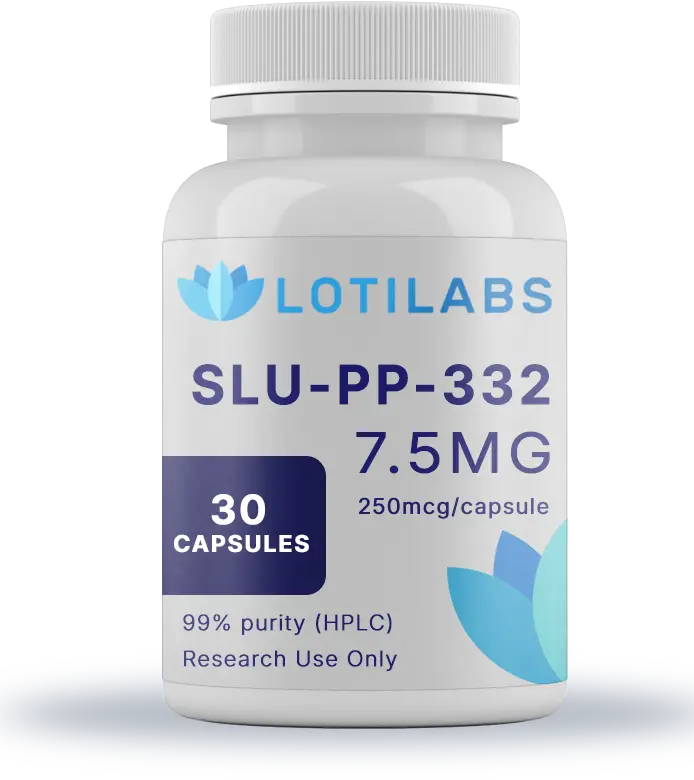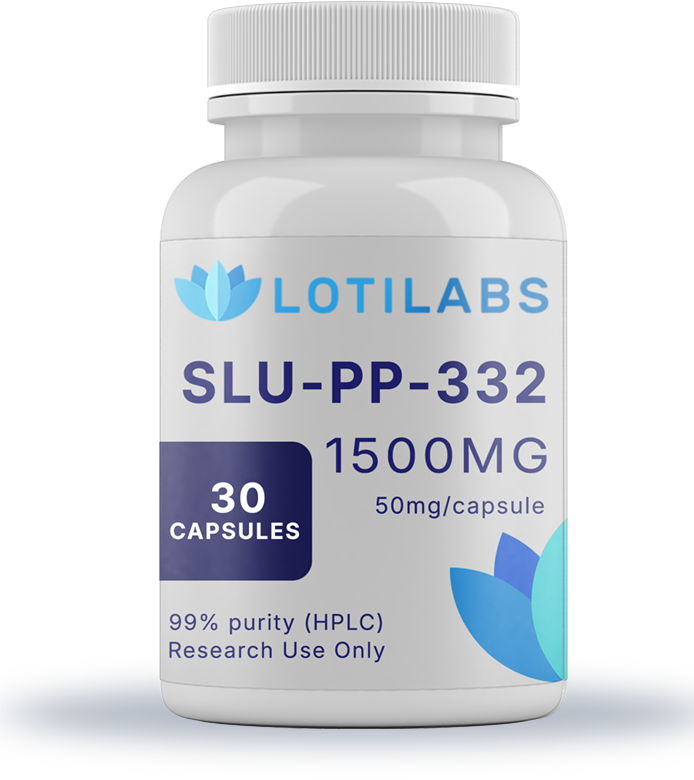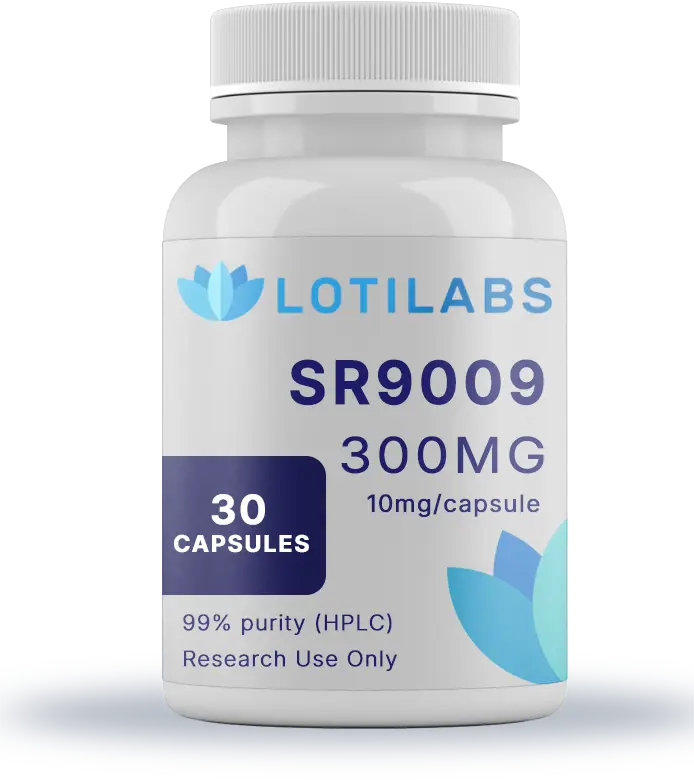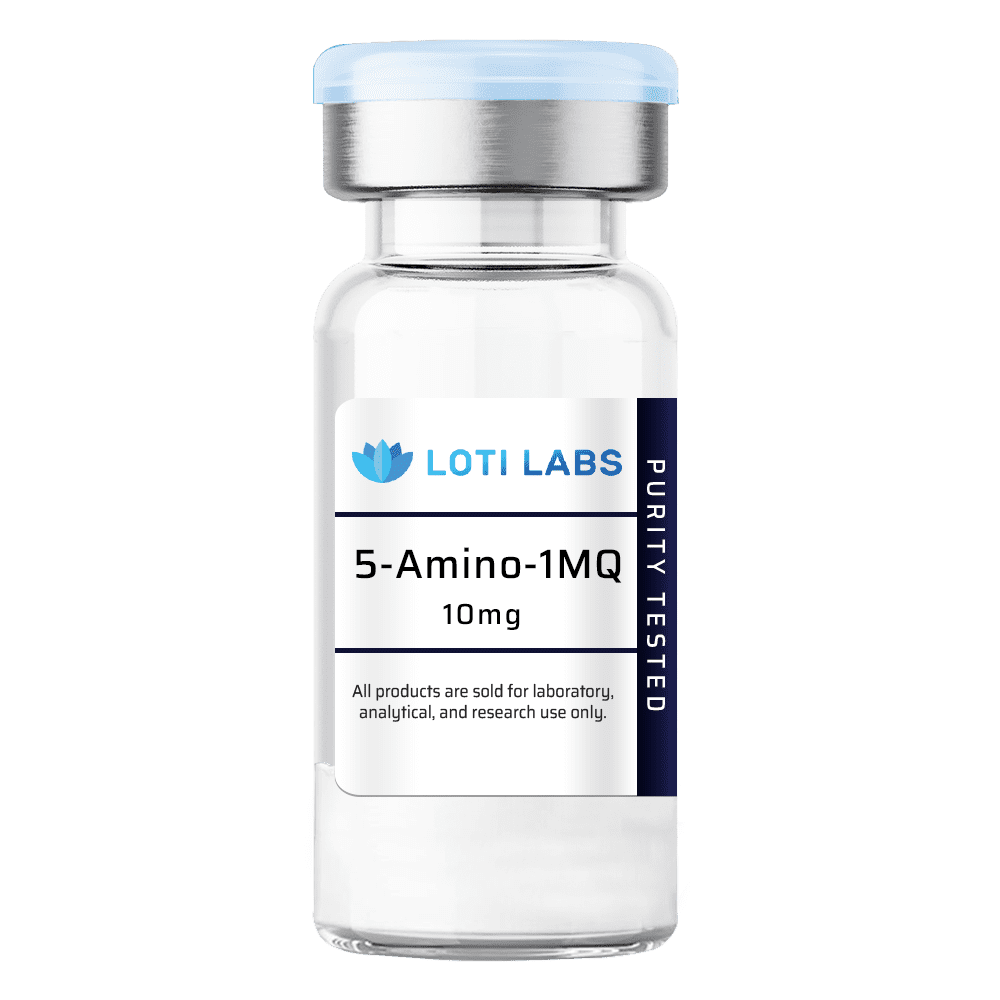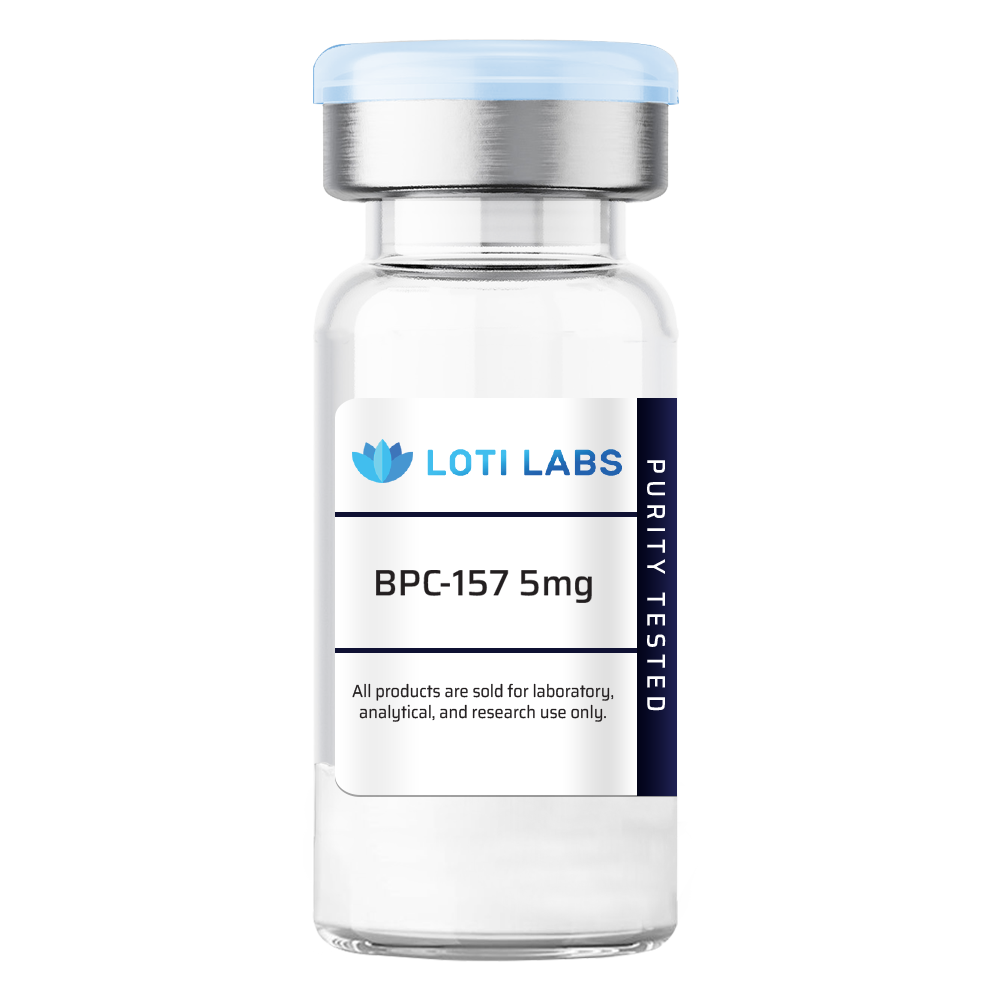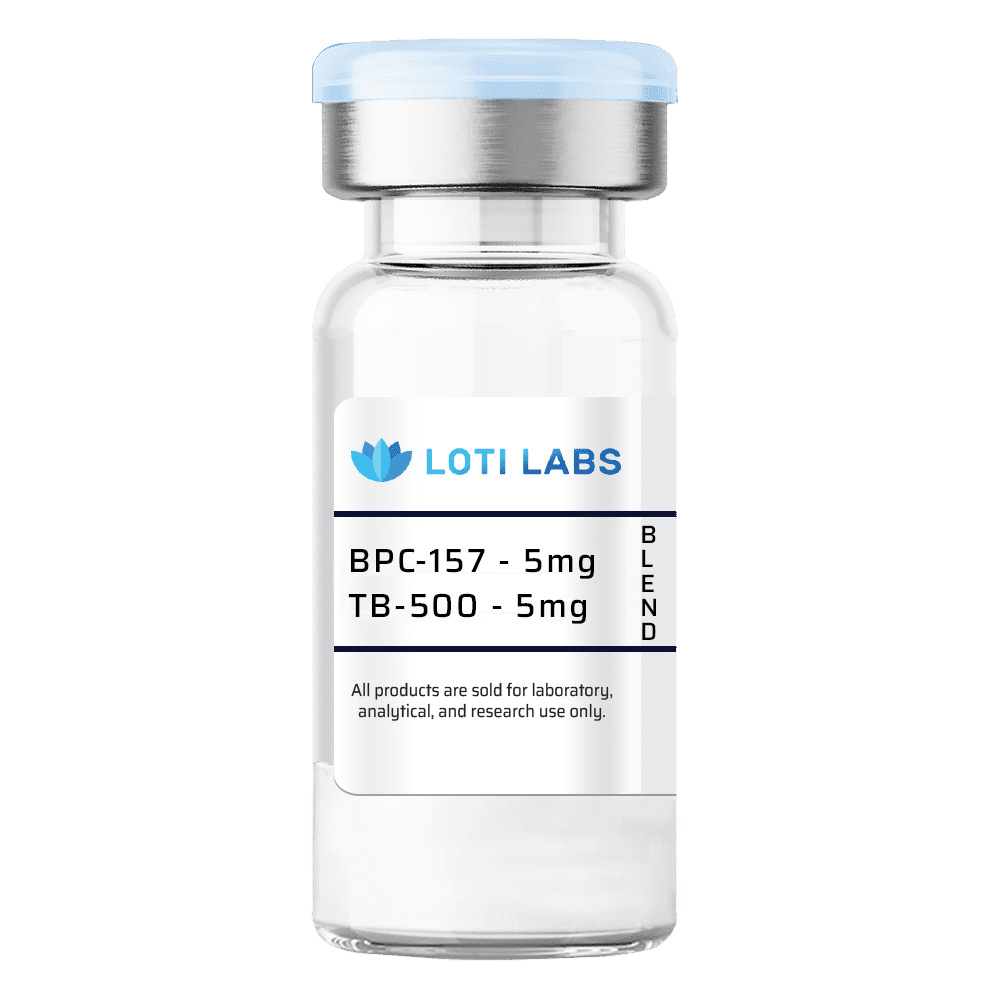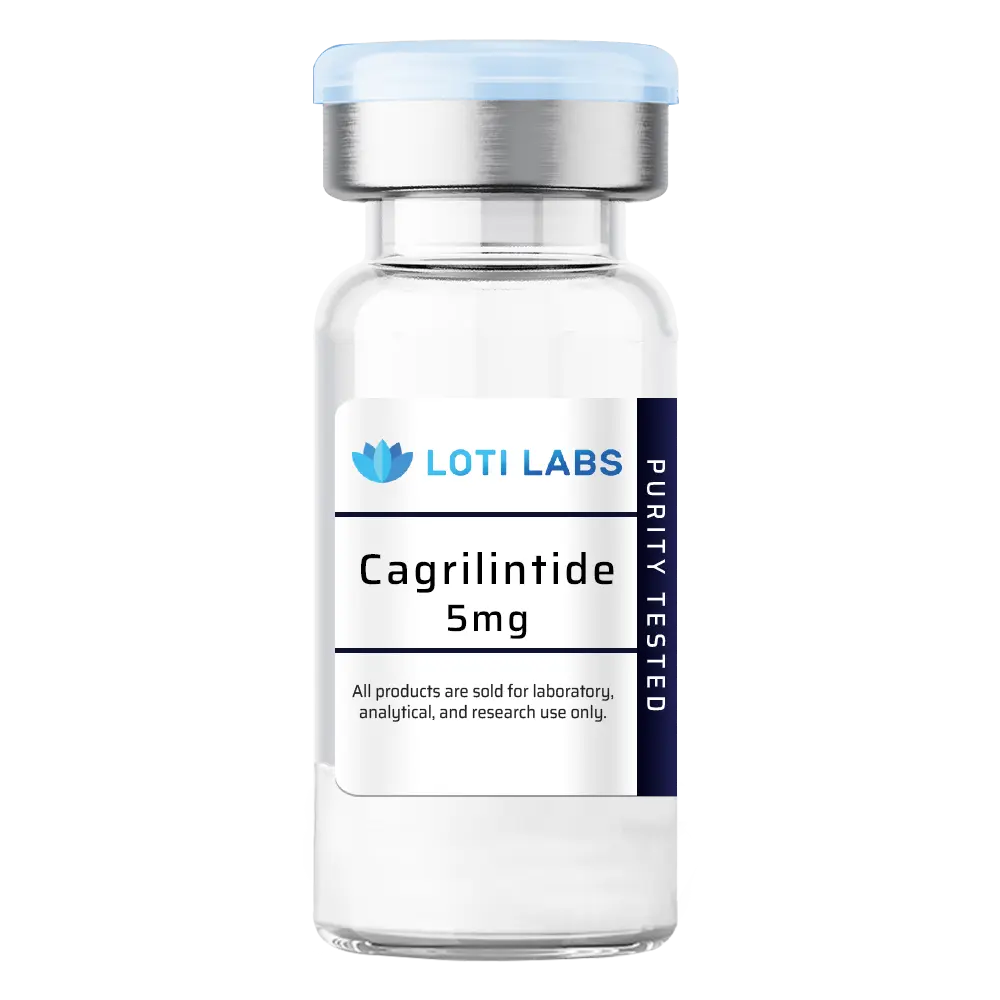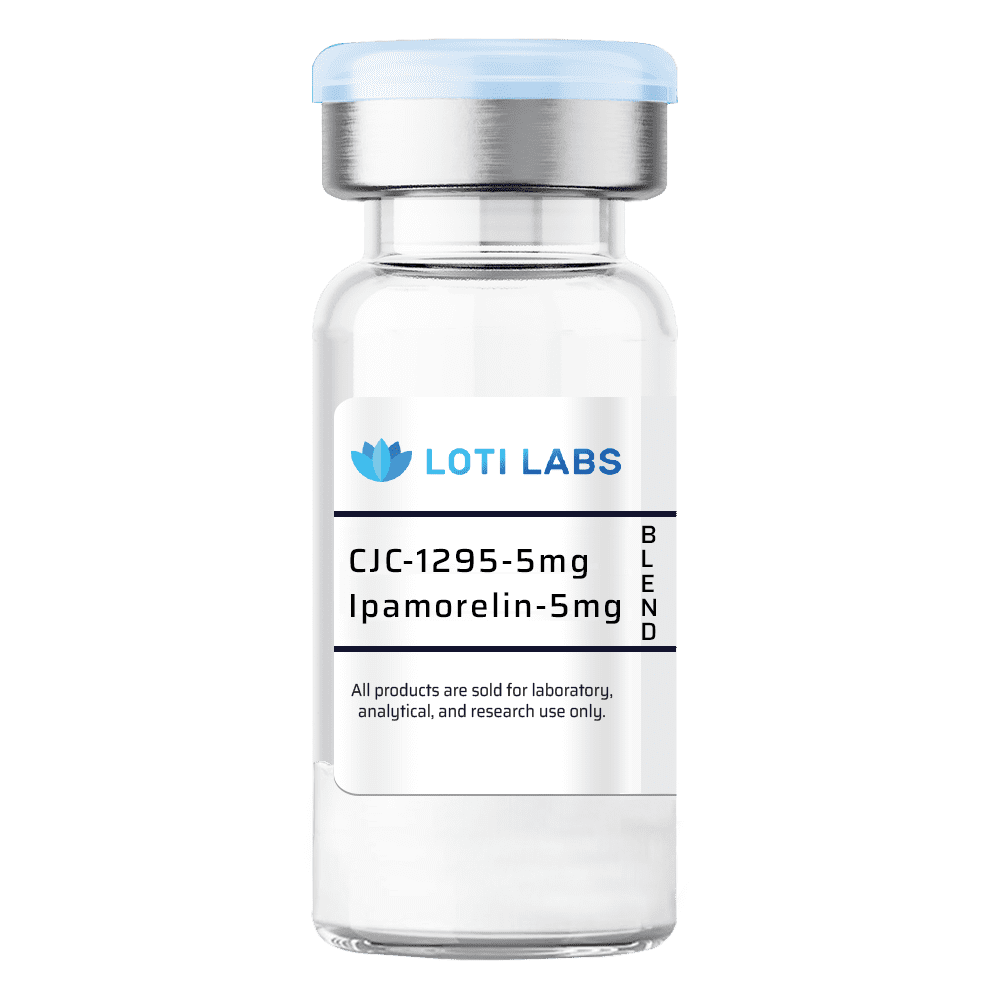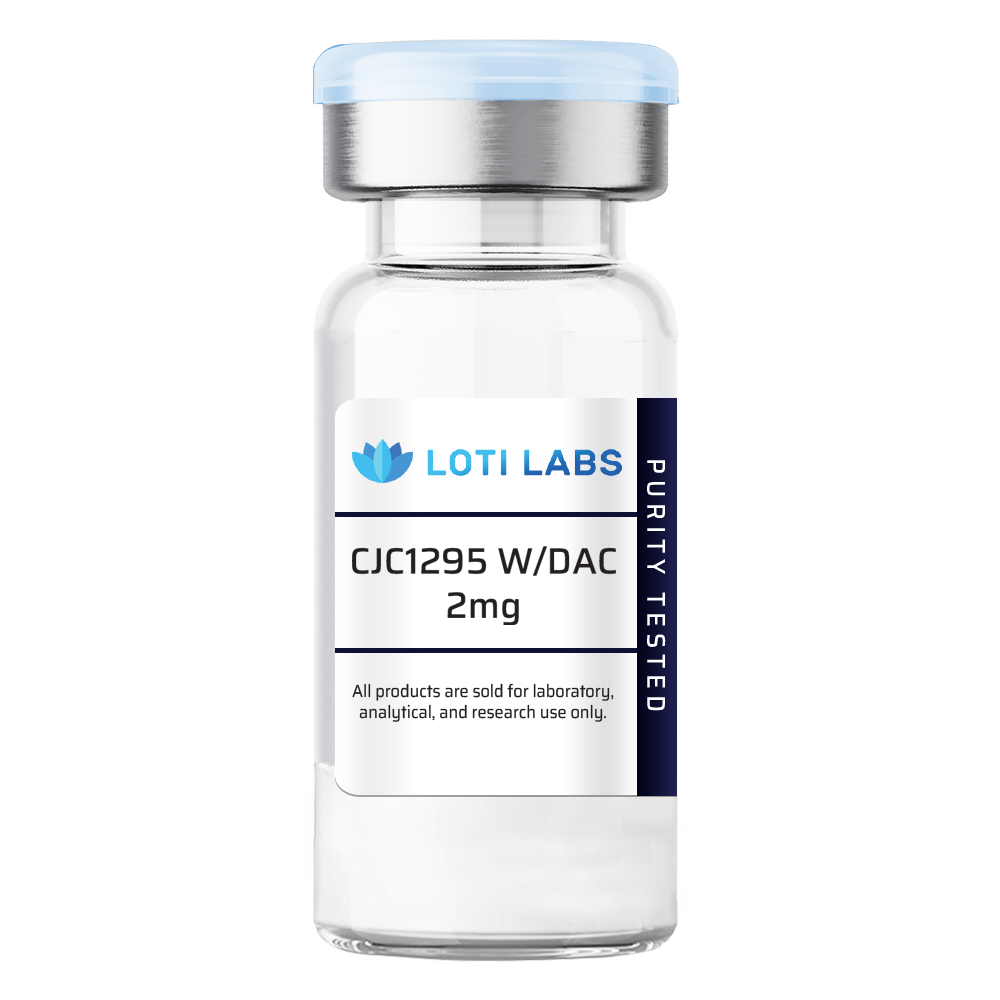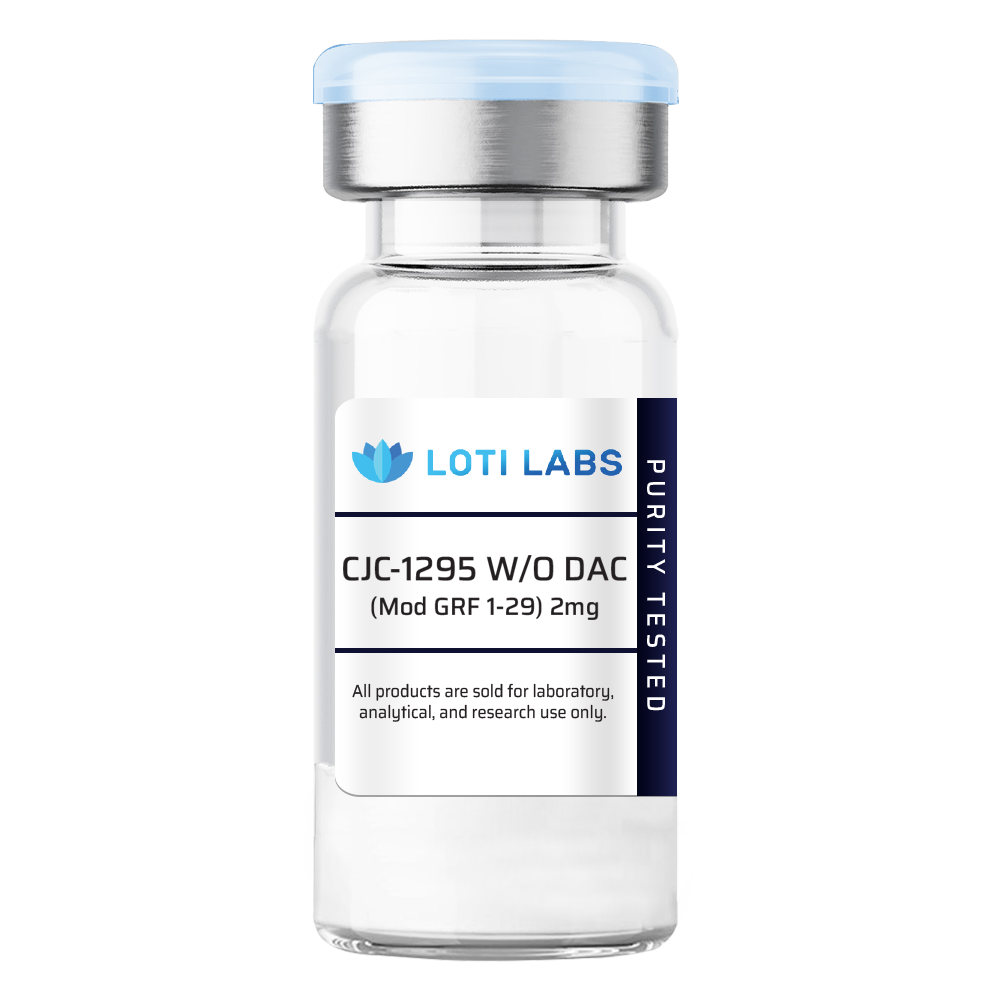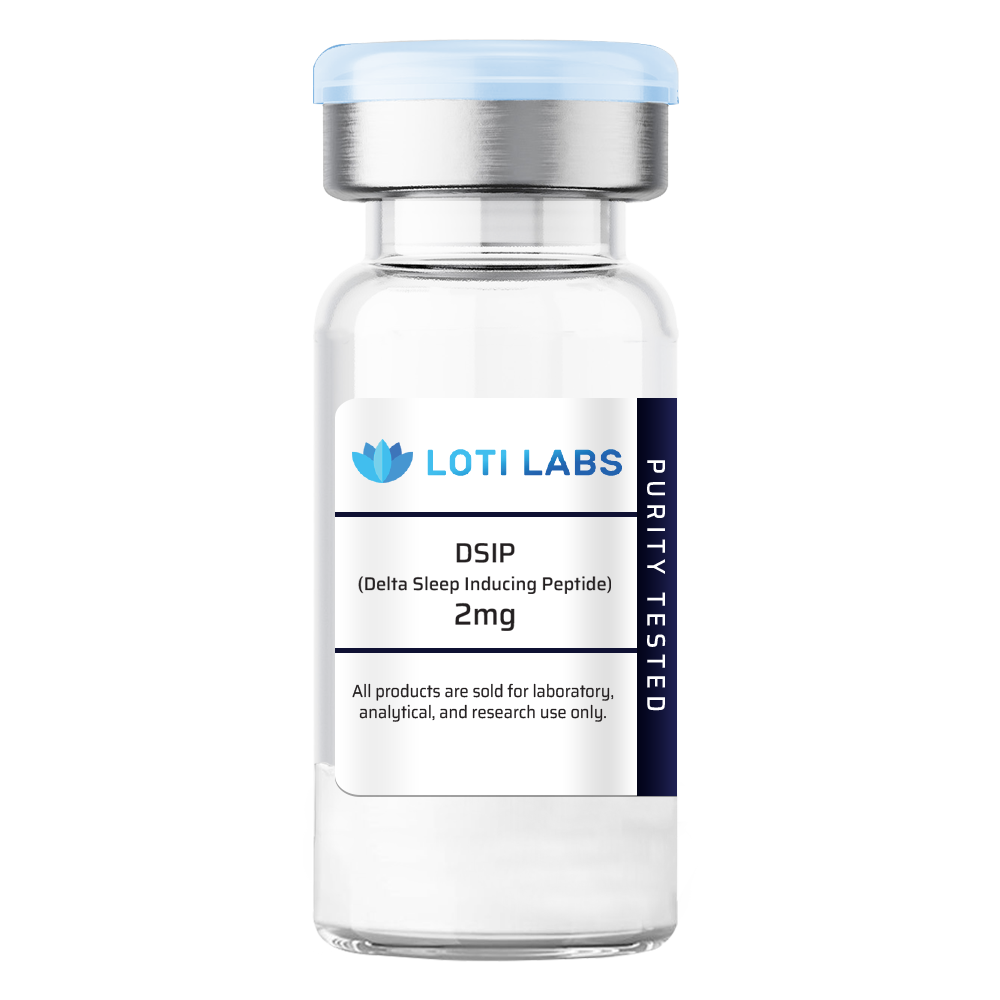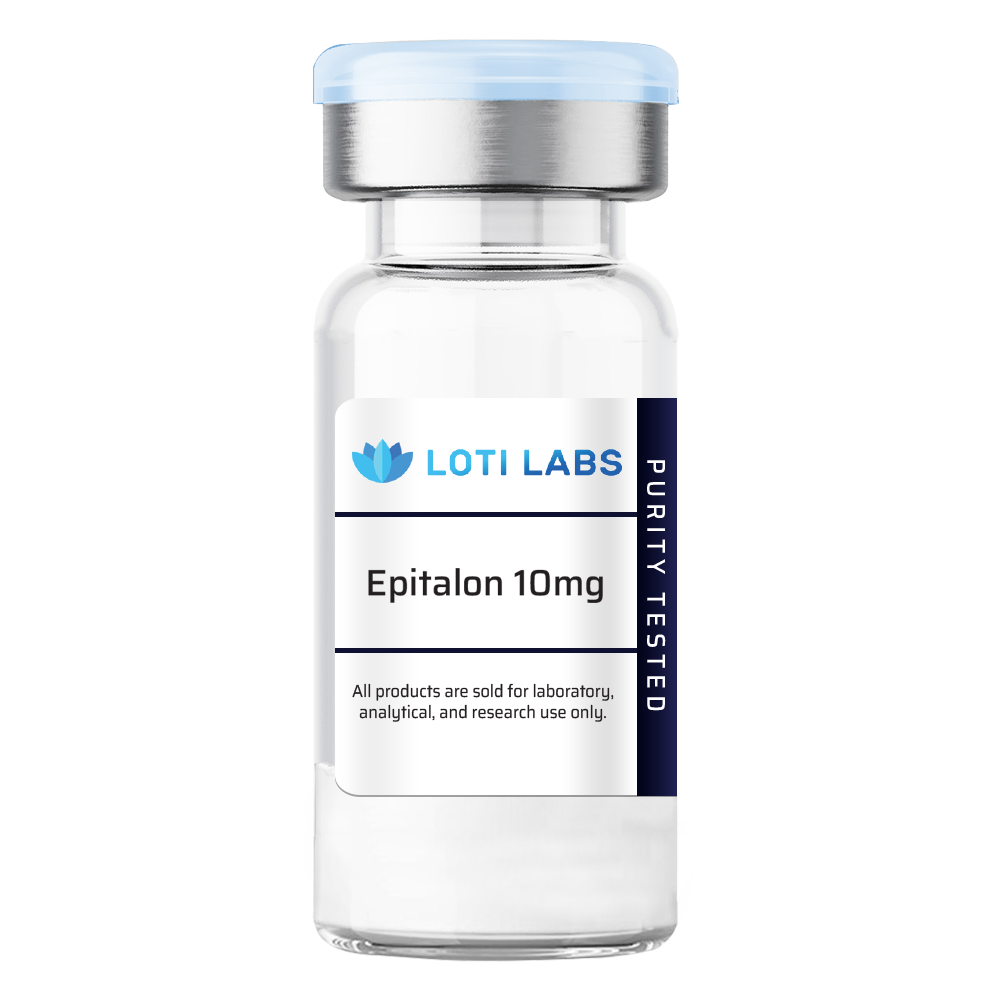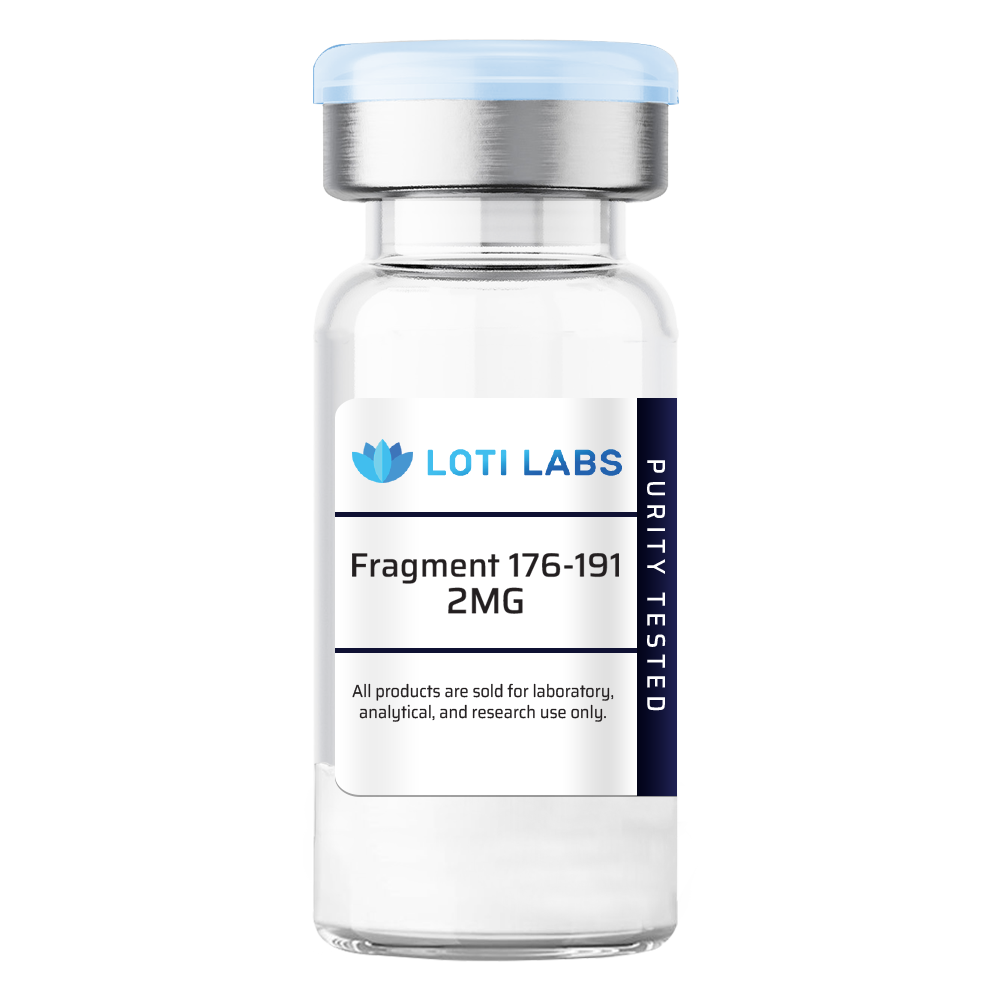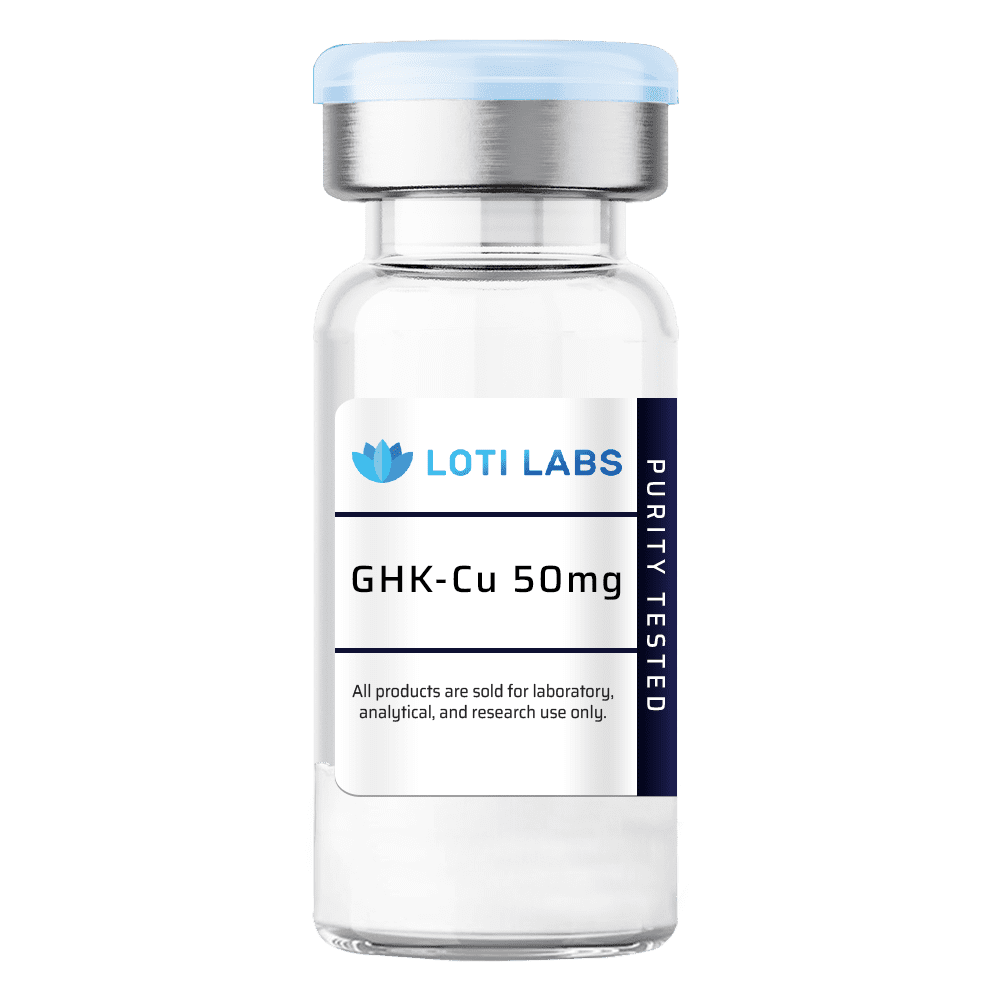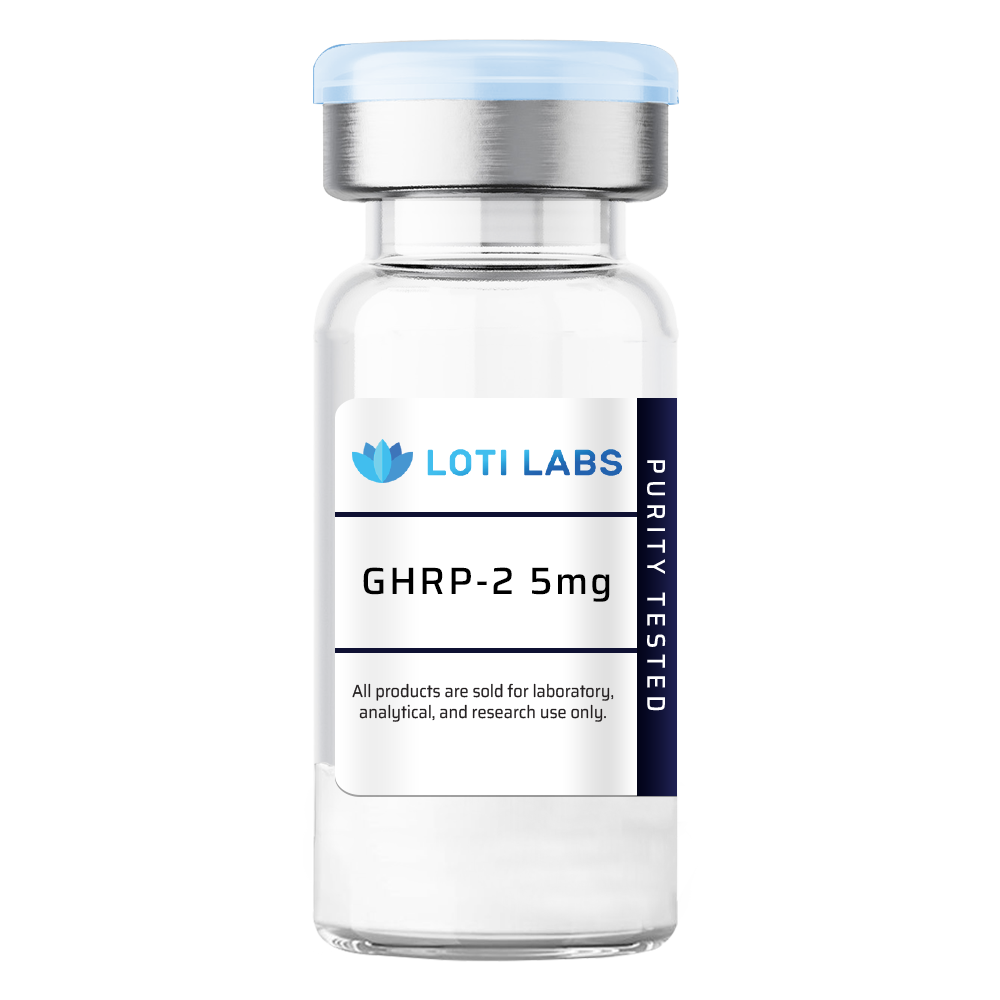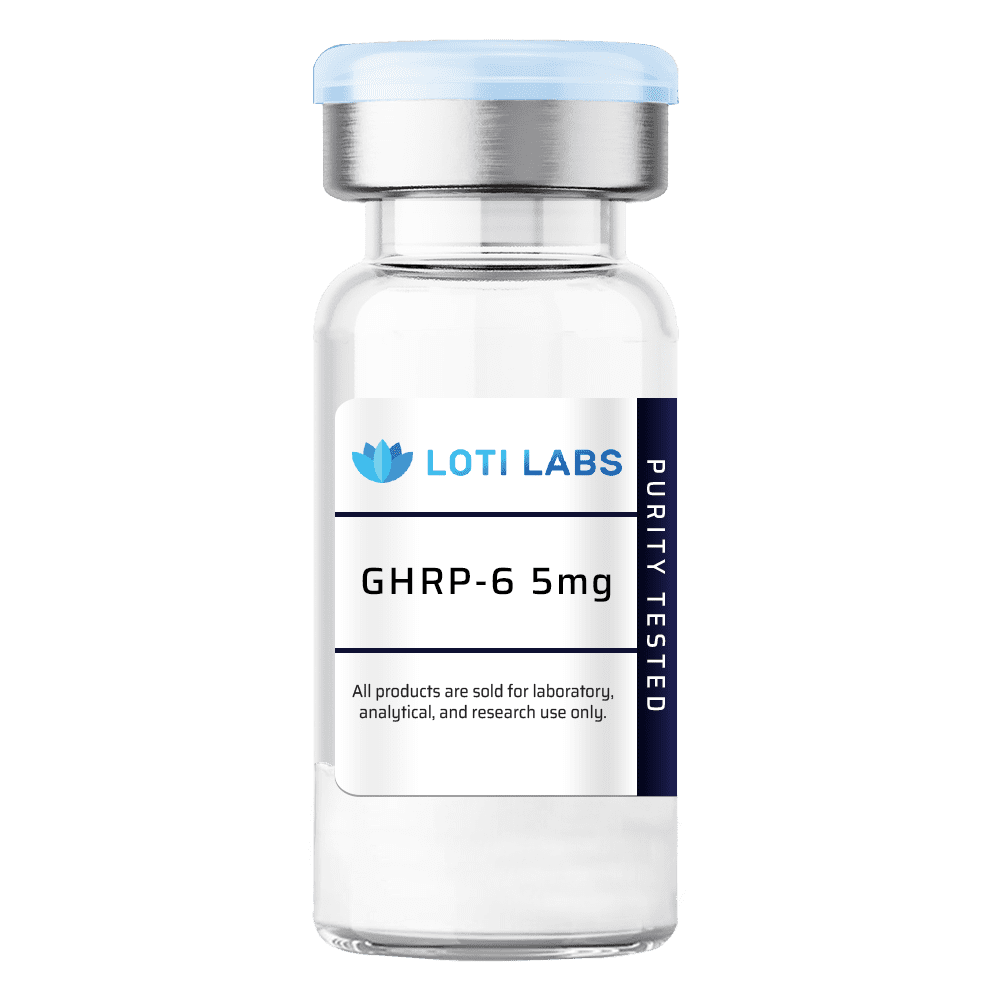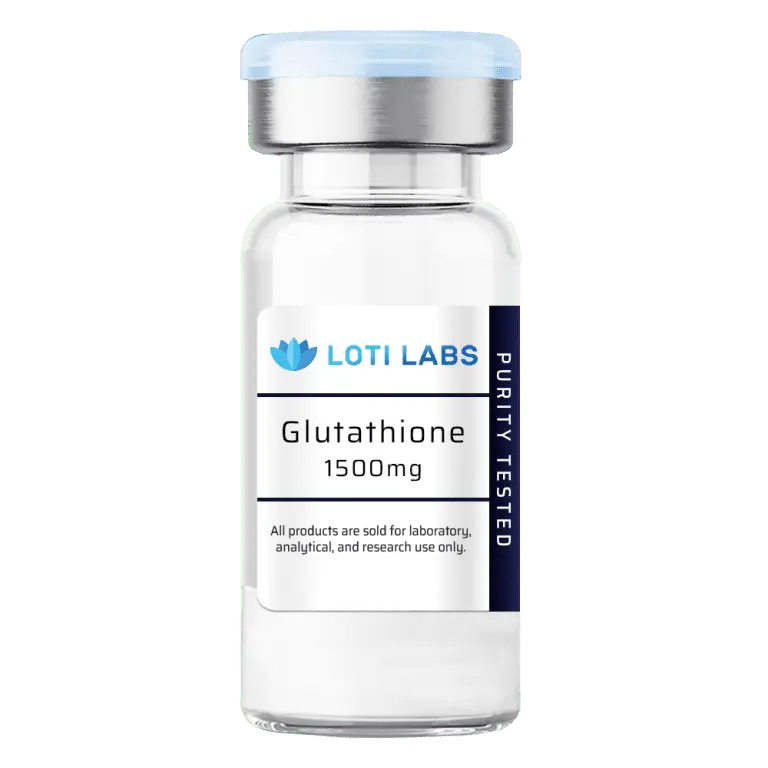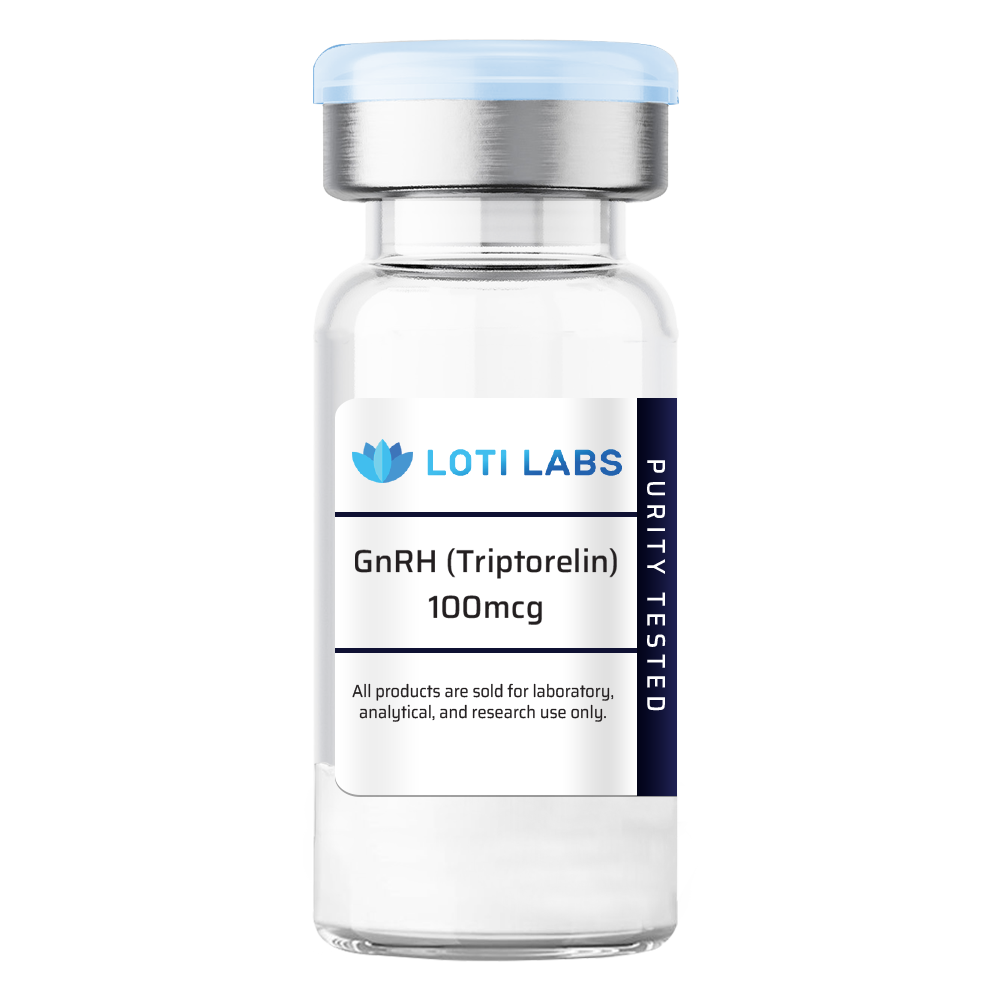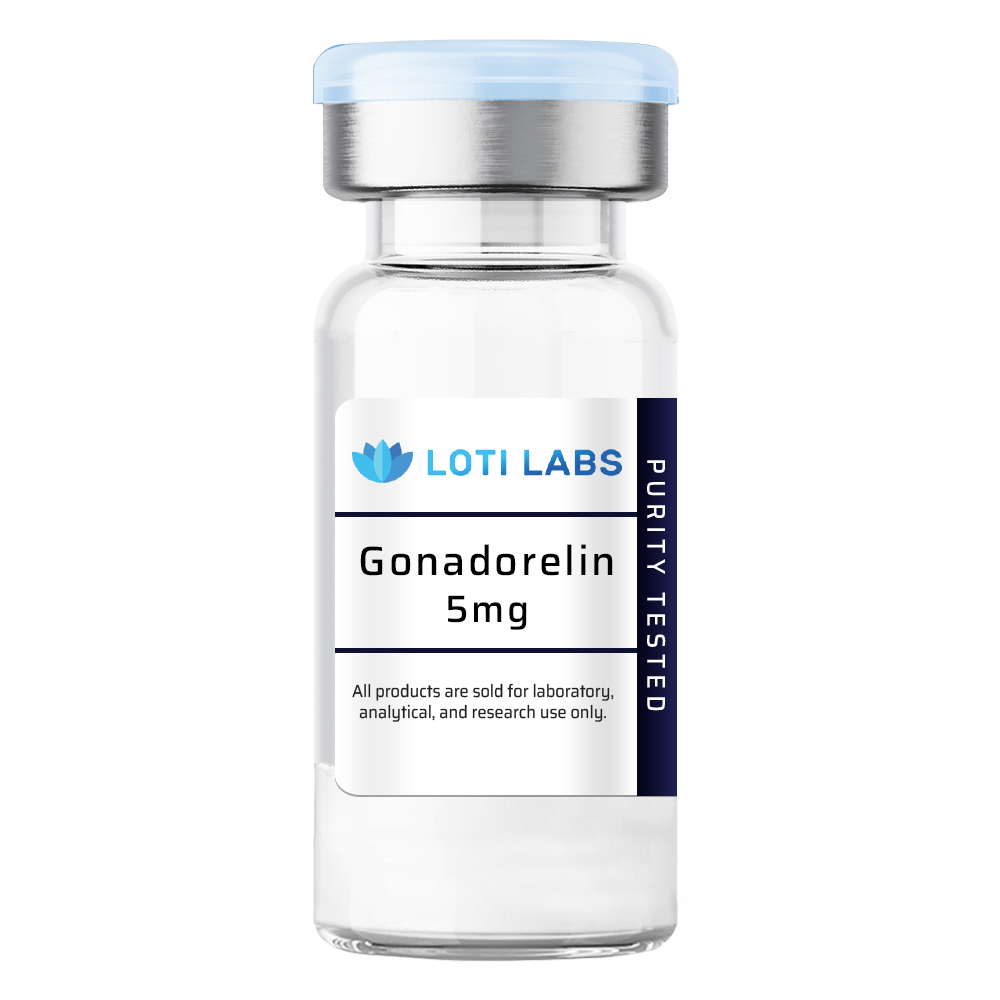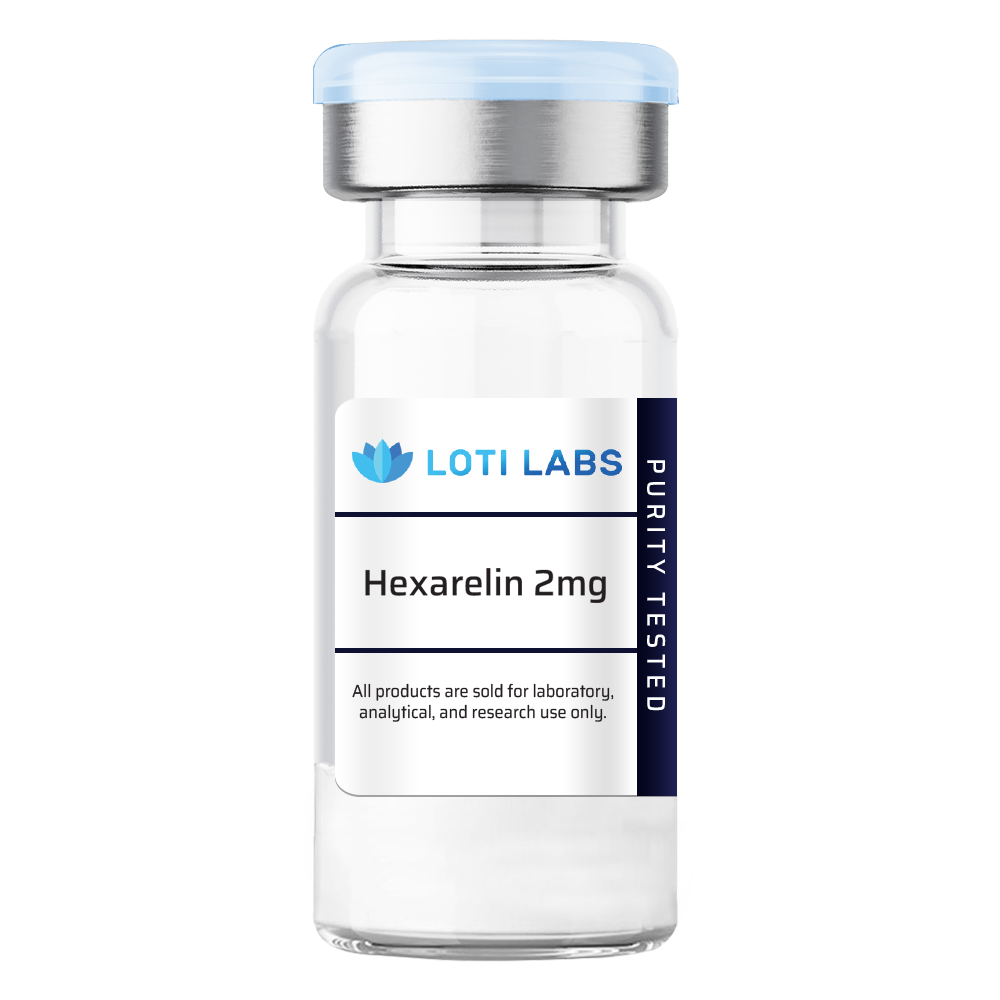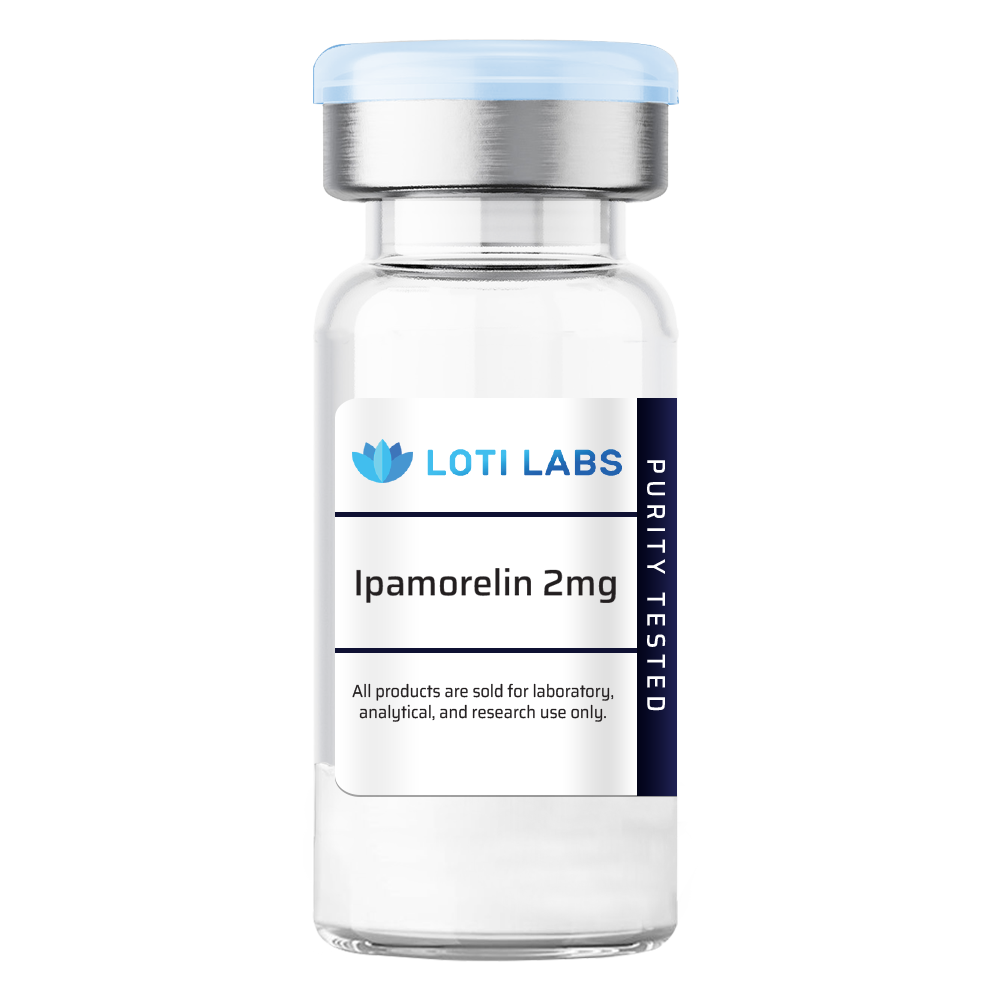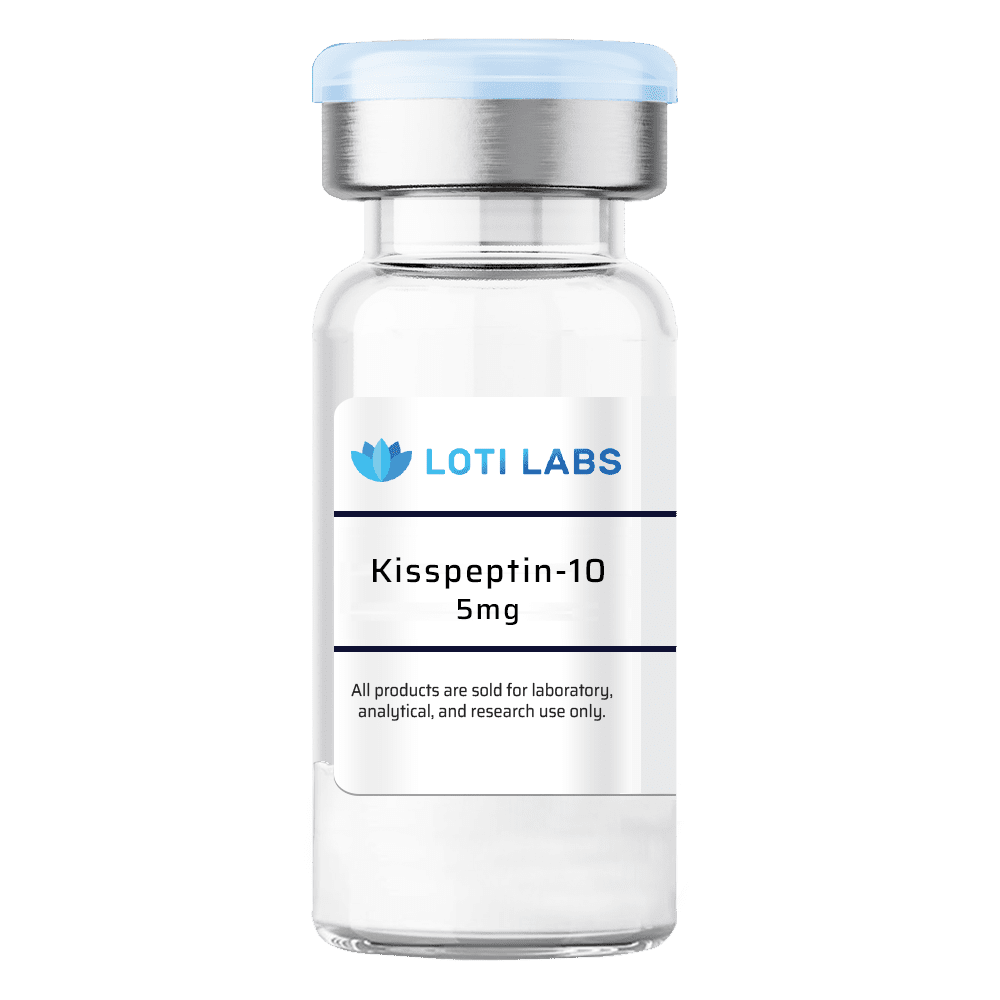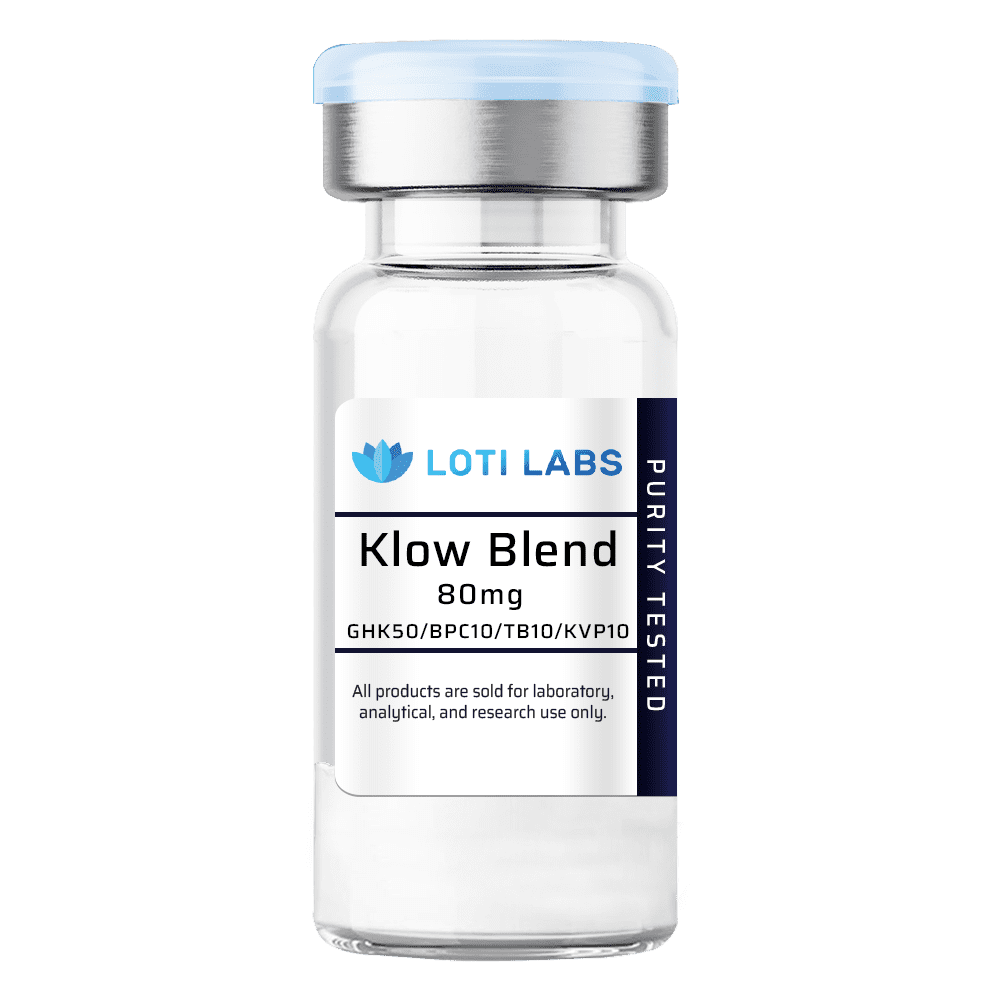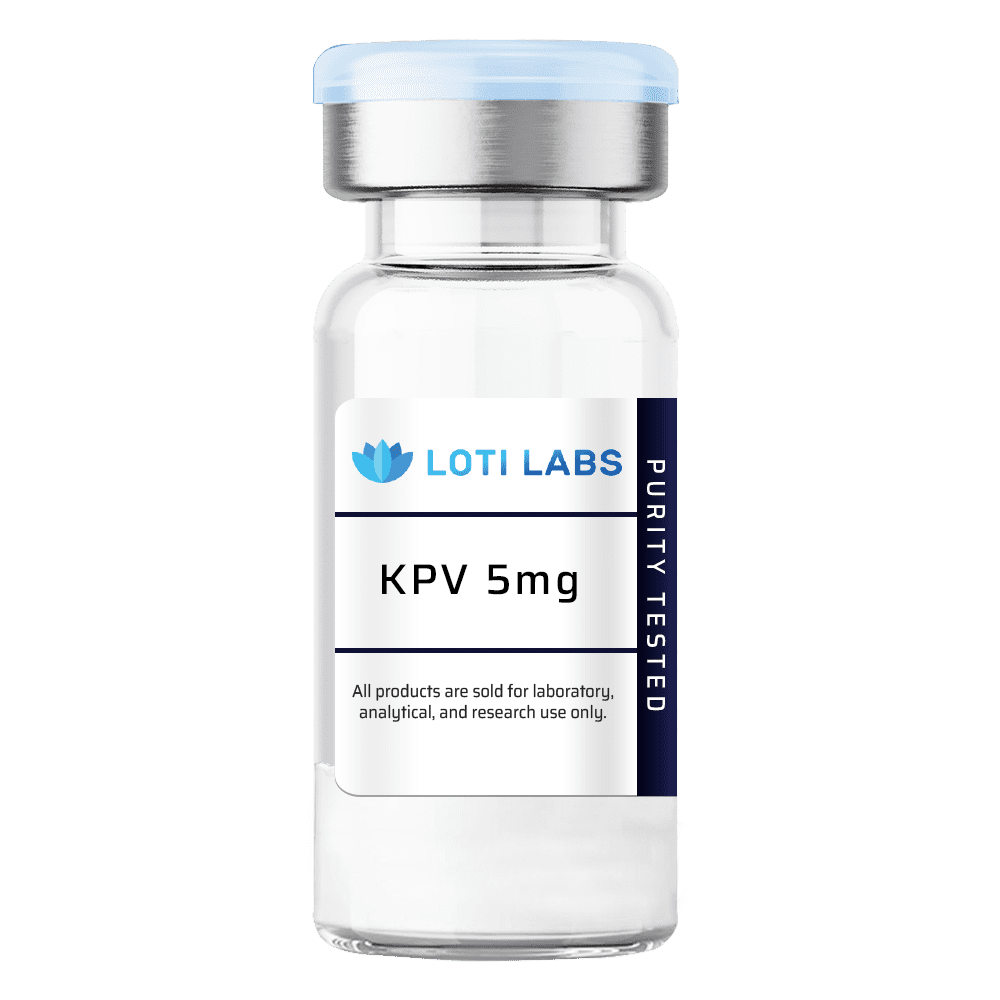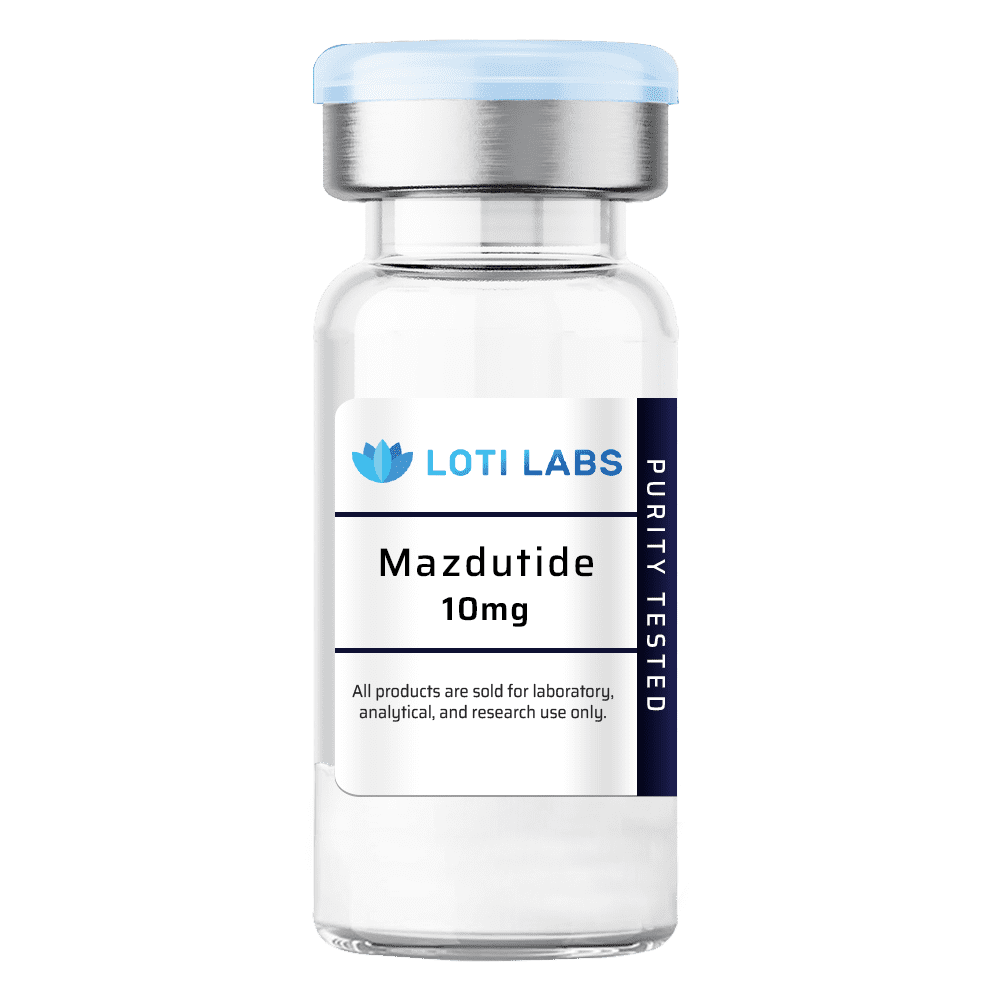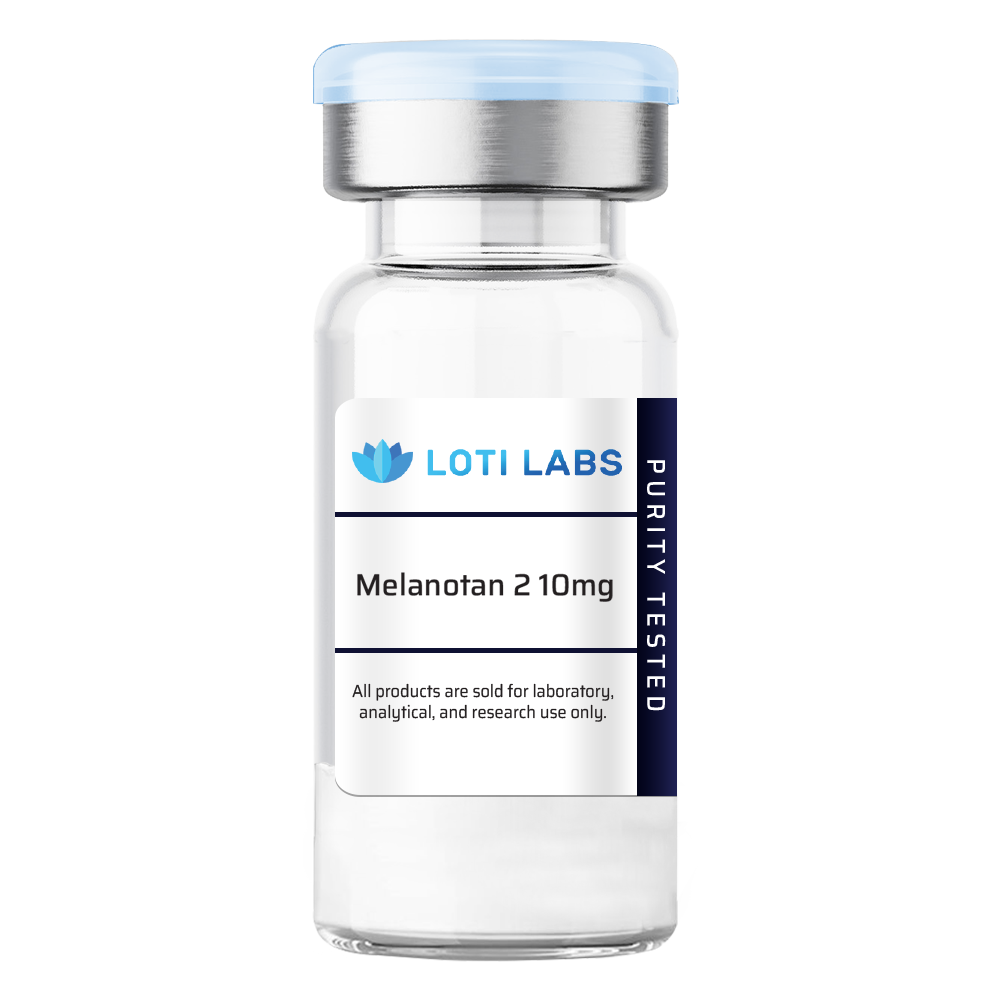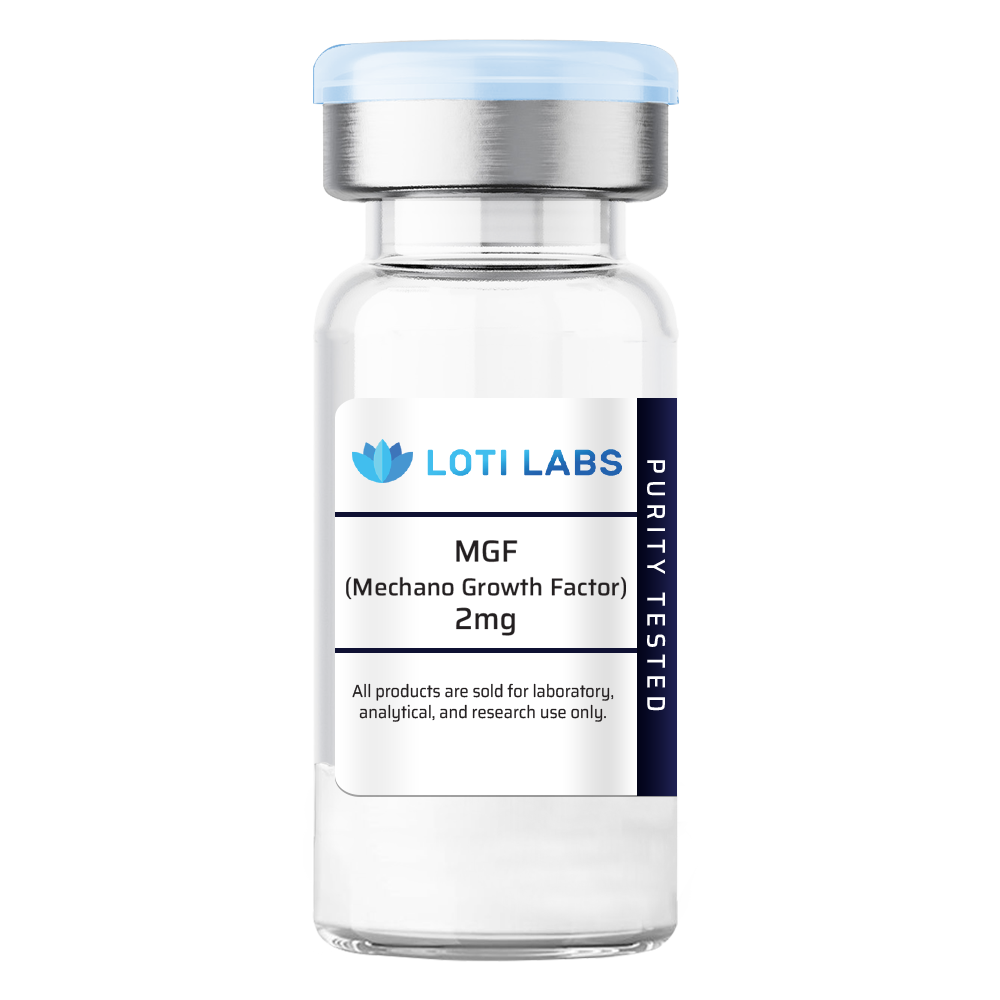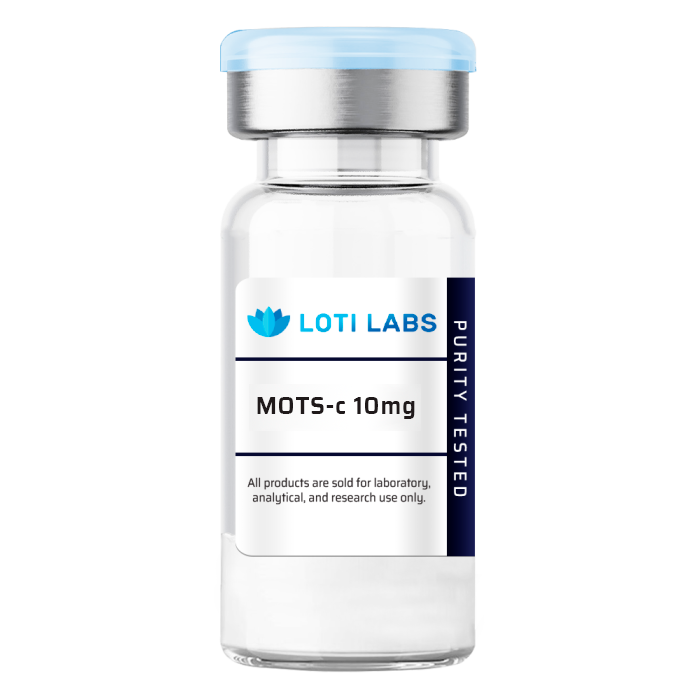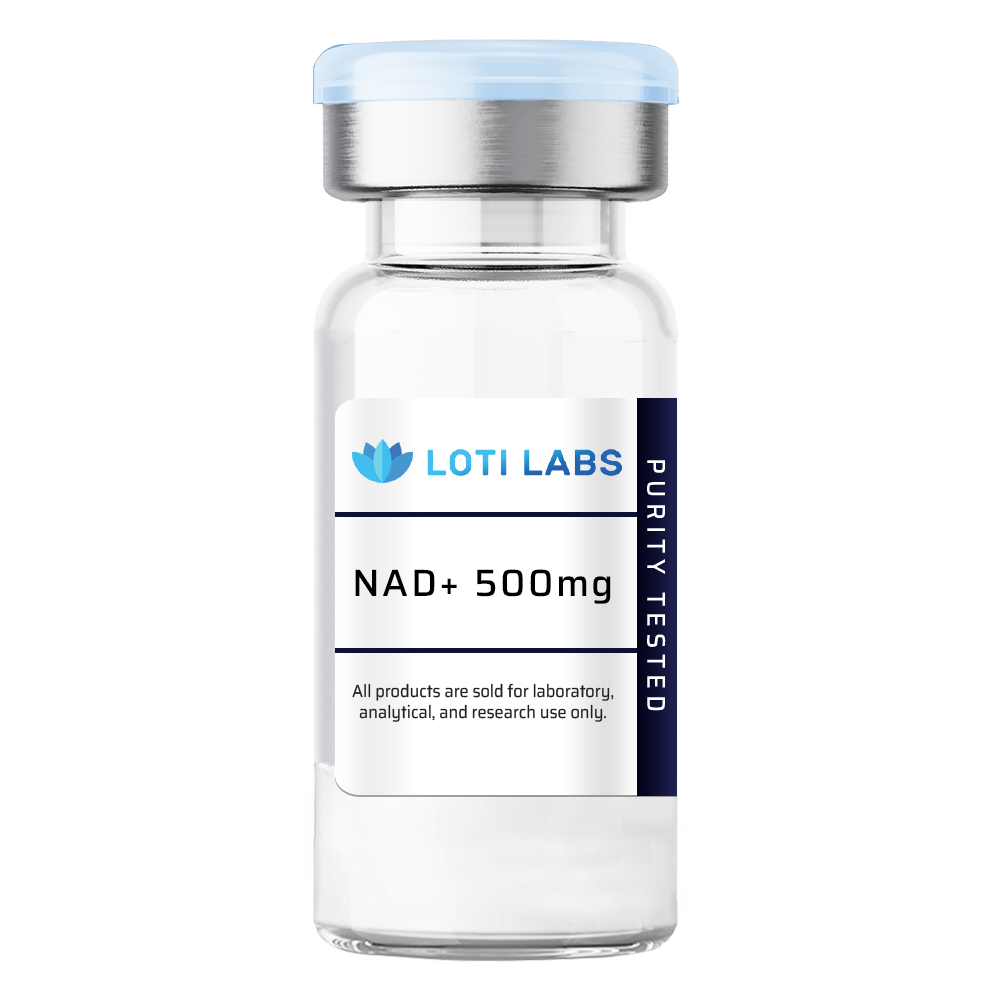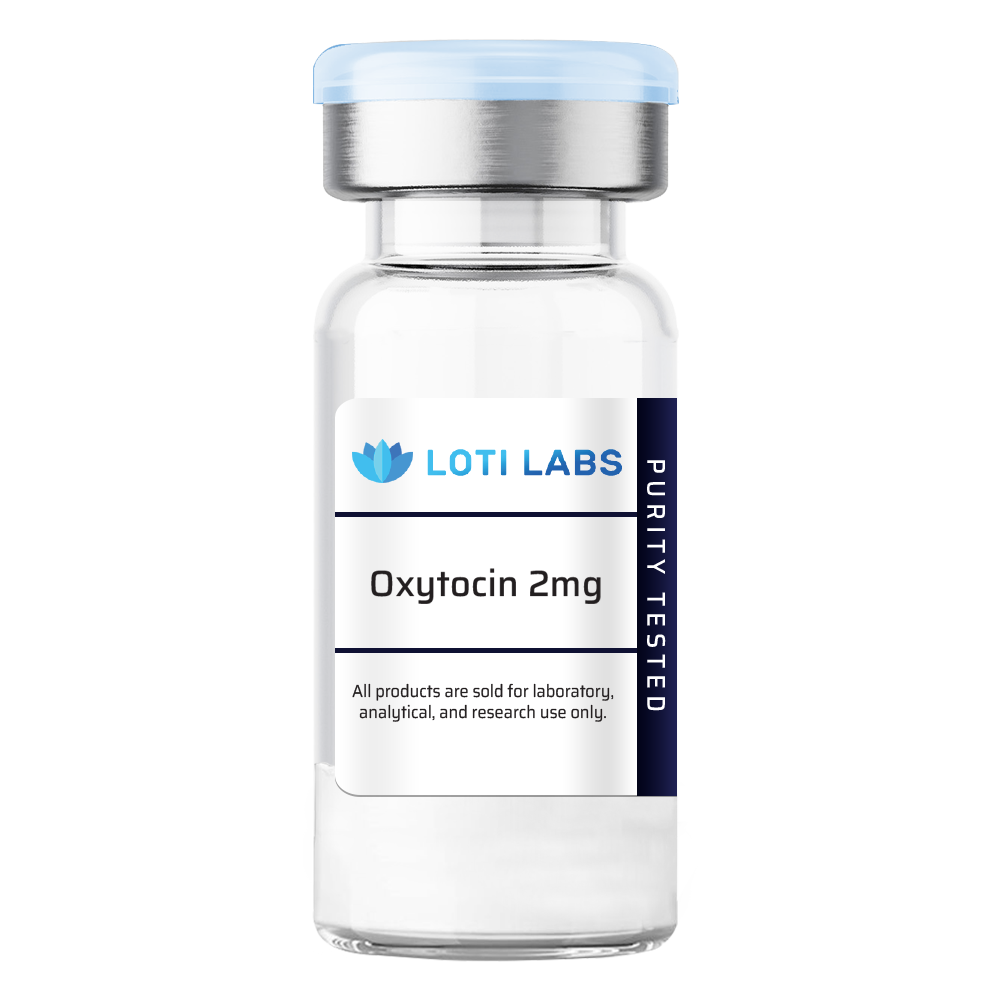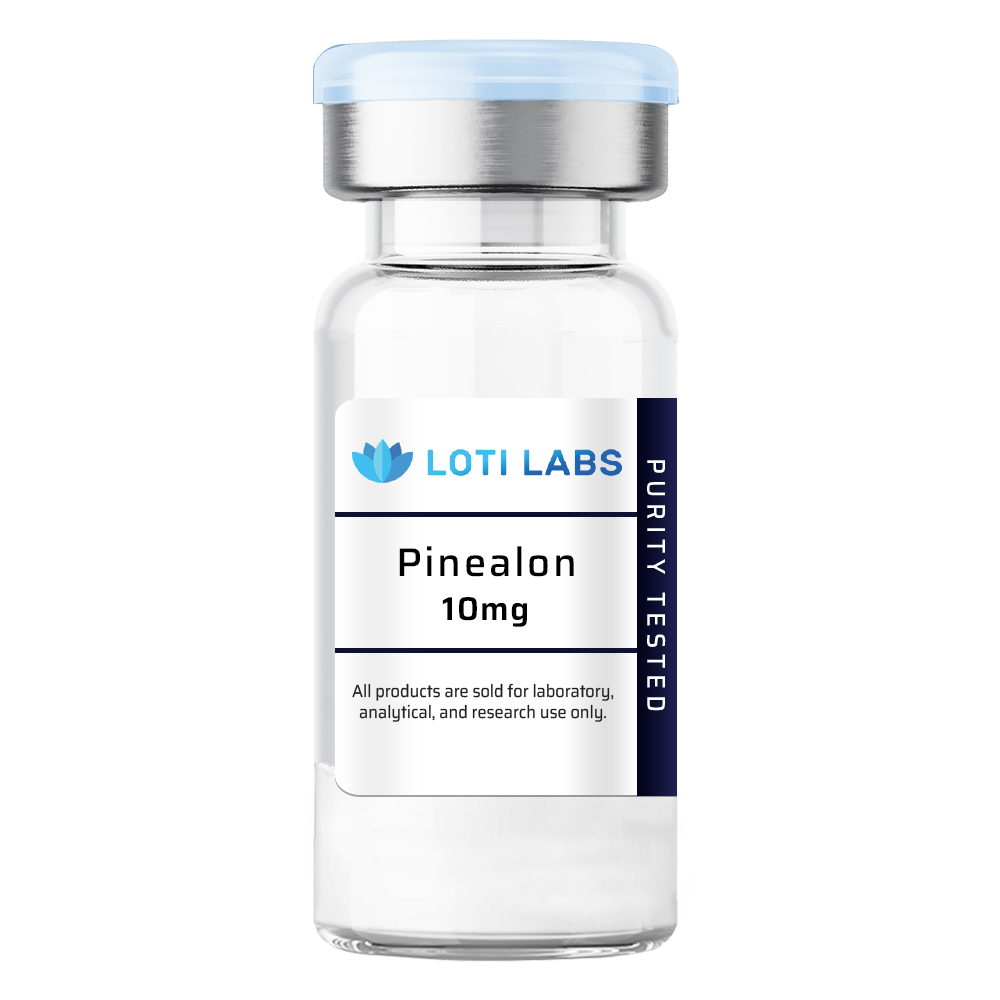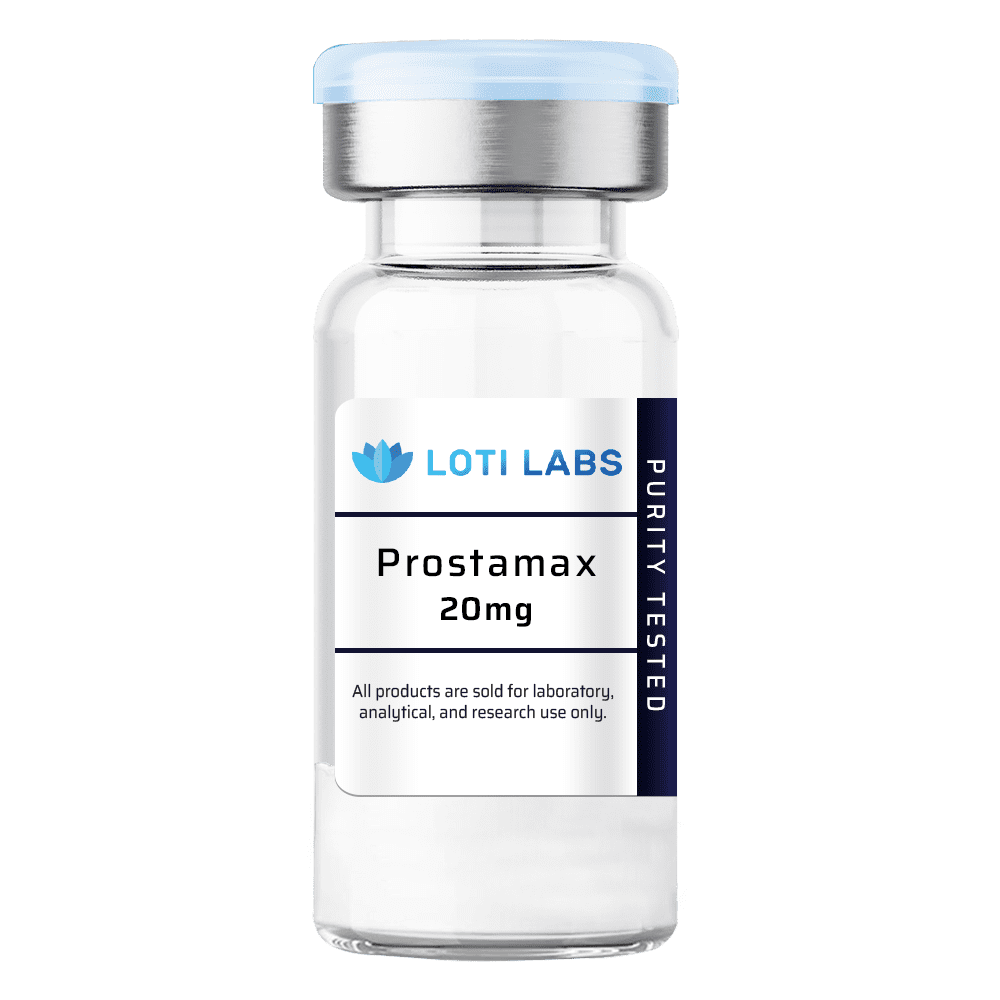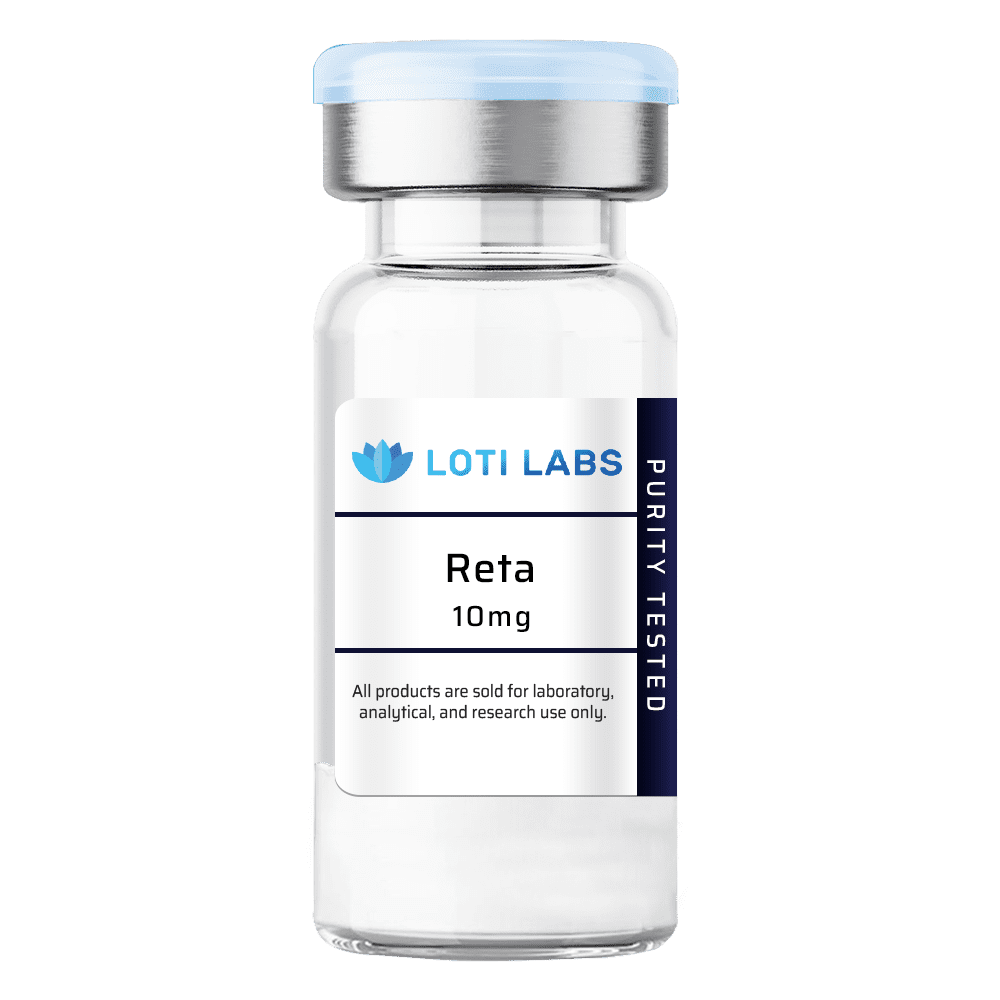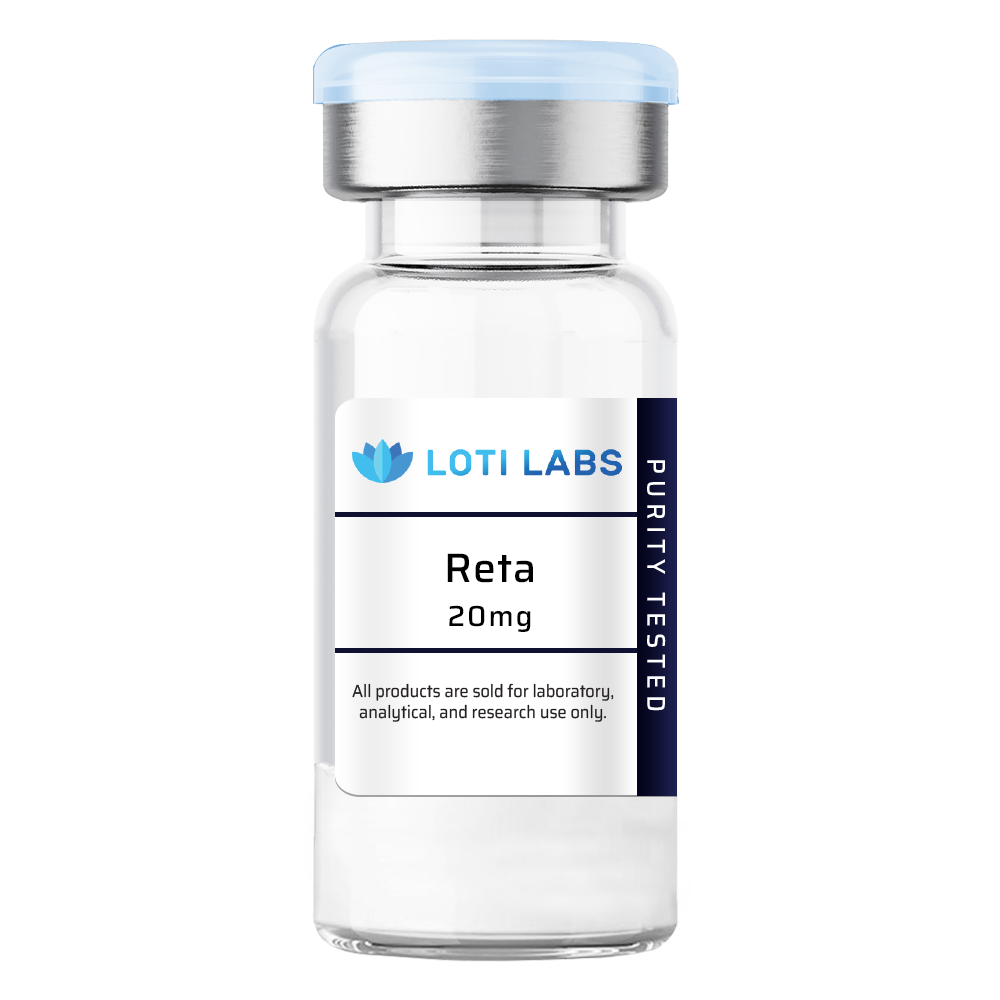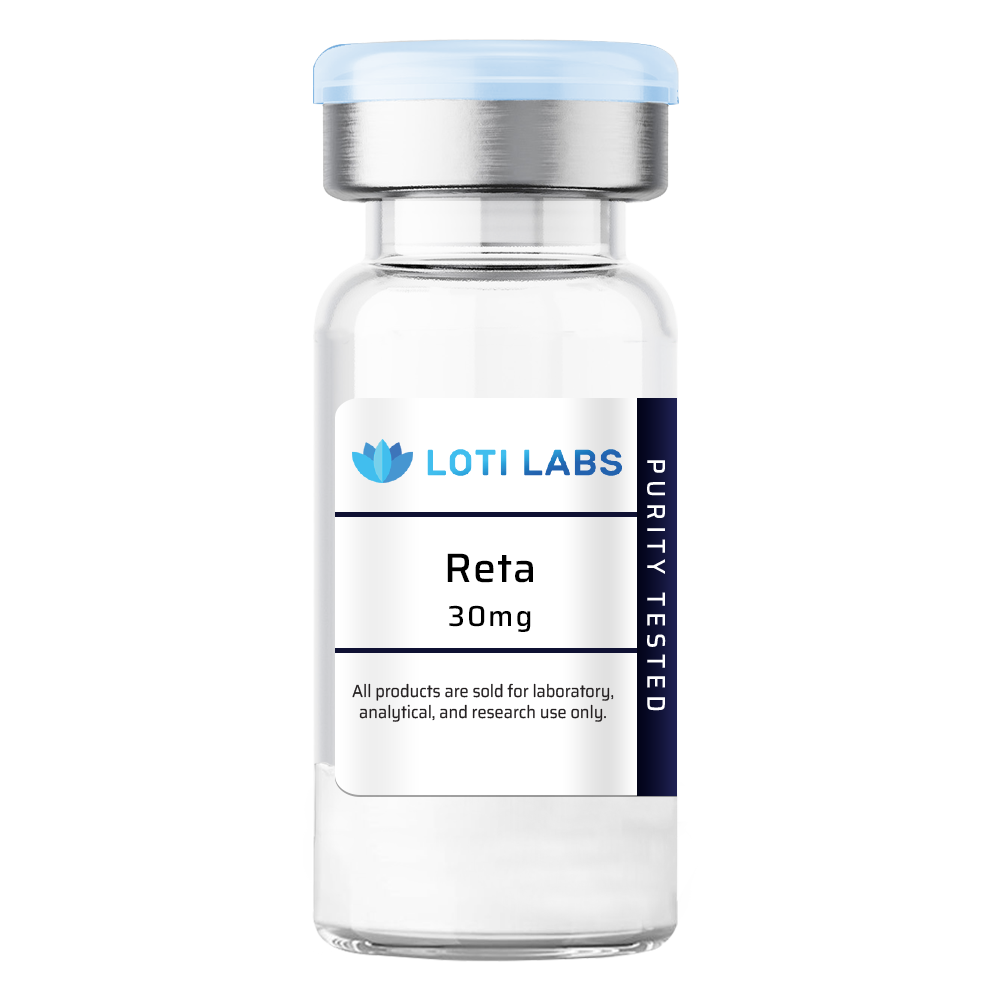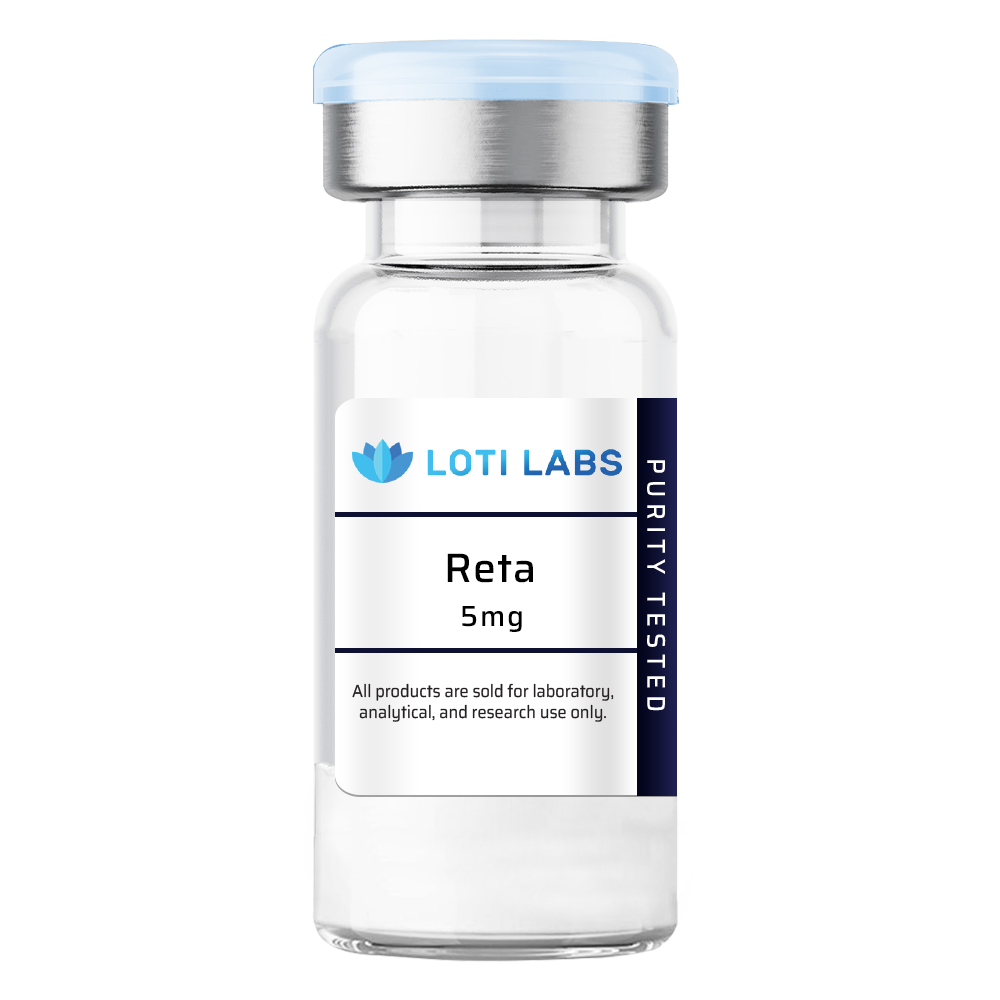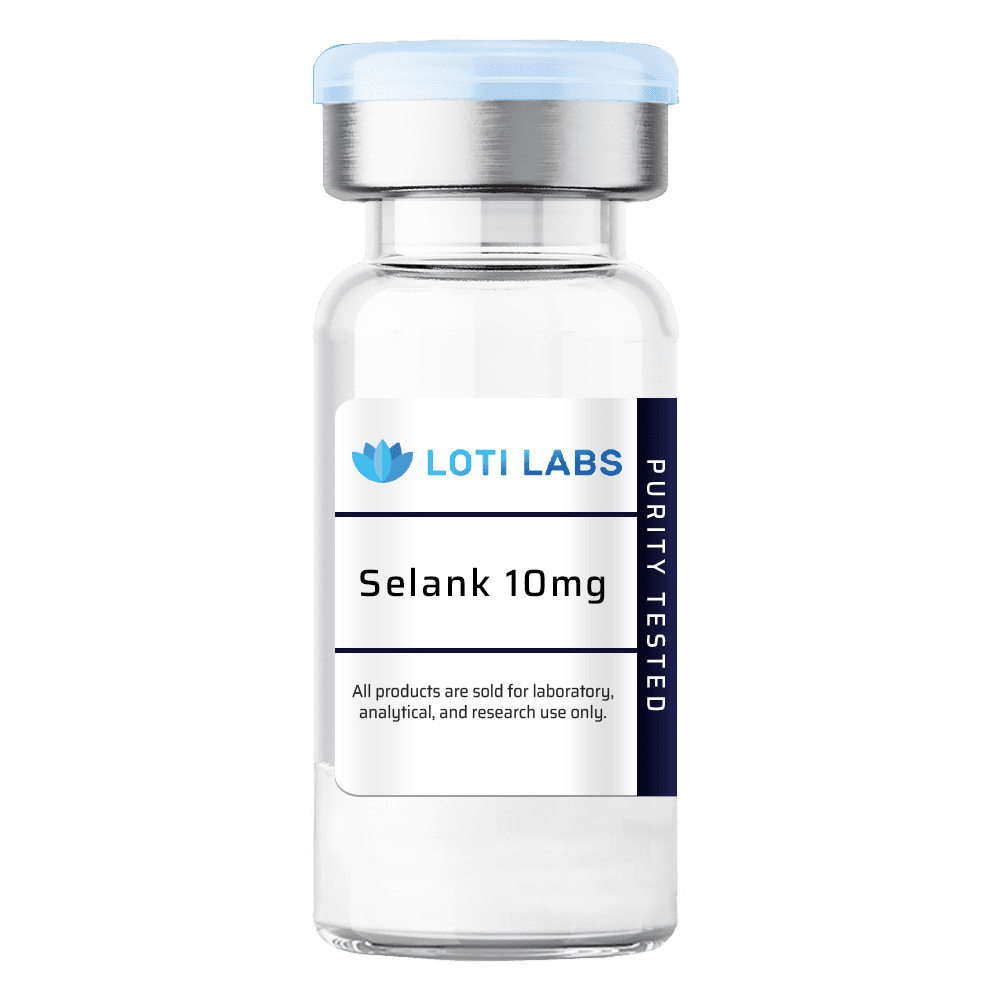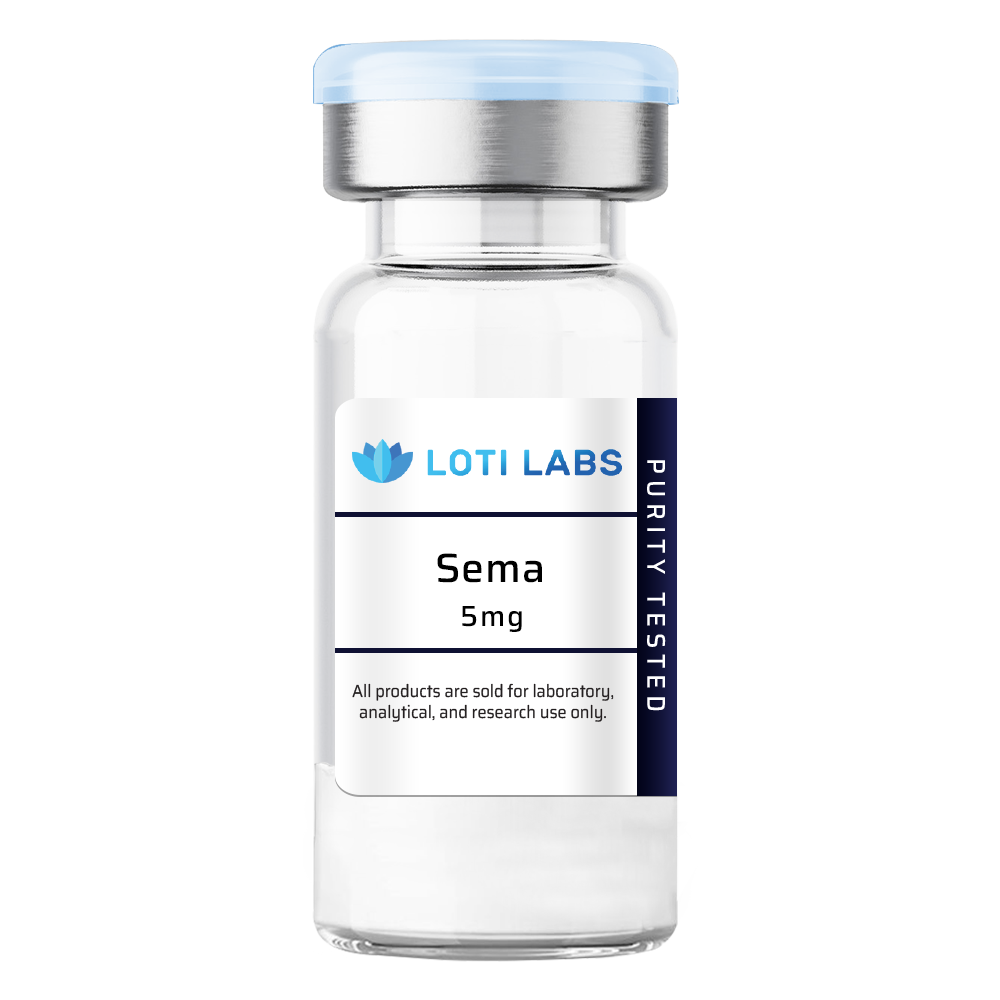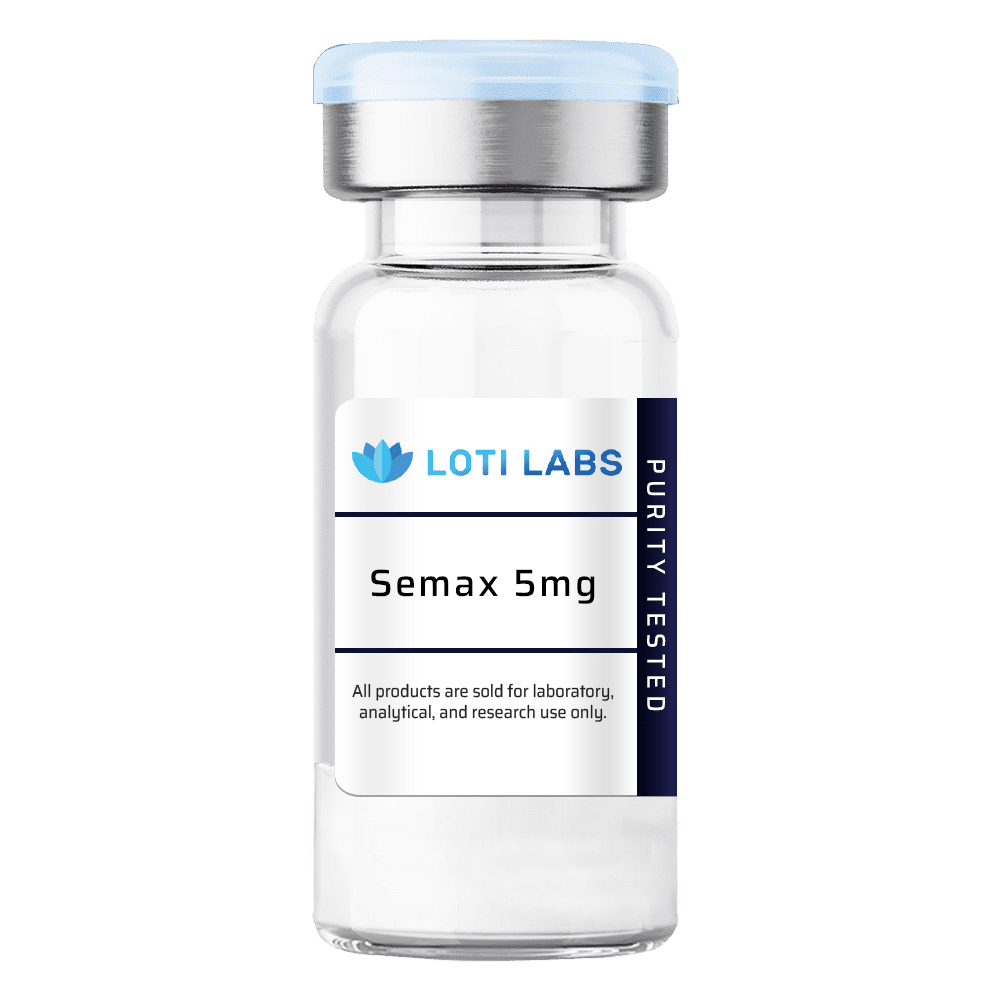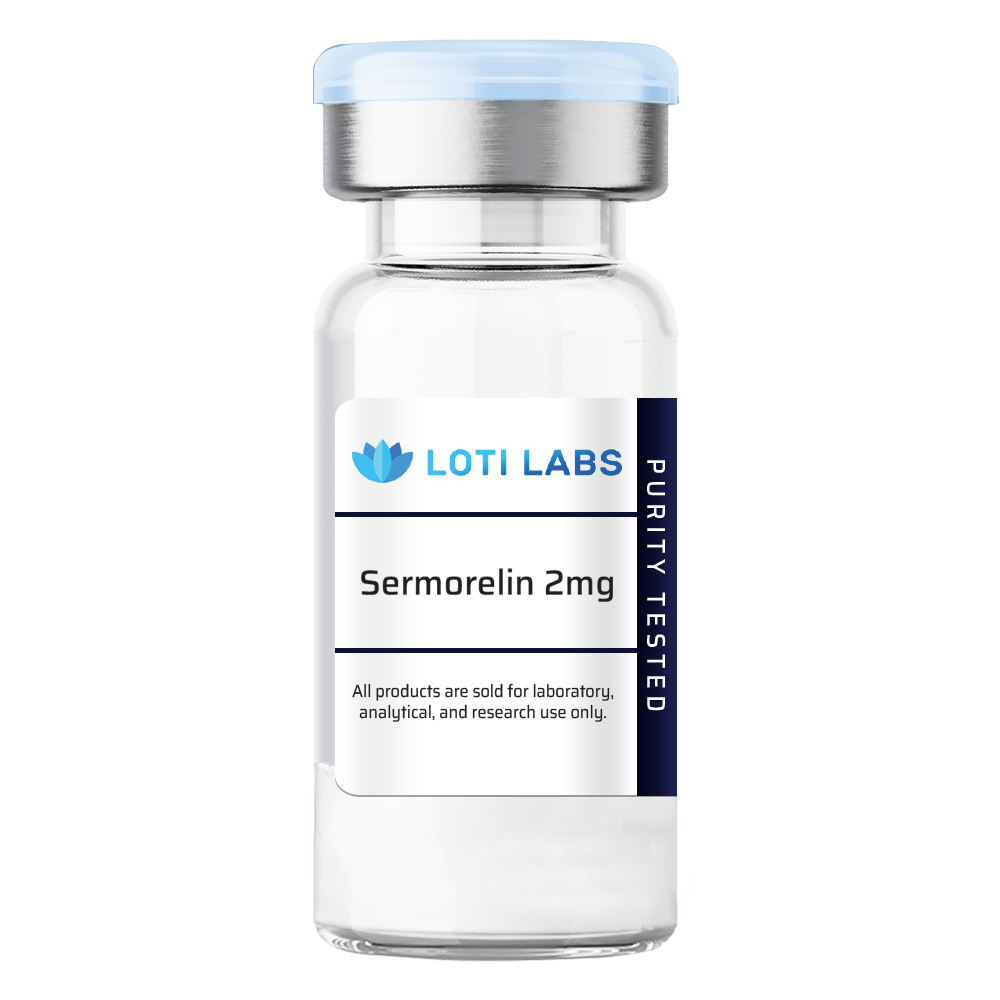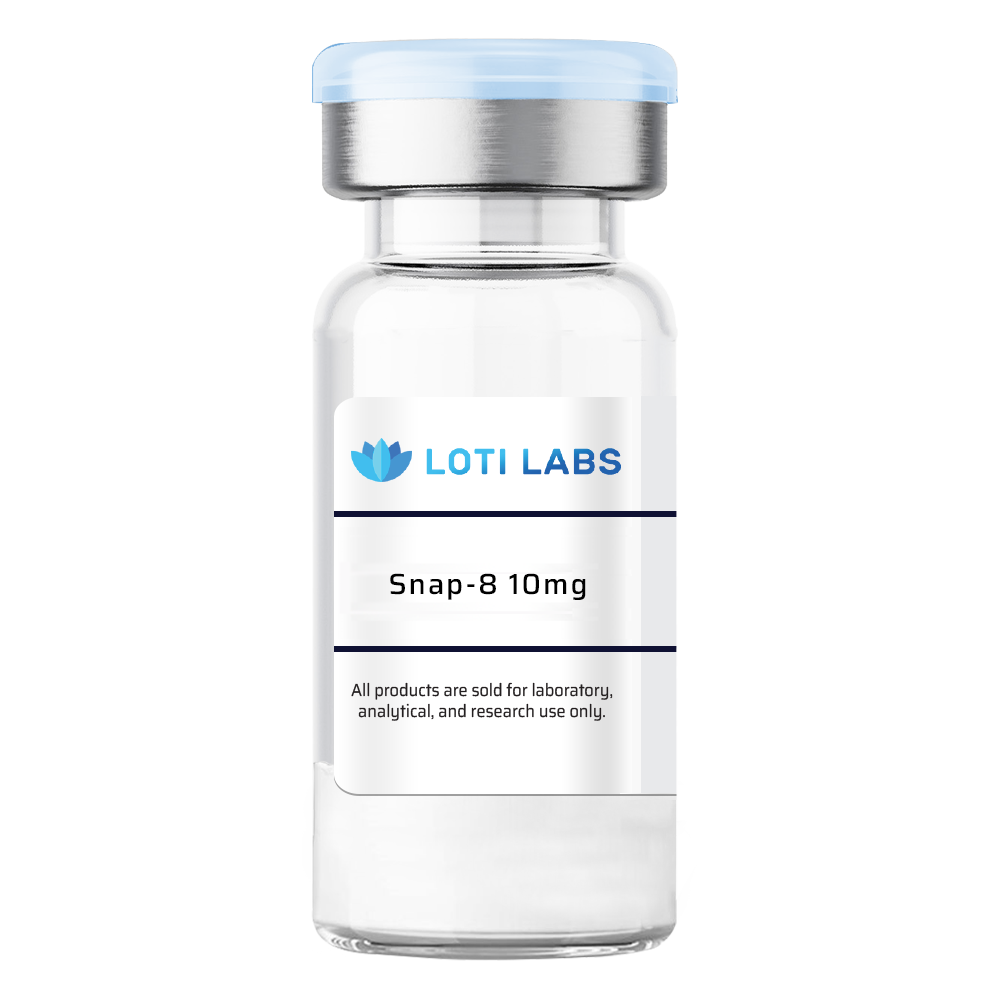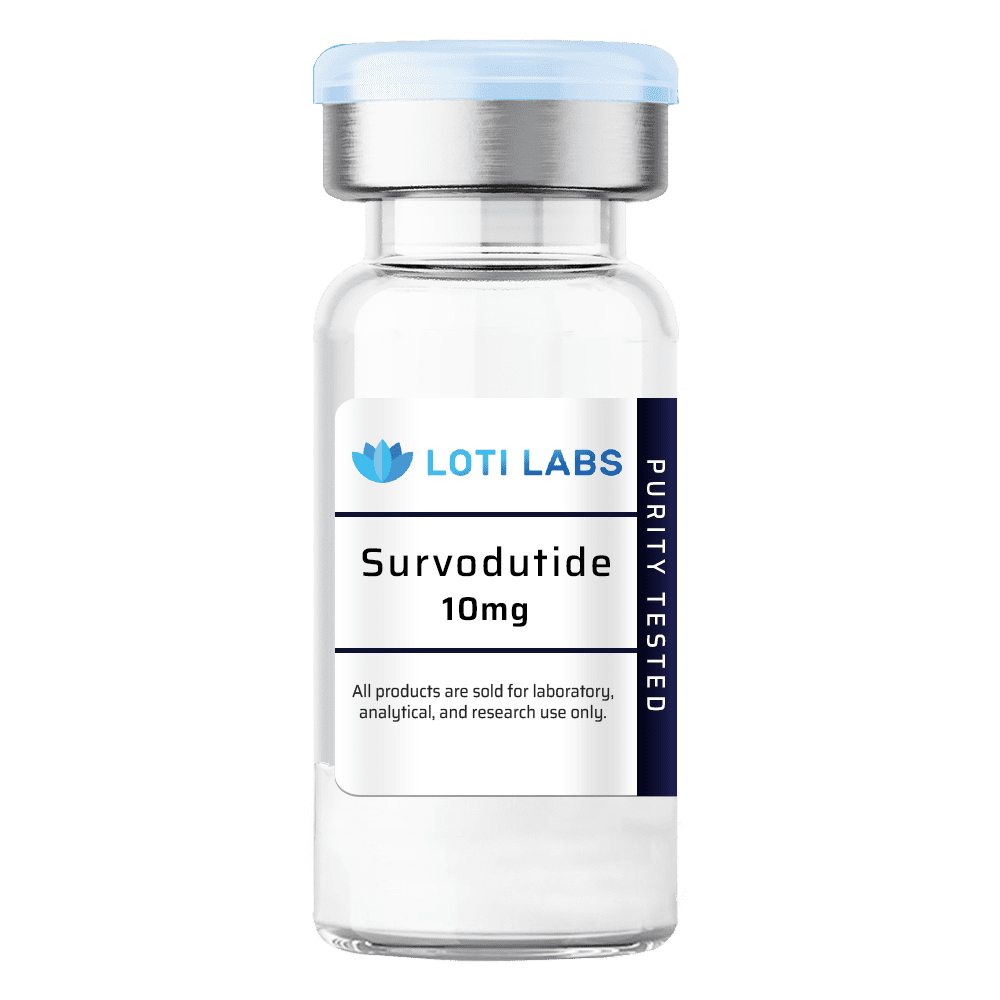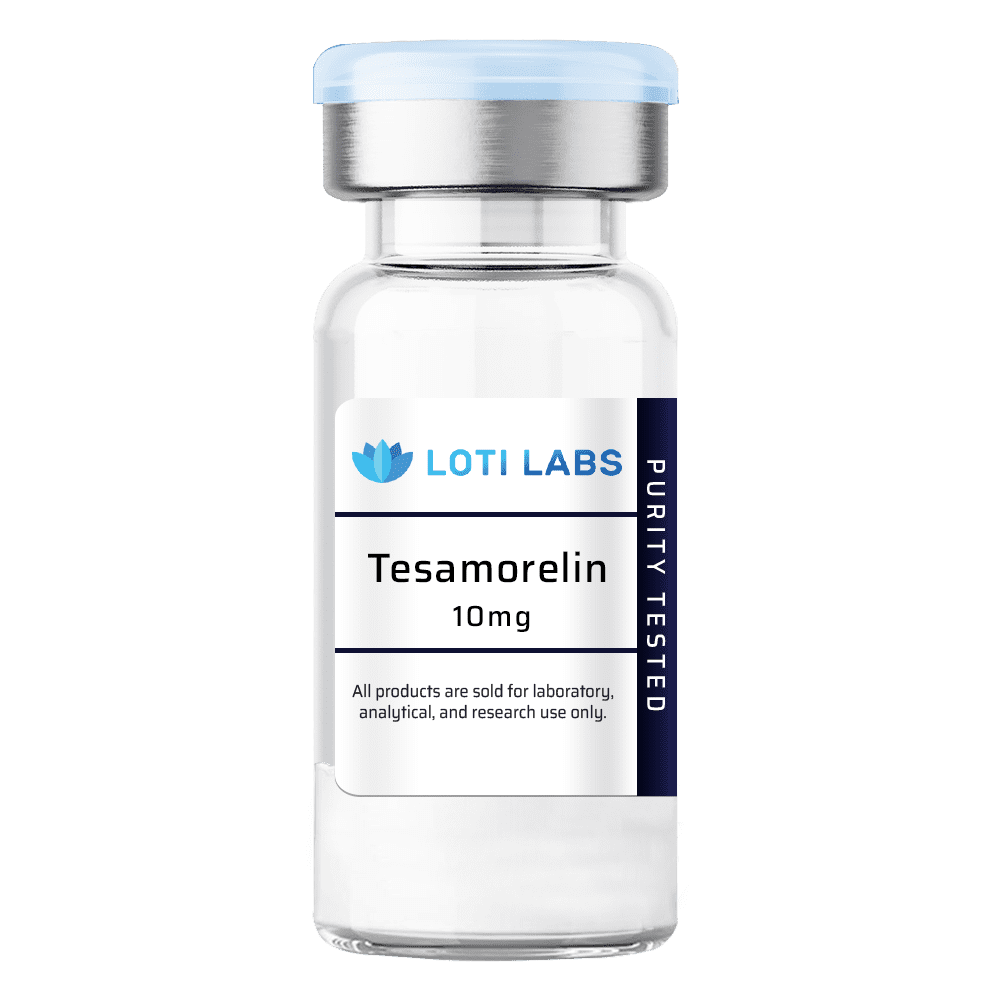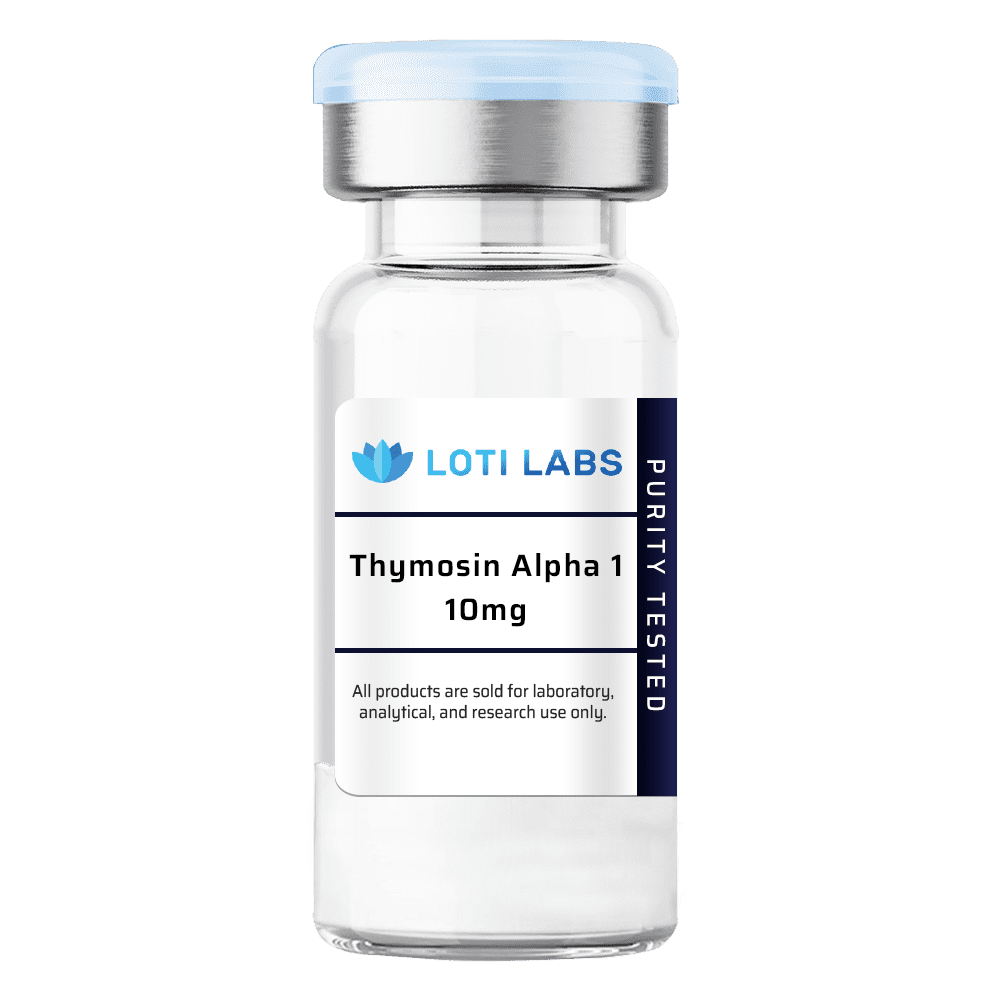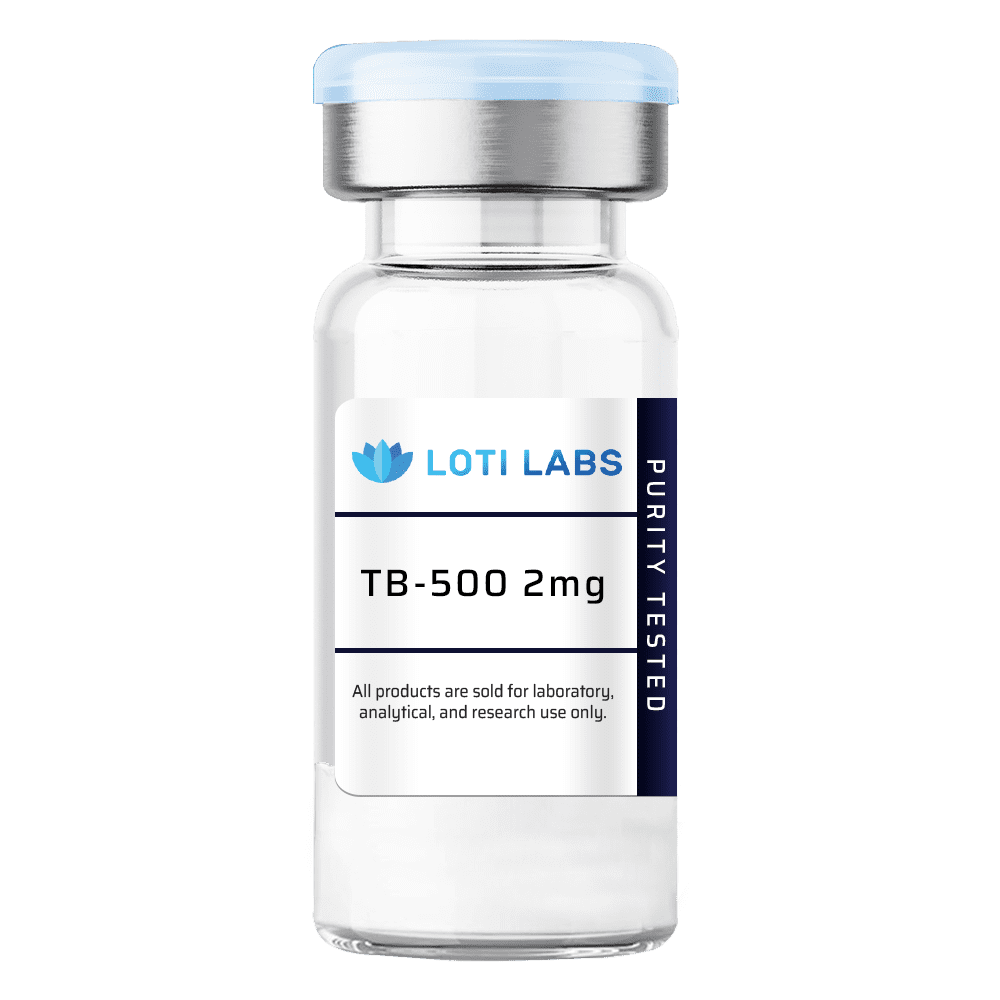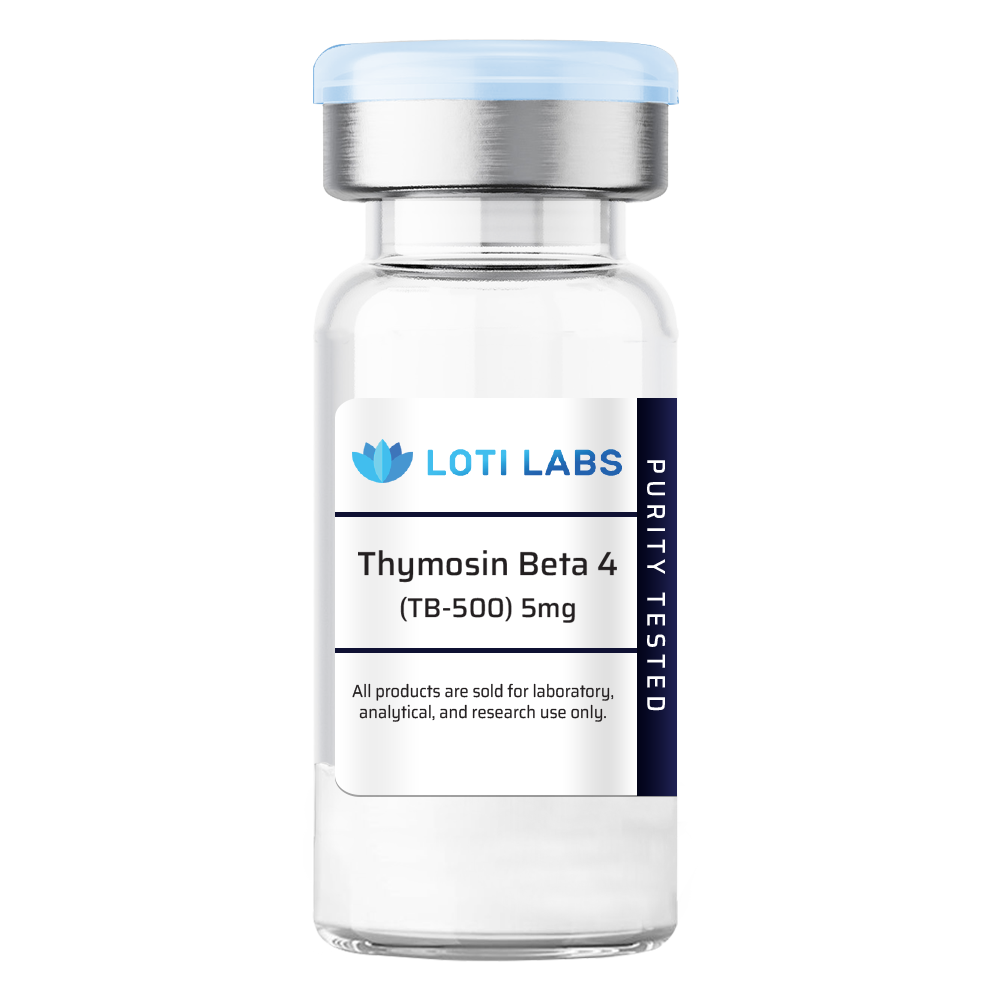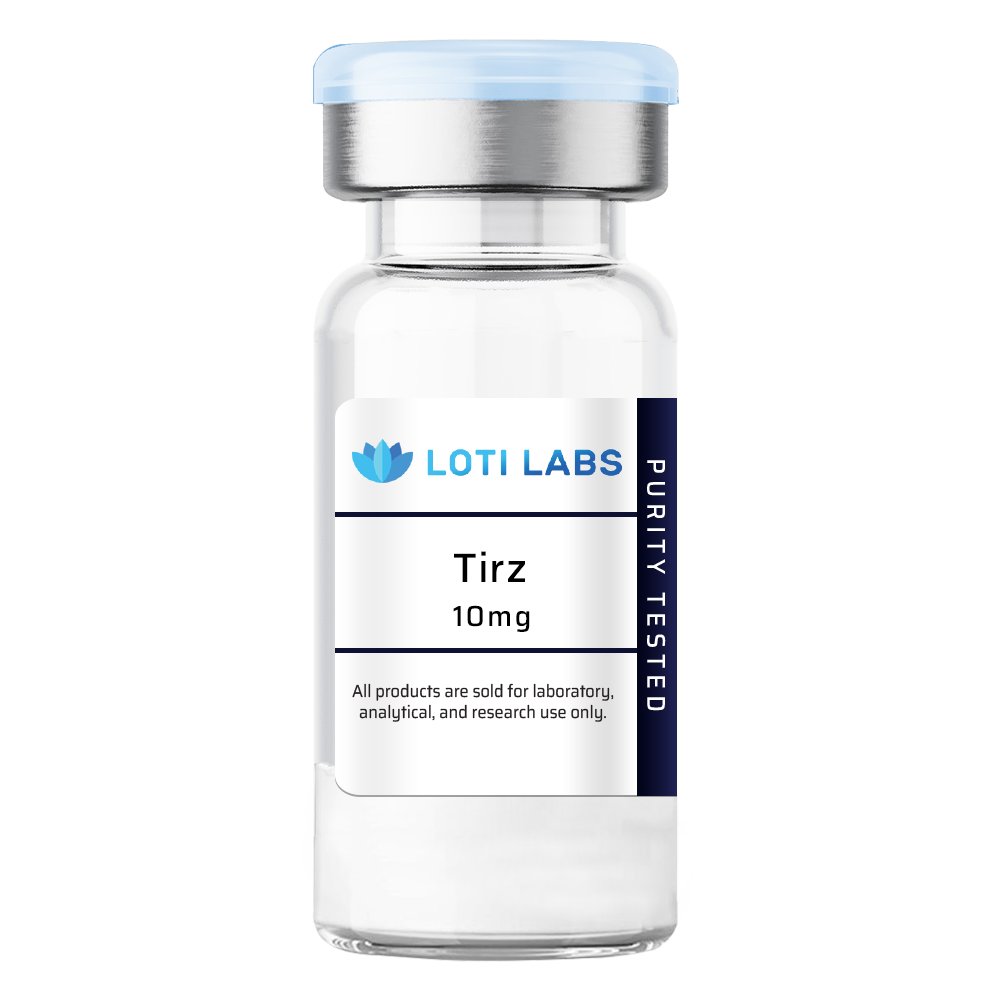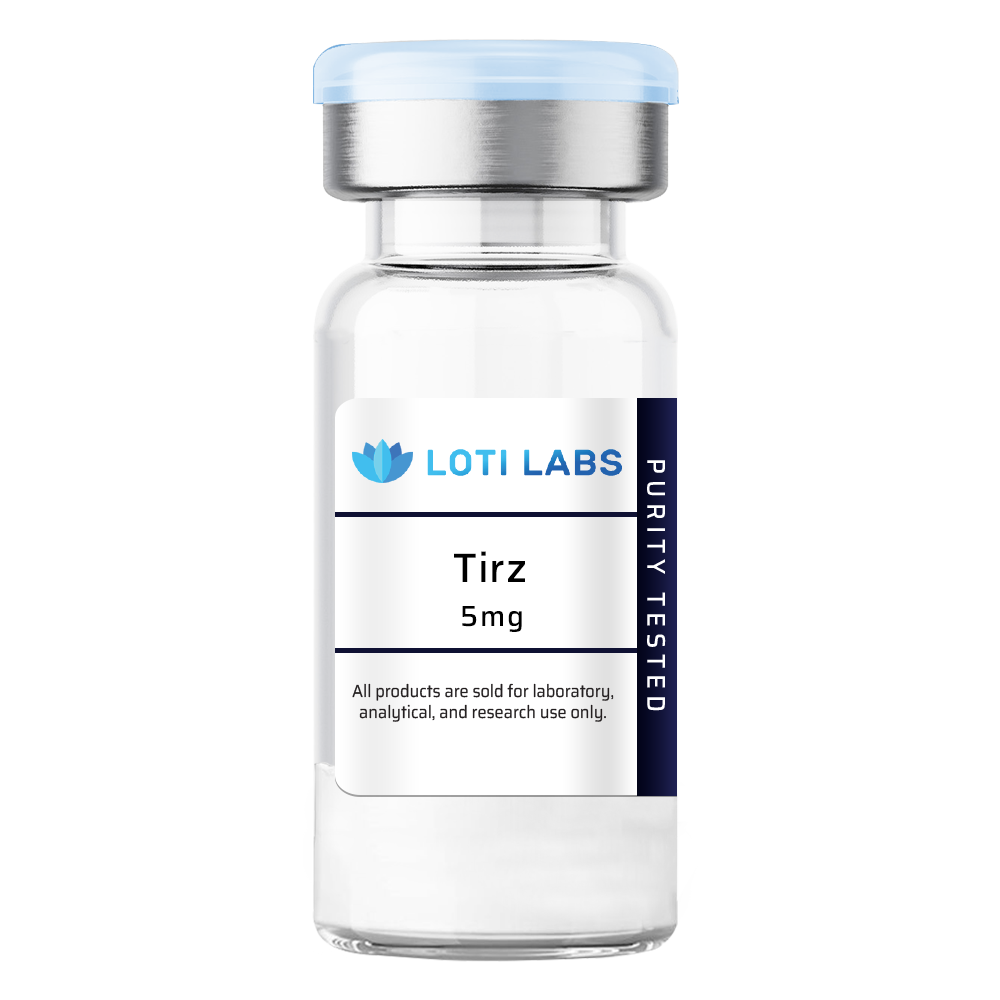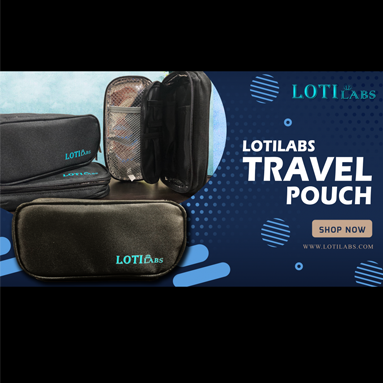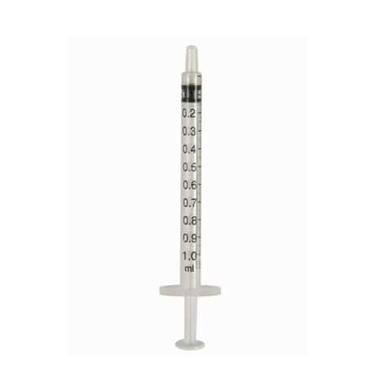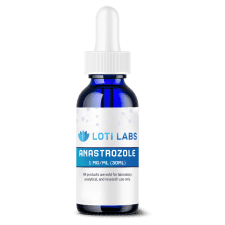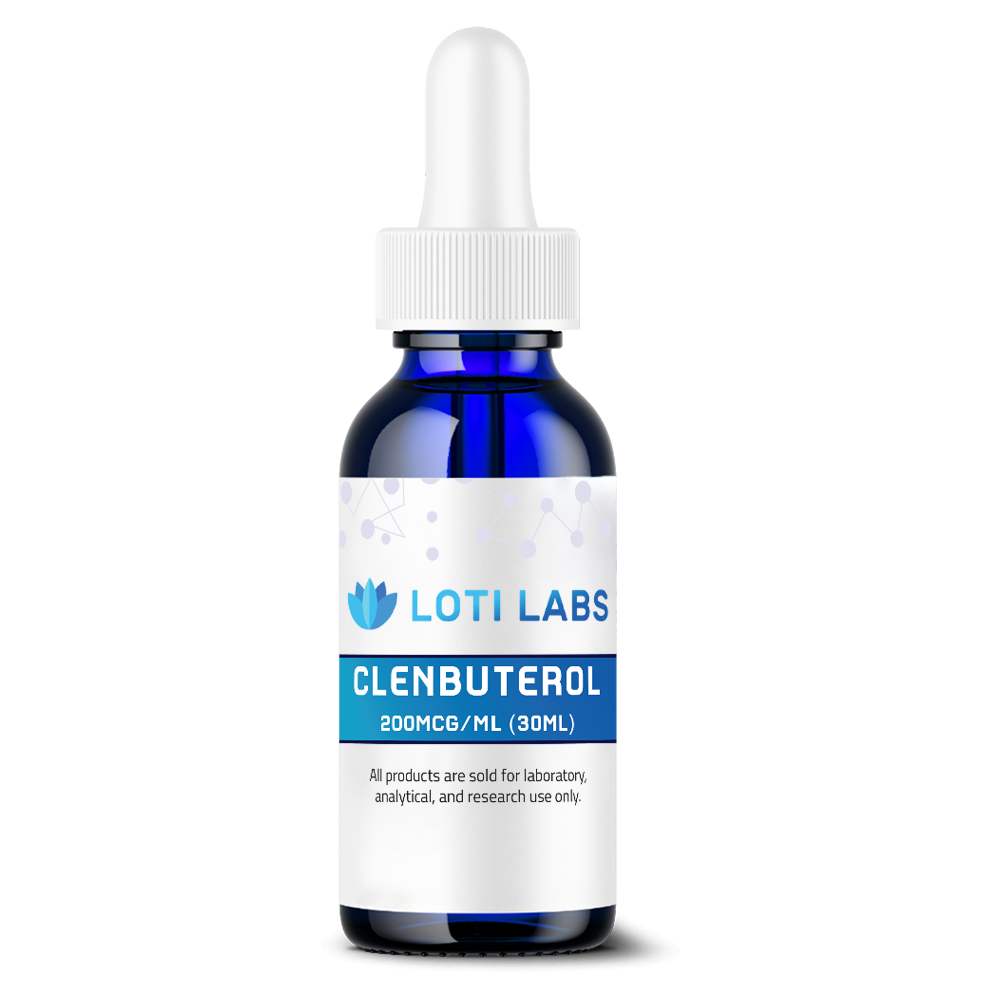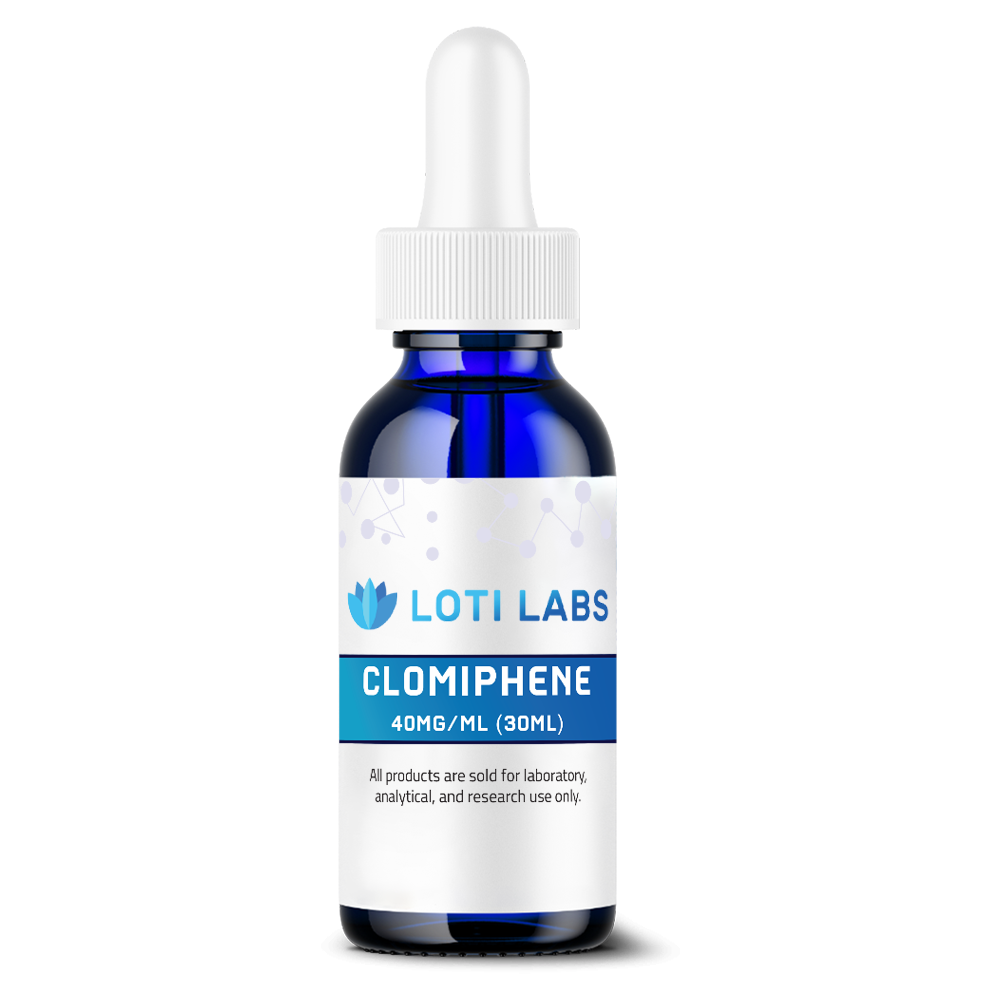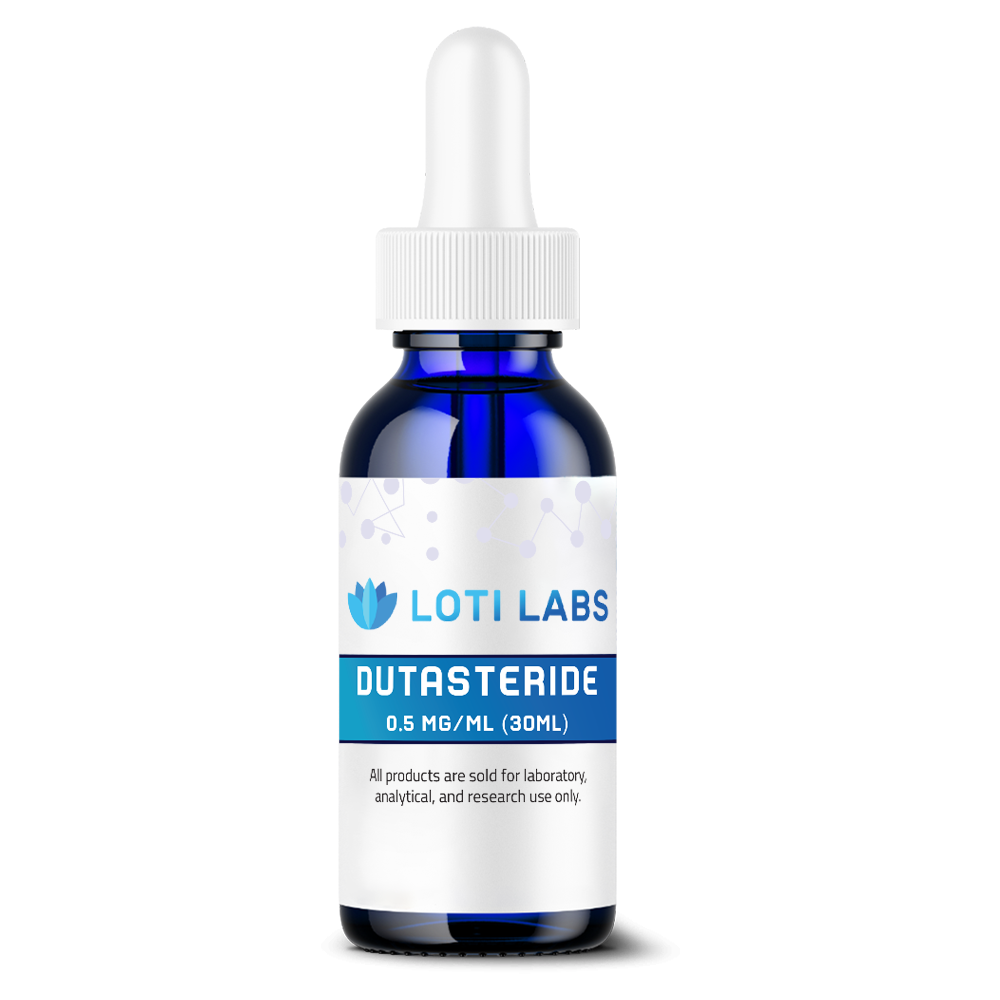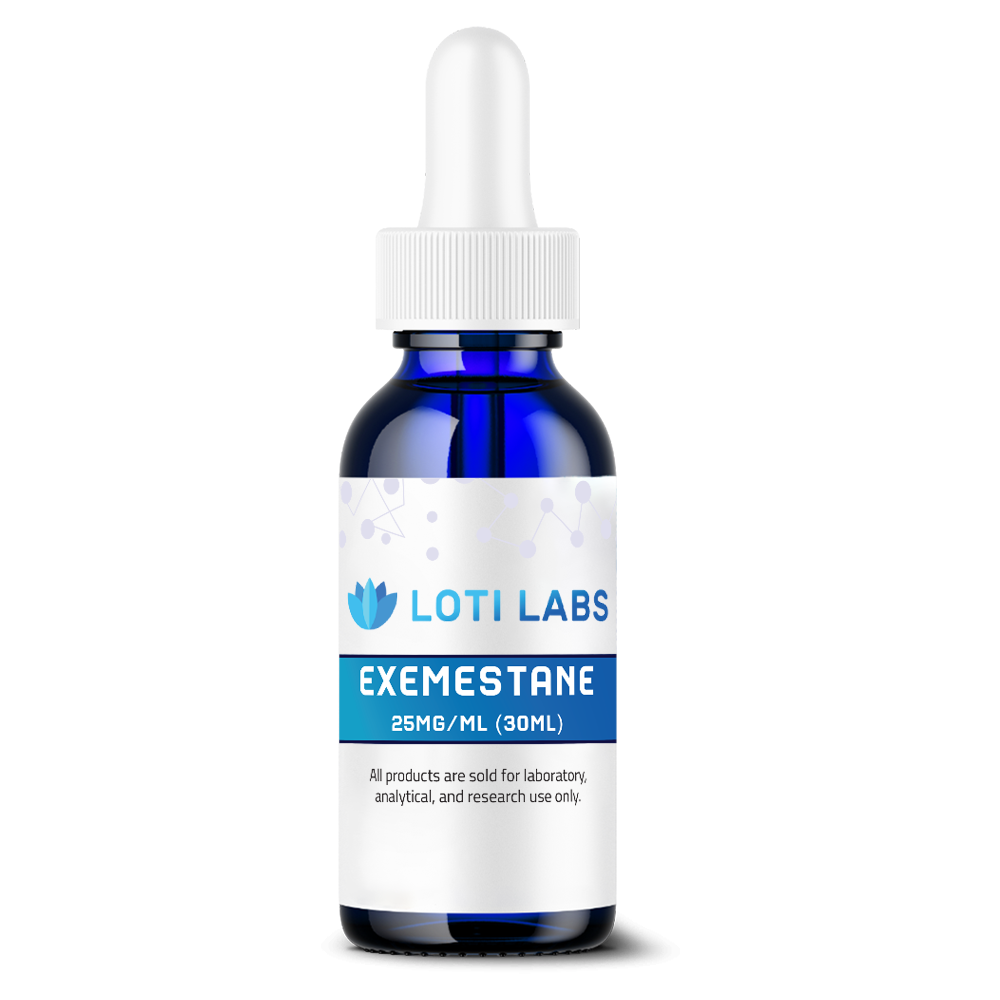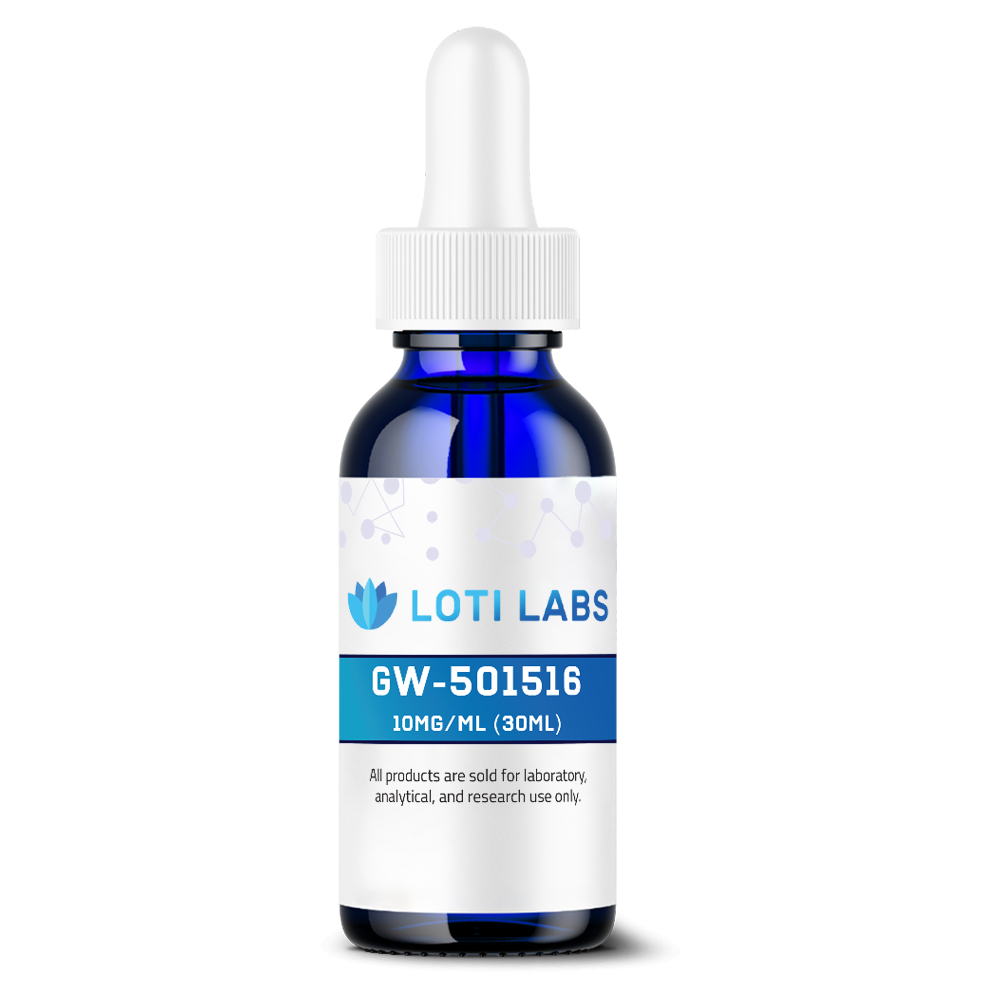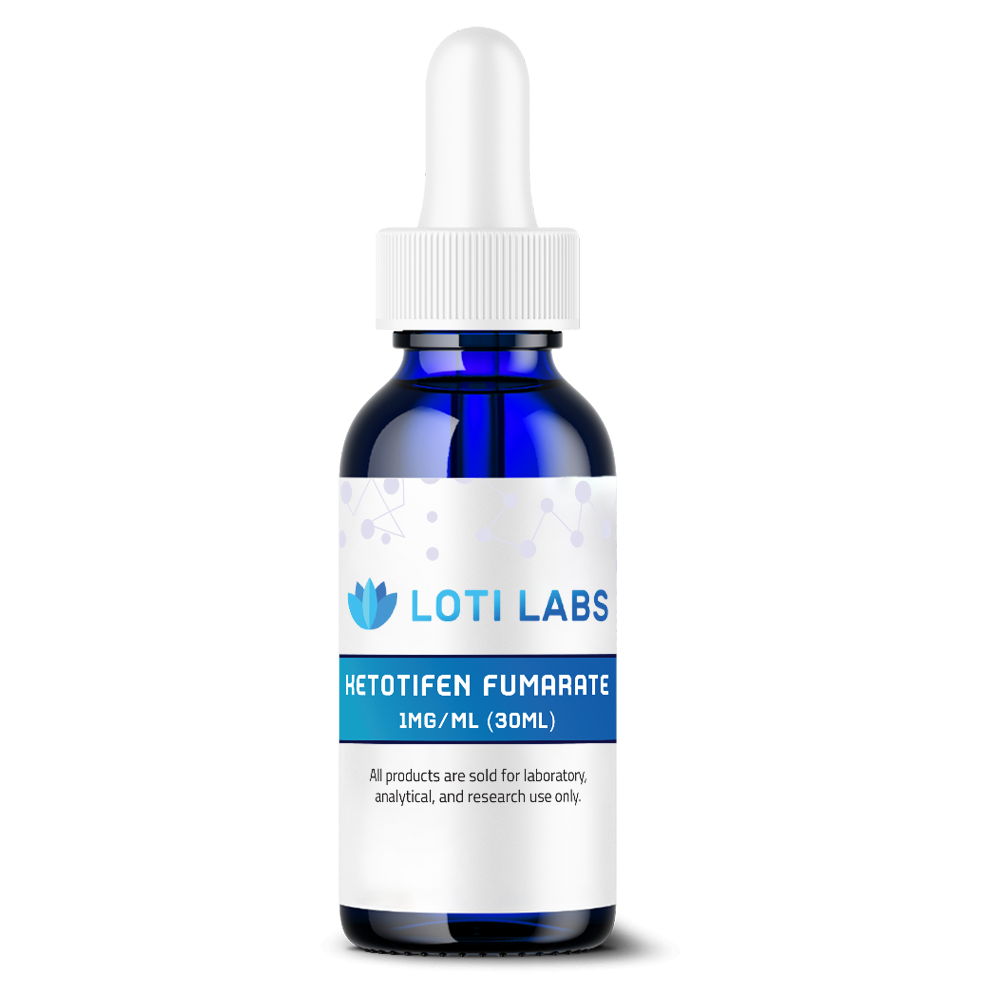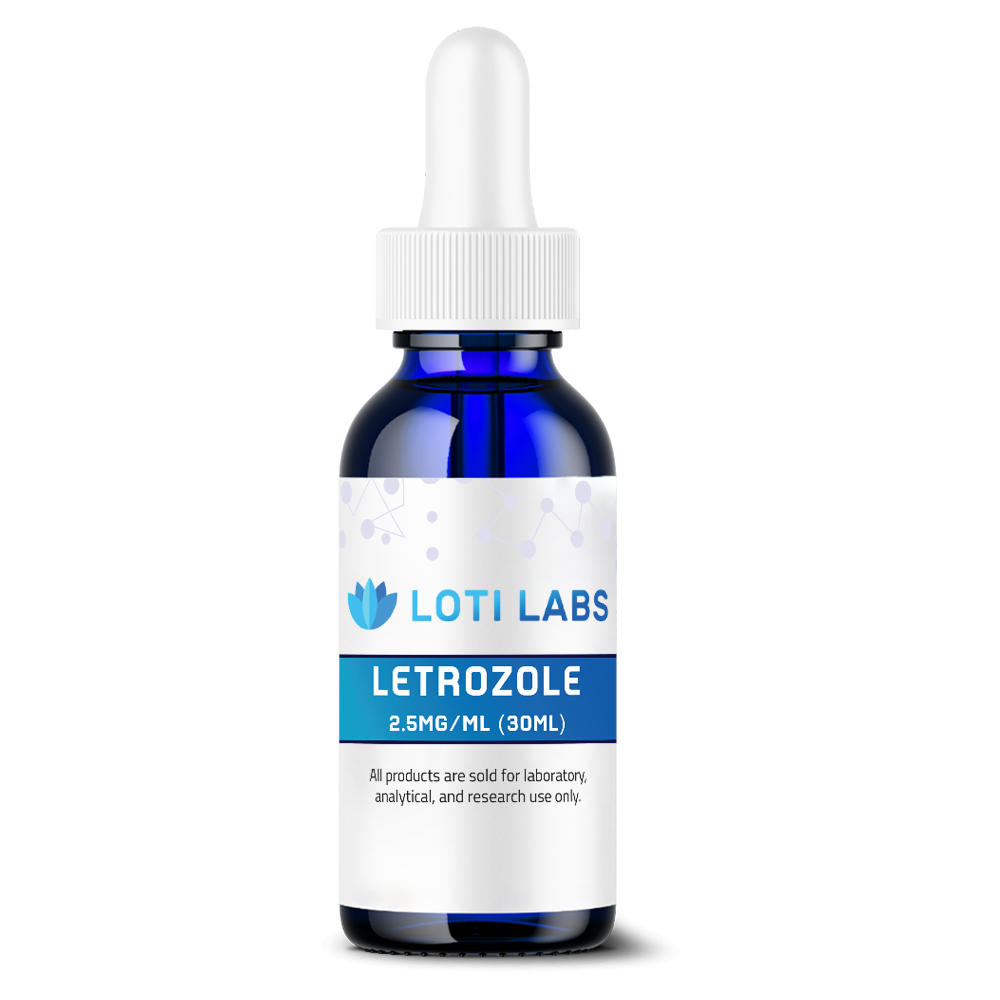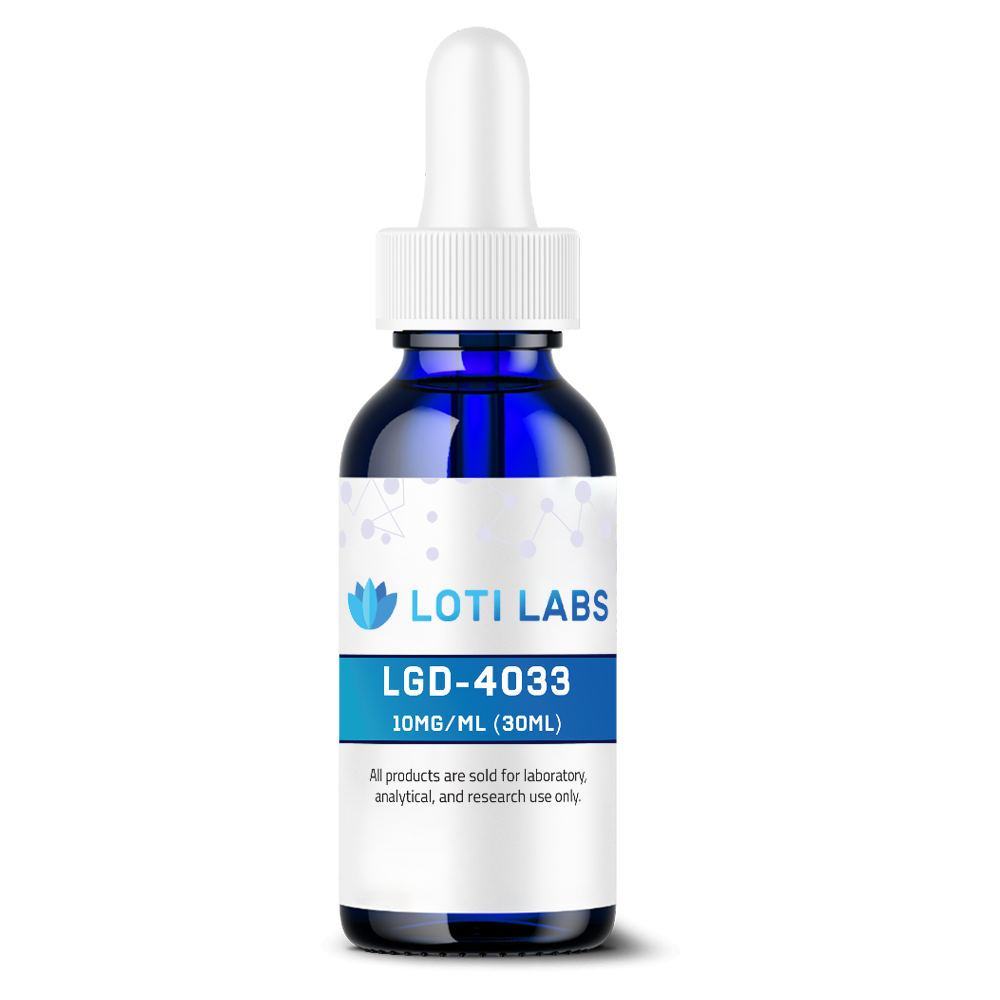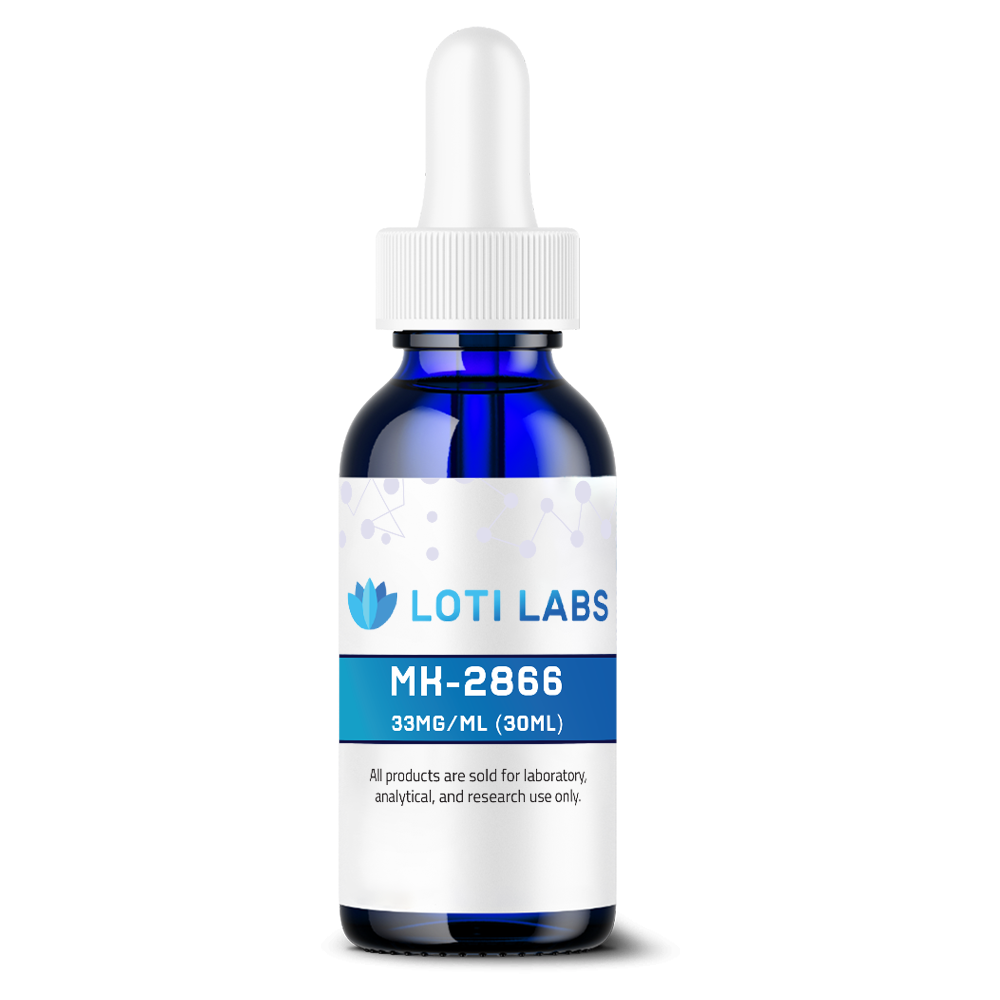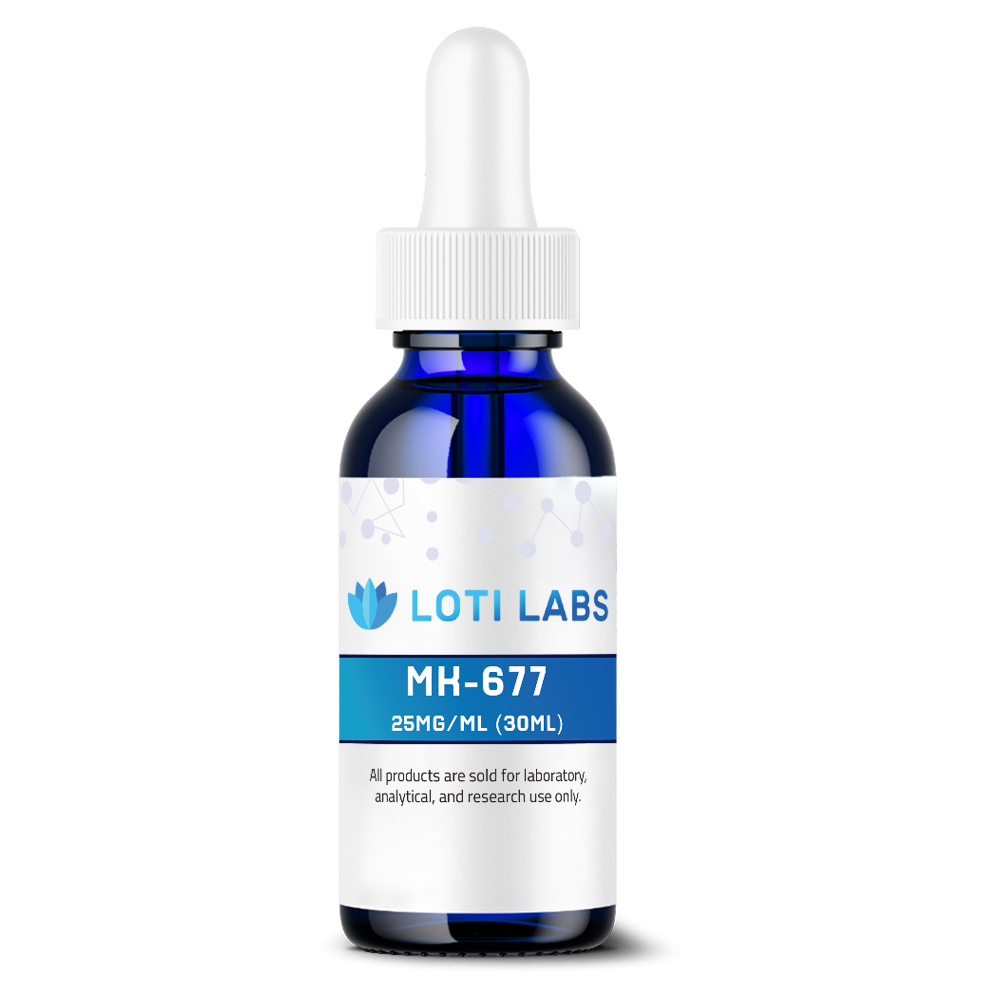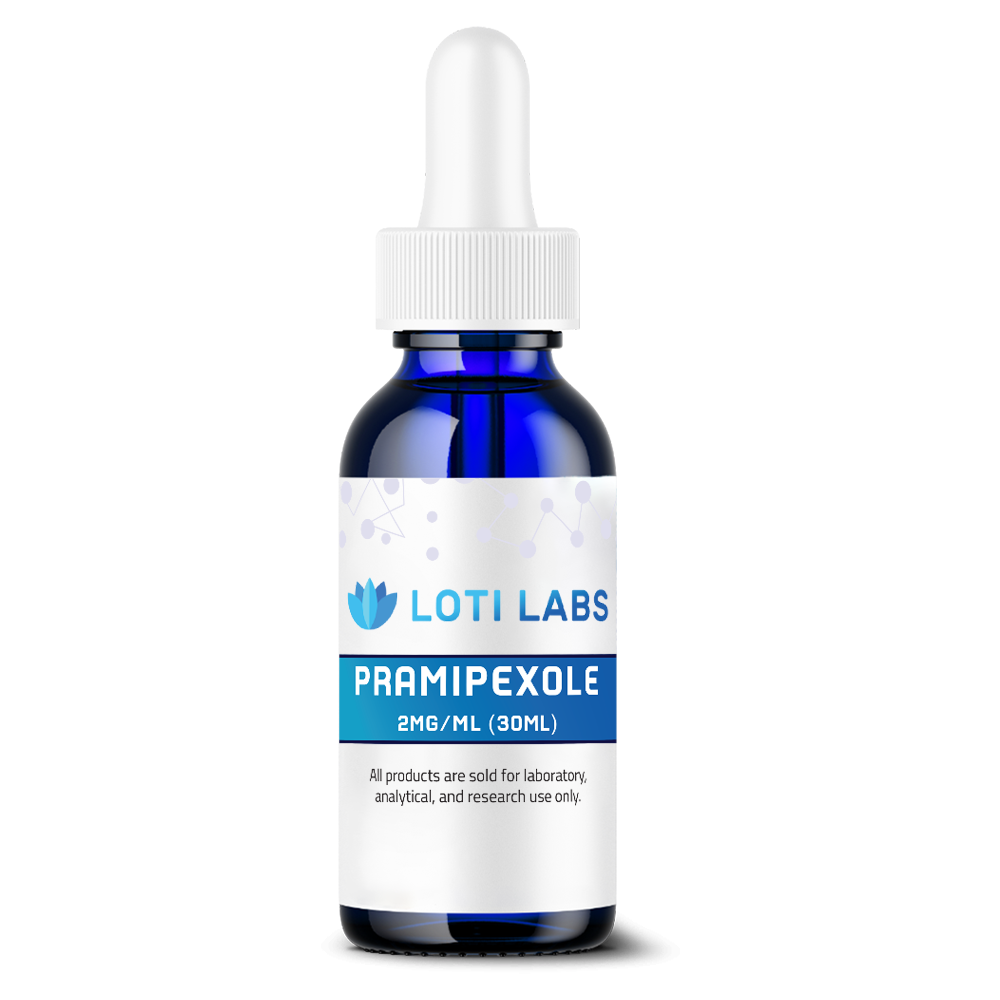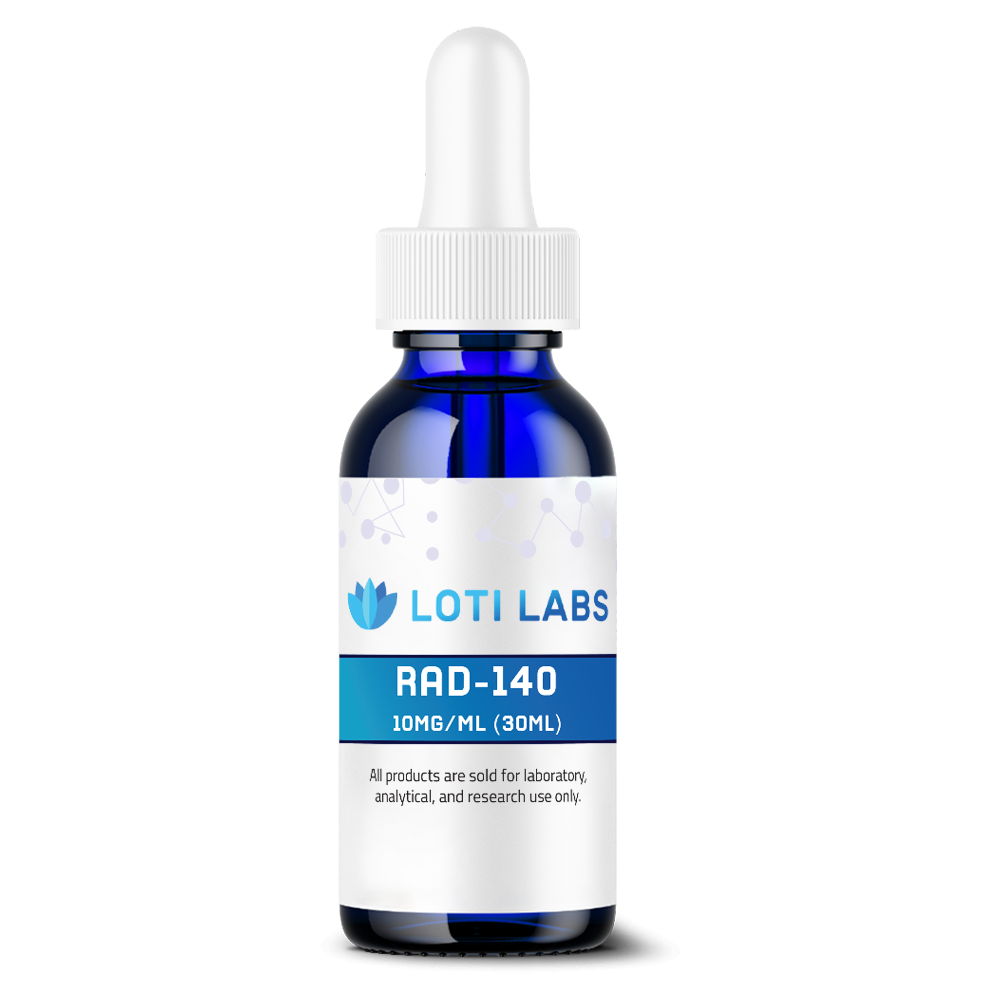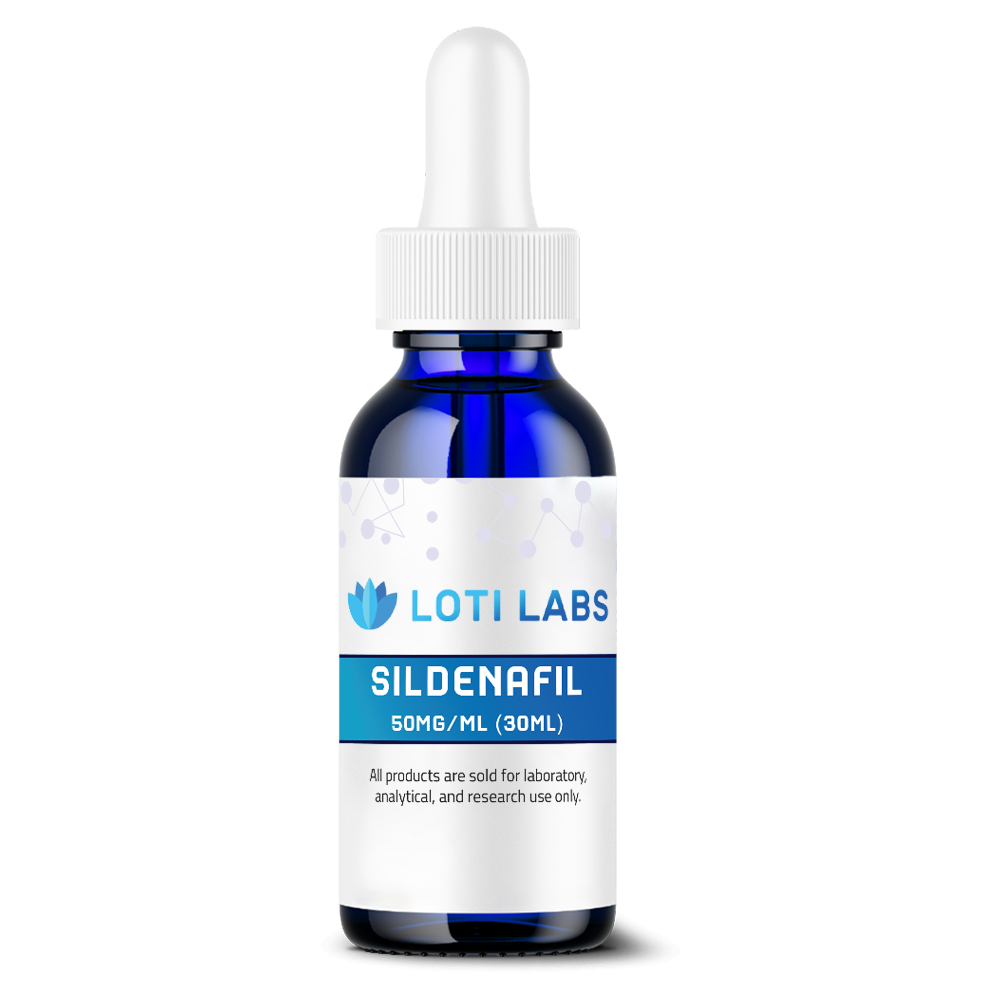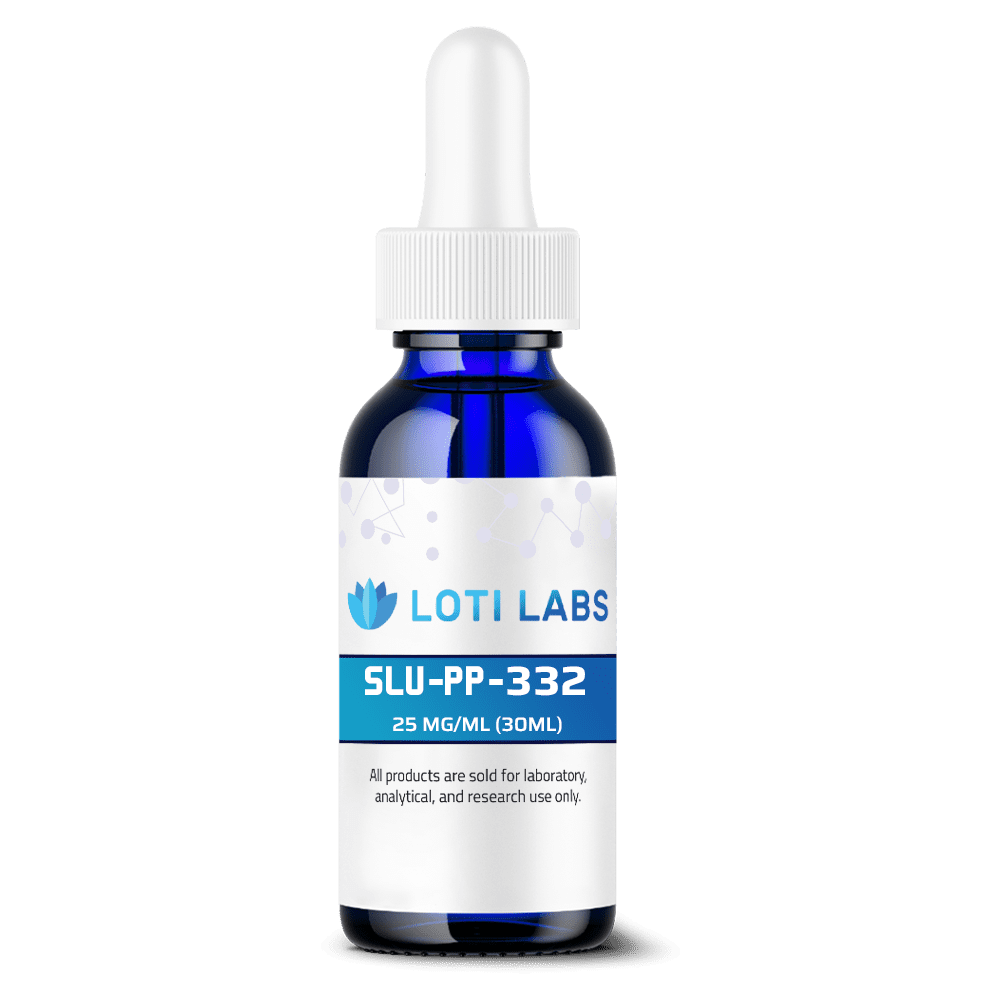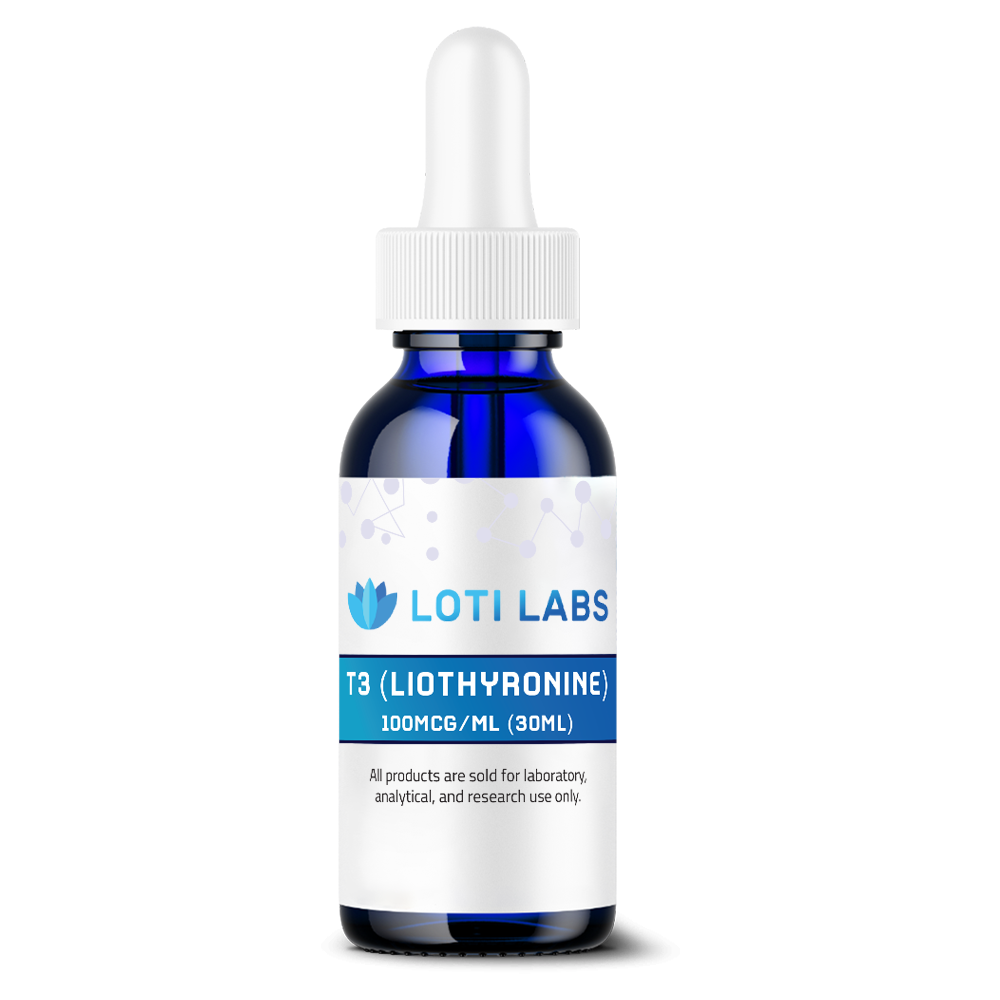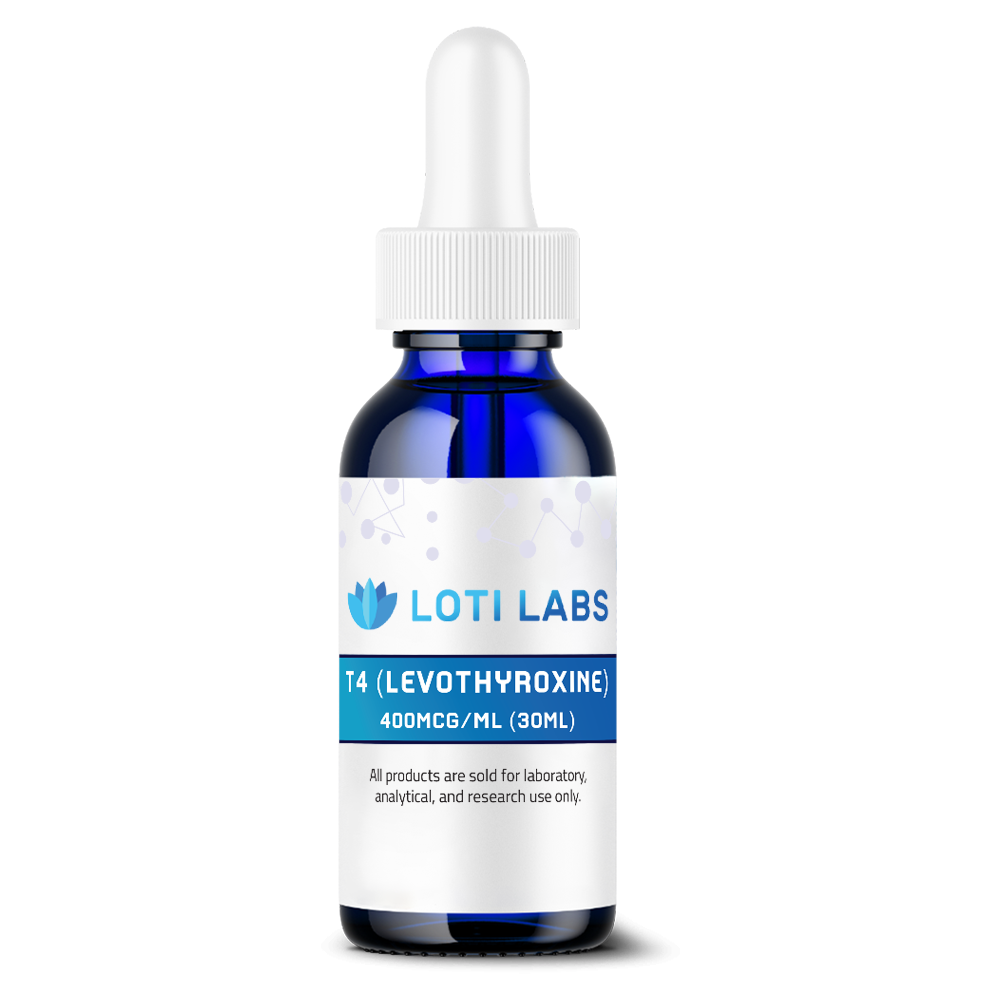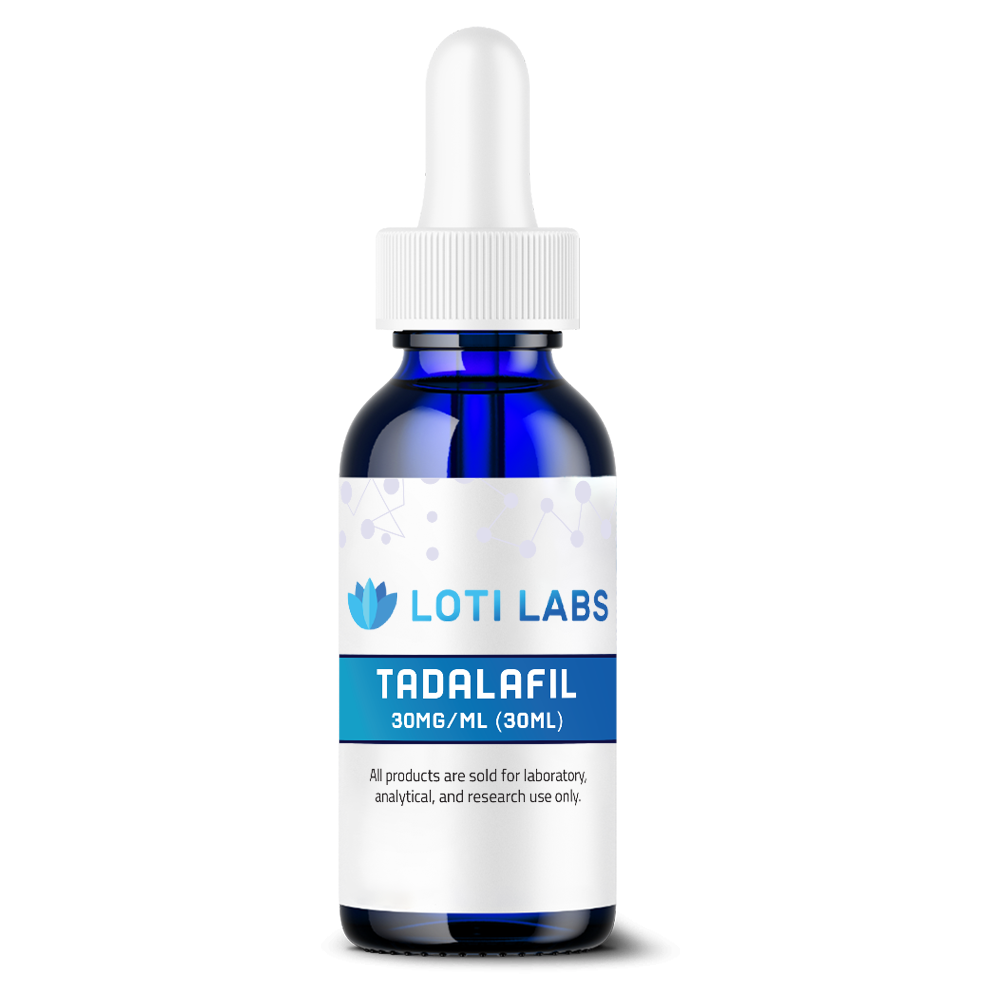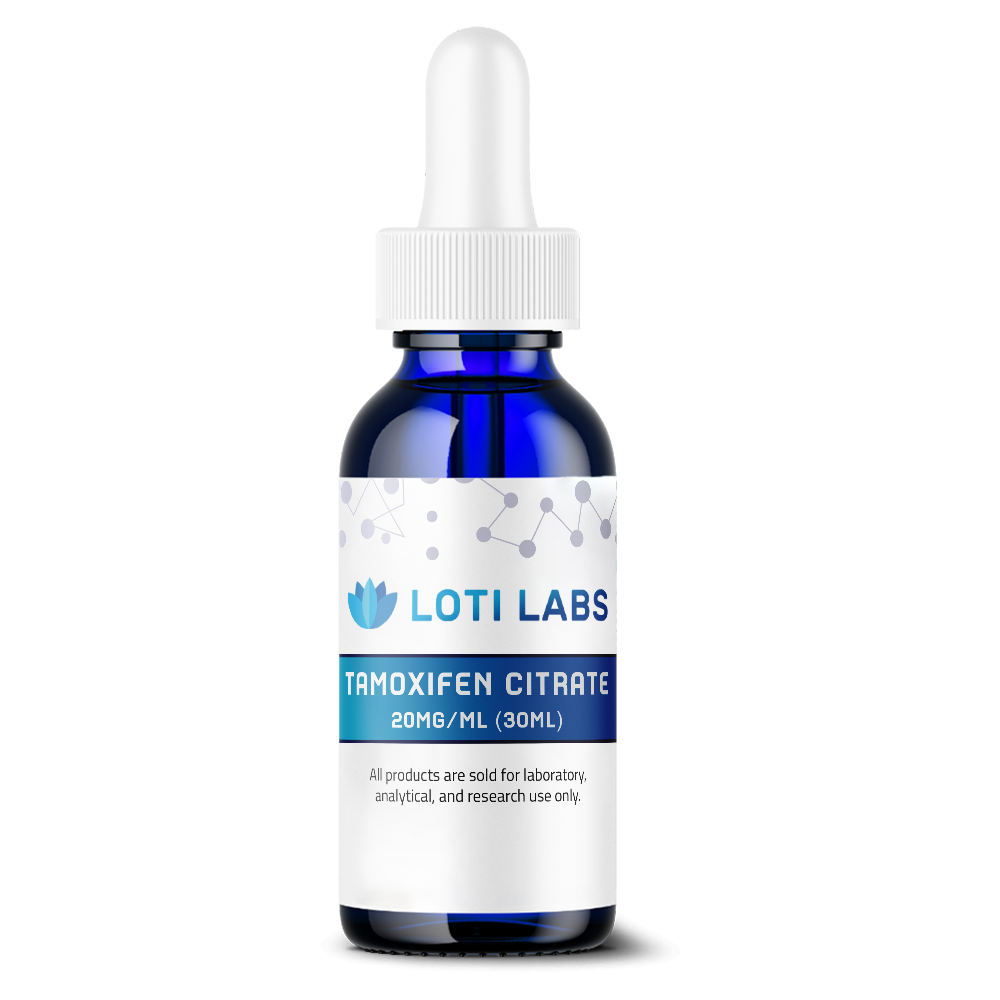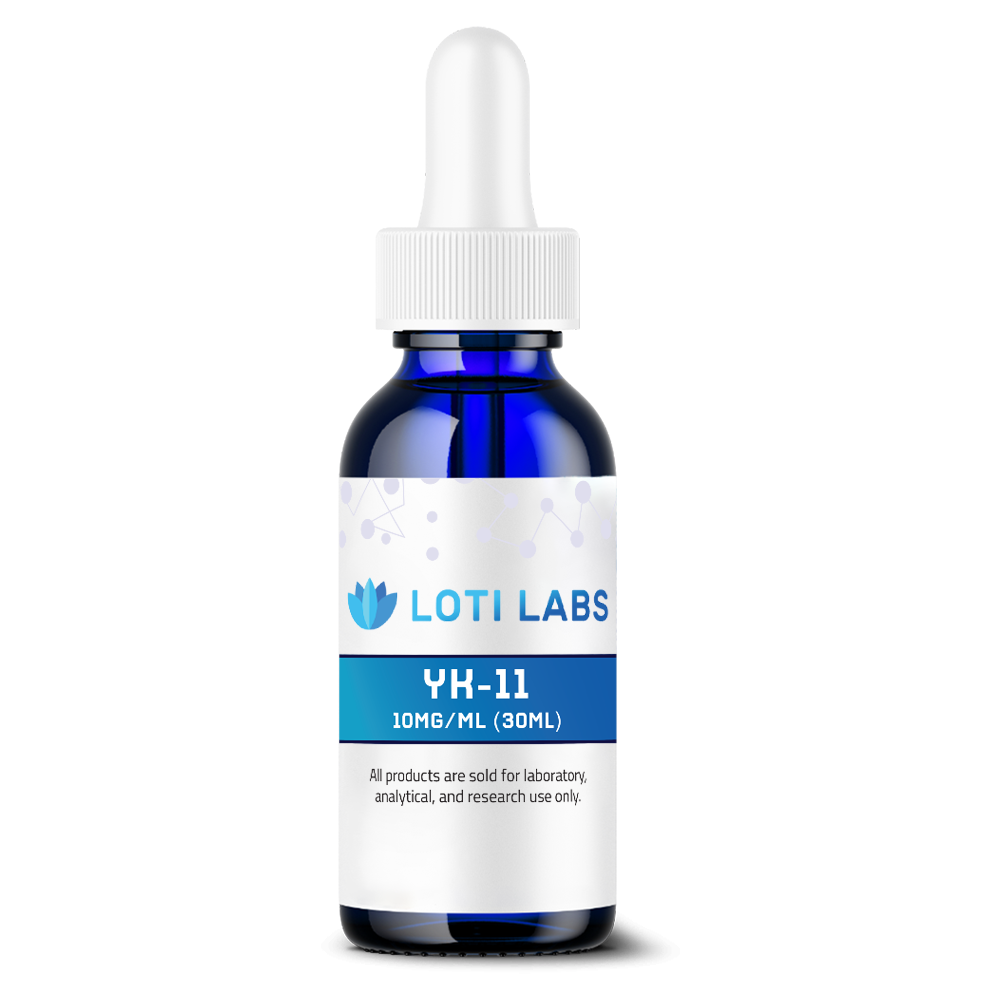Glow Blend 70mg (GHK-CU 50mg, BPC-157 10mg, TB-500 10mg)
$169.99
You save
This product is intended as a research chemical only. This designation allows the use of this chemical strictly for in-vitro laboratory testing and experimentation. Human or veterinary use is strictly forbidden. This product is not a drug, food or cosmetic and may not be misbranded, mislabeled or misused as such.

Buy Glow Peptide at Loti Labs: Advanced Multi-Component Research Compound
Research shows that multi-peptide combinations offer unique opportunities to study tissue regeneration mechanisms and cellular repair processes. The glow peptide is a new approach to peptide therapy research, combining three different compounds into one formula for lab use. Levels of certain peptides decline with age which can impact tissue repair, anti-inflammatory responses and skin health. This guide covers the molecular structure, research applications and sourcing for scientists looking to buy glow peptide for their protocols.
Understanding tissue repair and regenerative processes requires advanced research tools. The glow peptide formula provides researchers with a standardized combination that has been featured in regenerative medicine studies for its potential to advance our knowledge of wound healing mechanisms, anti-aging effects and cellular regeneration pathways. This research is highly relevant for anti-aging and reversing signs of aging as peptide therapies can stimulate collagen, elastin and tissue repair to promote youthful skin and overall health. Peptides are made up of amino acids which are the building blocks of proteins essential for tissue regeneration in the human body.
When sourcing research peptides it is important to get them from reputable suppliers not unregulated compounding pharmacies to ensure product quality and safety.
Molecular Structure of Glow Peptide 70mg
The glow peptide is a balanced combination of three primary research compounds: BPC-157 (10mg), TB-500 (10mg) and GHK-Cu (50mg). This multi-component formula allows researchers to study the synergistic effects of these naturally occurring protein fragments and copper peptides in a controlled lab environment.
Components:
| Component | Amount | Classification | Origin |
|---|---|---|---|
| BPC-157 | 10mg | Pentadecapeptide | Body protection compound derivative |
| TB-500 | 10mg | Protein fragment | Thymosin Beta-4 partial sequence |
| GHK-Cu | 50mg | Copper binding peptide | Naturally occurring copper complex |
BPC-157 is a pentadecapeptide derived from the body protection compound found in human gastric juice. Peptides like BPC-157 are made up of amino acids which are the fundamental building blocks of proteins involved in tissue repair and regeneration. Research shows this 15 amino acid sequence is involved in cellular signaling pathways that support tissue integrity and repair mechanisms. The molecular weight is approximately 1419 Da making it suitable for various experimental applications focused on tissue regeneration studies.TB-500 is a synthetic fragment of the naturally occurring protein Thymosin Beta-4, using a 17 amino acid sequence responsible for most of the bioactivity seen in lab studies. Thymosin Beta 4 is a hormone secreted by the thymus gland and is involved in immune function and tissue repair. It can stimulate the activity of immune cells including T cells and B cells which are important for tissue regeneration. Thymosin Beta 4 also supports the development of B cells into plasma cells which produce antibodies during tissue repair. With a molecular weight of approximately 4963 Da this protein fragment is relevant for research on cellular migration and tissue remodeling processes that occur post tissue injury.
The copper binding peptide GHK-Cu is the tripeptide Glycyl-L-histidyl-L-lysine in its copper bound form. GHK-Cu has high affinity for copper ions which is critical for its biological activity in tissue repair and regeneration. Research shows this naturally occurring copper complex found in human plasma, saliva and various biological fluids has molecular weights ranging from 340-400 Da depending on copper ions binding state and conformational changes. GHK-Cu can also stimulate the activity of immune cells further supporting tissue repair processes.
The total molecular weight of the glow peptide is variable due to the dynamic copper binding properties of the GHK-Cu component. Storage requirements for the lyophilized powder form is 2-8°C in dry conditions, reconstituted solutions are stable for up to 30 days under refrigeration.
Mechanism of Action in Research
Each component of the glow peptide has its own mechanism of action that can be studied independently or in combination. Research shows these compounds work through complementary pathways to understand tissue repair and regenerative processes in lab models.
BPC-157 Mechanism: Research shows BPC-157 promotes blood vessel growth through angiogenesis pathways, forming new vascular networks in experimental models. Studies show the compound enhances fibroblast migration, a critical cellular process for wound healing research. Also research demonstrates stimulating collagen production and reducing inflammatory cytokines such as TNF-alpha and IL-6, providing researchers with tools to study anti-inflammatory effects in controlled environment. BPC-157 also supports repair of damaged tissues by activating cells involved in tissue regeneration.TB-500 Research: Laboratory studies show TB-500 increases actin production, a cytoskeletal protein for cell structure and migration research. Research shows the compound promotes tissue remodeling while reducing fibrosis in experimental models. TB-500 helps cells migrate to sites of tissue injury and remodel damaged tissues. The protein fragment has anti-inflammatory action by downregulating NF-kB pathways, providing researchers to study inflammatory response and tissue regeneration processes.
GHK-Cu Research Properties: Research shows GHK-Cu is a delivery mechanism for copper ions into tissues, useful for metal transport and cellular uptake research. Laboratory studies show the copper peptides stimulate type I and III collagen synthesis, important for skin fibroblasts and structural protein production. Research shows the compound increases elastin and glycosaminoglycan synthesis while having potent antioxidant properties that researchers can study for oxidative damage protection mechanisms. GHK-Cu attracts immune cells to injury sites, facilitates tissue repair and regeneration. GHK-Cu has high affinity for copper ions which is essential for its role in promoting blood vessel growth and reducing inflammation.
The combination of these components provides researchers with a tool to study cellular repair mechanisms, tissue regeneration pathways and the complex processes involved in wound healing and skin regeneration research. The feedback signal generated after tissue injury occurs post tissue injury and is crucial for tissue remodeling and anti-inflammatory responses.
Research and Lab Findings
Multiple peer-reviewed studies support the research relevance of individual glow peptide components, providing scientists with evidence-based foundation for experimental design and protocol development.
GHK-Cu Research: Laboratory studies show significant effects on collagen and elastin synthesis in cellular models, research shows improved wound healing in experimental models. A 2018 review of copper peptides highlighted their potential roles in skin repair and regenerative processes, documented skin health parameters in in-vitro and in-vivo models. Research shows increased GHK-Cu levels correlates with tissue firmness and elasticity in lab studies. Recent studies have also explored GHK-Cu for hair regrowth by stimulating hair follicle regeneration.BPC-157 Experimental Data: Animal studies have shown BPC-157 accelerates healing in tendon, ligament and gastrointestinal tissues through angiogenesis and reduced inflammation markers. Peer reviewed research shows tissue repair in musculoskeletal injury models with reduced pro-inflammatory cytokines and normal body function restoration in experimental subjects.
TB-500 Lab Data: Research shows TB-500 promotes repair cell migration and reduces scar tissue formation in muscle, ligament and cardiac tissue models. Studies attribute these effects to upregulation of actin and supportive factors for cellular movement, making the compound useful for adaptive tissue repair and regenerative medicine research. Thymosin Beta 4 also supports B cells to develop into plasma cells which produce antibodies during tissue repair and immune response.
Clinical trials using glow peptide combinations have shown promising results in controlled studies, especially in tissue recovery and regenerative processes. However most of the evidence is in preclinical research, so the compound is for research use only. While some peptides are discussed for weight loss elsewhere, the main research focus for glow peptide is tissue repair, wound healing and regenerative processes.
Storage and Safety Protocols for Research
Proper handling and storage of glow peptide ensures research integrity and compound stability throughout experimental protocols. The lyophilized powder should be stored at 2-8°C in dry conditions to maintain molecular integrity and prevent degradation that could affect research results.
Reconstitution: Upon reconstitution with bacteriostatic water or appropriate saline solutions, the compound is stable for 30 days under refrigeration. All handling procedures should be done with sterile technique and protective equipment to ensure both researcher safety and compound integrity. Research labs should follow standard peptide handling protocols including glove use and sterile preparation areas.
Research Safety: All glow peptide components are for research use only, require compliance with institutional guidelines for experimental compound use. Lab protocols should address potential exposure risks and implement appropriate containment measures consistent with peptide therapy research standards. Researchers should maintain handling logs and follow institutional biosafety guidelines when working with these compounds.
Quality Assurance: Third party testing using High-Performance Liquid Chromatography (HPLC) ensures each batch meets research grade purity standards. This testing protocol confirms peptide sequence, concentration and absence of contaminants that could affect experimental results. Certificates of analysis provide researchers with composition data necessary for protocol development and result interpretation.## Administration and Concentration Protocol Guidelines for Research
Establishing precise administration and concentration protocols is crucial when working with peptide compounds like BPC-157, TB-500 and GHK-Cu in the lab. Research shows these compounds have interesting properties in lab studies of wound healing, tissue repair and regenerative processes. Careful handling protocols ensure reliable and reproducible results within research parameters.
For lab use, peptide compounds come in lyophilized powder form and need to be reconstituted with sterile bacteriostatic water or appropriate saline solutions. Researchers must use aseptic technique, sterile gloves, syringes and vials to prevent contamination and preserve substance integrity throughout experimental procedures. Accurate measurement of each peptide compound is critical for research validity; lab grade microbalances and calibrated pipettes are recommended to achieve precise concentrations especially when working with multi-component formulations like bpc 157 tb 500 and GHK-Cu for research.
Administration method depends on experimental design. In vitro research studies, peptide compounds can be added directly to cell cultures to observe effects on tissue repair mechanisms, collagen synthesis pathways or cellular migration patterns. For in vivo research models, administration is usually via subcutaneous or intramuscular injection at designated sites to study localized or systemic effects on healing processes and tissue regeneration in controlled lab conditions. All concentration protocols should be determined based on specific research objectives, experimental model or cell line used and concentrations required to observe measurable research outcomes.
Throughout the research process, documentation of concentration protocols, administration routes and timing is crucial for data integrity and experimental reproducibility. Researchers must follow institutional protocols and regulatory guidelines and ensure all peptide compound use is for research only. By following these research protocols, labs can get the most out of these compounds to advance scientific understanding of wound healing, tissue repair and regenerative research.
Why Buy from Loti Labs
Loti Labs stands out in the research peptide market with comprehensive quality assurance and researcher focused service protocols to support research requirements.
Same-Day Shipping: Orders placed before 1pm EST Monday through Friday ship same day to support time sensitive research and minimize experimental delays. This fast fulfillment is critical for researchers with tight experimental timelines or need compound ASAP for ongoing studies.30-Day Money Back Guarantee: Researchers can return unopened products within 30 days for full refund, reducing the risk of buying experimental compounds. This policy allows researchers to try the product and verify quality before committing to full experimental protocols.
Third Party Tested: Every batch is HPLC tested to confirm product purity, peptide content and contaminant free. This independent testing gives researchers confidence in the product and reproducible results. Certificates of analysis are included with every order for transparency of product composition and quality.
Research Grade: All products are clearly marked for research use only to comply with regulatory requirements and institutional research guidelines. This designation provides clarity on use context and helps researchers to comply with institutional and regulatory standards.
These features help to overcome common challenges in buying research compounds: quality variability, shipping delays and lack of documentation that can compromise experimental integrity.
Loti Labs Products are for Research Use Only
All products sold by Loti Labs, including glow peptide, are research chemicals for laboratory use only. This designation allows use only for in vitro laboratory testing and experimentation to support scientific research while being compliant with regulations.
Human or veterinary use is strictly prohibited under this designation. The glow peptide is not a substance for medical treatment, food supplement or cosmetic use and shall not be misbranded, mislabeled or misused as such. This clear designation protects both researchers and suppliers while ensuring appropriate use context for these research tools.
Research institutions and individual scientists must comply with institutional guidelines and regulatory requirements when purchasing and using these compounds. The research only designation supports legitimate scientific research while preventing misuse that can compromise safety or regulatory standing.
Loti Labs Shipping Policy
Loti Labs ships same day for orders placed before 1pm EST Monday through Friday to support researchers who need compound ASAP for ongoing studies. Orders placed after 1pm EST or on weekends ship next business day to maintain consistent fulfillment schedule that researchers can plan around.
The shipping infrastructure is designed to accommodate the time sensitive needs of research institutions and laboratories especially for compounds that require controlled temperature handling or expedited shipping to meet experimental schedule.
Guarantee
The 30-day money back guarantee applies to all products from Loti Labs. Researchers can return any unopened products for full refund of the purchase price. This policy reduces the risk of buying research compounds and allows researchers to try the product before committing to full experimental use.
Third Party Testing of Every Batch
Every batch of glow peptide is HPLC tested to ensure product purity and concentration. This independent testing confirms peptide sequence, identifies contaminants, and provides composition analysis that researchers need for protocol development and result interpretation.
Certificates of analysis are included with every order for transparency of product composition, purity and quality.
Research Applications and Future Directions
The glow peptide allows researchers to study multi-peptide interactions and their effects on cellular processes. Research suggests these combinations may provide insights into tissue repair mechanisms, wound healing pathways and the complex interactions between naturally occurring protein fragments and copper peptides in biological systems. Glow peptide research may also provide insights into supporting the immune system through activation of immune cells and tissue regeneration.
Current research trend is to use combination therapies that leverage the synergistic effects of different peptide classes. The glow peptide formulation provides researchers with a standardized tool to study these interactions in controlled laboratory environment to advance regenerative medicine research and our understanding of cellular repair mechanisms.
Researchers studying wound healing can use this compound to study the coordinated effects of angiogenesis promotion, cellular migration enhancement and collagen stimulation in experimental models. Research into skin regeneration benefits from the combination’s effect on collagen production, elastin synthesis and cellular repair that occurs post tissue injury. Peptides like GHK-Cu have also been studied for their potential to reduce wrinkles and improve skin elasticity as part of anti-aging research.
The wide range of research applications makes glow peptide very useful for interdisciplinary research into peptide therapy, regenerative processes and cellular biology. As research advances our understanding of these mechanisms, compounds like glow peptide will play more important role in developing new approaches to tissue repair and regenerative medicine.
For researchers who want to buy glow peptide for their research, Loti Labs provides the quality assurance, shipping reliability and research support for successful experimental outcomes. The combination of third party testing, same day shipping and research focused service makes it the best source for researchers who need reliable access to this multi-peptide research compound.Research into regenerative medicine requires research tools of high quality to study biological processes with accuracy and reliability. The glow peptide is one of those tools to advance our knowledge of tissue repair, wound healing and cellular regeneration in biological systems.
References
- Pickart, L., & Thaler, M. (2020). Copper peptides and their role in skin repair and regenerative processes. Journal of Dermatological Science. https://doi.org/10.1016/j.jdermsci.2020.01.003
- Sikiric, P., et al. (2020). BPC-157 and its effects on tissue healing and inflammation reduction. Peptides. https://doi.org/10.1016/j.peptides.2020.170428
- Moro, T., et al. (2019). TB-500 and its role in cell migration and tissue remodeling. Experimental Cell Research. https://doi.org/10.1016/j.yexcr.2019.111678
- Loti Labs. (n.d.). Glow Peptide Product Information and Quality Assurance. Retrieved from https://lotilabs.com/products/glow-peptide
- HubMedEd. (2023). Glow Peptide Injection: A Revolutionary Approach to Skin Rejuvenation. Retrieved from https://www.hubmeded.com/blog/glow-peptide-injection-a-revolutionary-approach-to-skin-rejuvenation
- Paramount Peptides. (n.d.). Glow GHK-CU / BPC-157 / TB500 Peptide Blend. Retrieved from https://paramountpeptides.com/products/glow-ghk-cu-27mg-bpc-157-5mg-tb500-10mg
| Weight | .03125 lbs |
|---|
